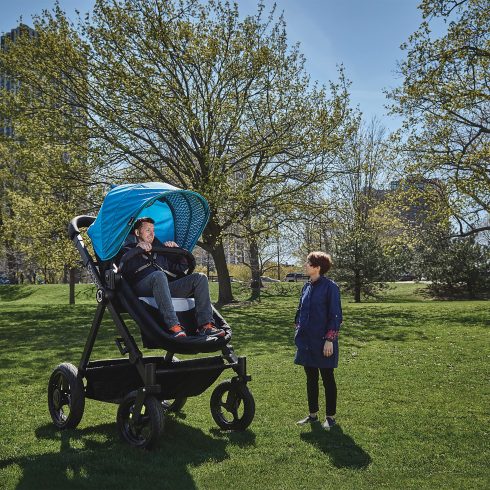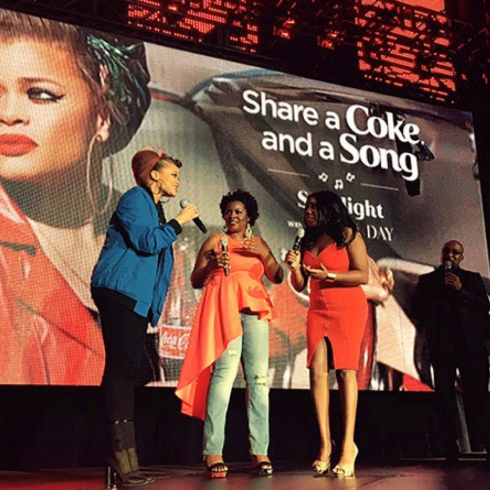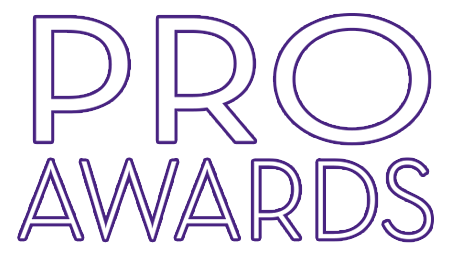
For 27 years the PRO Awards has been the world’s leading recognition program for excellence in brand activation and promotion marketing. From buzz campaigns and digital marketing, to influencer programs and experiential activations, and beyond… this is your ‘look book’ into the best campaigns of the year—awarded by a panel of over 30 leading brand-side marketers. Over 1,500 entries were submitted from around the globe. And these campaigns were named the best of the best.
The 2017 PRO Awards
Platinum PRO – Honors the Overall Best Campaign of the Year

Client: Contours
Campaign: FCB Chicago
Agency: The Baby Stroller Test-Ride
Best Campaign on a Budget (Under $250,000)—Gold Winner
Best Use of Social/Viral Marketing in a Campaign—Gold Winner
Best Use of Event or Experiential Marketing (More than Five Venues)—Honorable Mention
When shopping for baby strollers, research can help you determine whether the options meet safety criteria. But determining how comfortable the strollers are for their petite passengers is more difficult—after all, babies can’t tell you after a test drive, “Ouch, the seat incline hurts my neck” or “Oof, this is one bumpy ride.” So Contours, a maker of premium strollers, decided to give adults a test drive instead, in an adult-size replica of its Bliss stroller.
Contours had a pint-size budget of just $55,000. So rather than creating adult versions of its strollers for multiple retailers nationwide, it offered test rides to shoppers only in select Buy Buy Baby stores. Those who agreed to climb up in the giant stroller and be pushed along sidewalks and in parks were filmed to create attention-grabbing digital content that Contours disseminated via Facebook, Twitter, Periscope and YouTube ads as well as on its own social channels.
The video of grown men and women commenting on the comfort of the ride while being babied in a huge buggy generated plenty of giggles among viewers—and plenty of social sharing. In less than a month the video earned 53 million views, fueling a Twitter conversation that reached 48 million people and contributing to 479 million earned media impressions, with Good Morning America and Today, among others, covering the campaign.
All this buzz led to a 225% leap in traffic to the product pages of Contours’ website and a 15% push in year-over-year unit sales per store per week. Contours’ parent company, Kolcraft, was pleased enough by the results that it is considering adapting the tactic for some of its other baby products—so if you come across an adult-size baby carrier on your travels, don’t be surprised.
Gold Winner
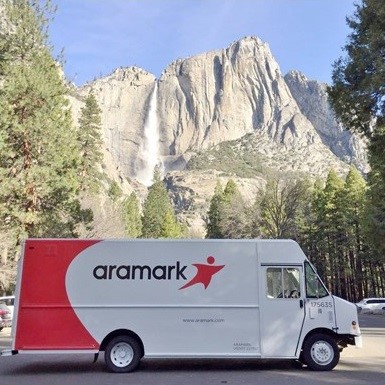
Client: Aramark
Campaign: Powering Experiences at Our National Parks
Best B2B Campaign – Gold Winner

Client: Aramark
Campaign: Powering Experiences at Our National Parks
Chances are good that you’ve availed yourself of an Aramark service recently. Chances are also good that you probably were unaware of doing so. Aramark provides food, facility, hospitality and uniform services to a vast array of schools, stadiums, conference centers and other venues, but usually it does so invisibly, with any signage or branding bearing the client’s name. That certainly makes it challenging for Aramark to receive credit for a job well done or garner recognition among potential clients.
As it happened, last year Aramark signed Yosemite National Park as a signature client, just prior to the National Park Service’s centennial celebrations. To capitalize on all the attention the parks would be receiving, Aramark created videos explaining the services it provides to various parks—not just food at visitor centers and uniforms for staff but also running tours, creating waste-management programs, and implementing water-conservation efforts.
The videos were integrated into Facebook, Instagram and LinkedIn ads. To reinforce the messaging, Aramark trained its sales and marketing teams so that they could use the content as a jumping-off point for initiating or continuing discussions with prospective customers. Programmatic technology helped target the specific business niches Aramark wanted to reach; the panoramas of the Yosemite, Denali and Lake Powell parks that opened the videos certainly caught the audience’s attention—and the attention of those with whom viewers shared the content.
On August 25 along, the National Park Service Founder’s Day, Aramark’s Facebook ad was viewed by more than 1 million people, making it the most-shared post in the company’s history. Its celebratory LinkedIn post generated a clickthrough rate 1.5 times higher than benchmark and an engagement rate 3.5 times higher. During the campaign Aramark’s website traffic was up 15% year over year, while the number of leads rose 25%.
Beyond those quantifiable metrics, Aramark also increased awareness of the National Park Service. And it boosted morale and company pride among employees, who like Aramark itself, no doubt enjoyed gaining recognition for a job well done.
Silver Winner

Client: Vidyard
Campaign: Video Marketing Maturity Model
Best B2B Campaign – Silver Winner

Client: Vidyard
Campaign: Video Marketing Maturity Model
Video platform Vidyard wanted to drive leads into the pipeline, build detailed prospect profiles and generate sales opportunities while positioning itself as a though leader in the space.
The target audience was demand gen marketers, marketing managers, content marketers and video producers in businesses with more than $5 million in annual revenue that were using a marketing automation platform and utilizing video.
Vidyard partnered with SnapApp to deliver an interactive questionnaire to not only gather information but engage prospects in a powerful way. The Video Marketing Maturity Model & 2-Minute Interactive Assessment was created to outline four stages of video maturity, from the beginner who is just starting to use video, to the video master who is effectively utilizing both an internal and external video team.
For the campaign, SnapApp was integrated with Vidyard’s instance of Marketo to feed the data into Salesforce. The Vidyard sales team was routed qualified leads from the campaign and followed-up to offer actionable insights on how each marketer could take their organization to the next level of video marketing maturity. Anyone that wasn’t followed up with by sales was added to a marketing email nurture program.
After this first touch, users were invited to take the 15 question assessment through various methods, including email, social, SEM and content marketing initiatives. They could then fill out a form to get their “video marketing scorecard,” and could watch a video about their rank. Next, sales would follow-up with a specific content package or add them to a custom-tailored marketing nurture based on their ranking.
The 2-minute assessment had 2,890 unique views, 811 form submits, and a completion rate of 67%. The campaign in its entirety has generated more than 1,000 inquiries and over 800 qualified leads for the sales team, and influenced more than $650,000 in qualified pipeline and over $100,000 in closed revenue within 3 months, with a less than $10 cost per lead.
Bronze Winner

Client: Microsoft
Campaign: Microsoft Ignite 2016 Demand Generation
Agency: Wire Stone
Best B2B Campaign – Bronze Winner

Client: Microsoft
Campaign: Microsoft Ignite 2016 Demand Generation
Agency: Wire Stone
Microsoft needed to inspire 15,000 tech professionals to register for the Microsoft Ignite event in Atlanta. The catch was that that it needed to happen through a demand gen campaign—with no paid media.
The audience was tech savvy, and marketing-averse, and registration was $2,200, plus travel and expenses for five days. Pair that with a location and date change shortly after the campaign kick-off, and you had a tough task. Nurturing engagement over the 10 months leading up to the event with this tough audience was key.
An integrated campaign was created, focusing on timely messaging and relevant themes delivered through owned and earned channels. A plan was built around event milestones and available content, defining a sustainable cadence through myriad owned and earned channels, including email, newsletters, banners and social. Registration toolkits were created for internal and external teams, sales teams, company partners, event sponsors, and registered attendees.
A full audit of all Microsoft Ignite social channels established best practices and created a strategy to build engagement. A campaign theme and style guide for the 2016 event was created and used not only for social and digital advertising but a direct mail “ninja papercraft” design as well, to generate organic buzz.
Email was the best performing tactic at driving registration. A steady stream of useful information prepared registrants and built anticipation for the event.
Via social, the community responded well to a cast of recurring characters designed to surprise and delight, so the audience was invited to choose their favorite to grace the official event T-shirt.
Nearly two months before the event, 23,000 attendees were secured, making 2016 Microsoft Ignite event the largest in-person Microsoft event of all time. Expectations were blown away in the social sphere, with 93,390 total social mentions during the five days of the event, compared to fewer than 15,000 the year before.
Gold Winner
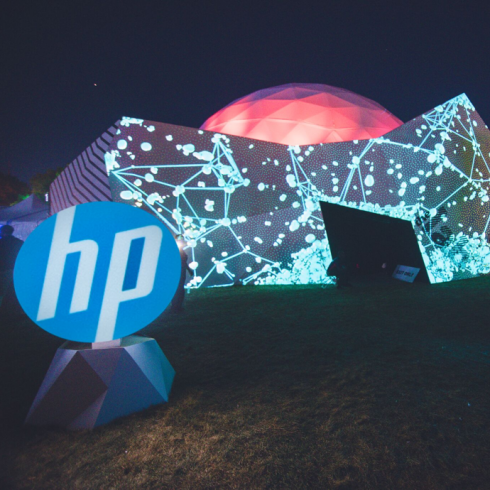
Client: HP
Campaign: Panorama Music Festival Activation
Agency: Infinity Marketing Team
Best Brand Awareness Campaign – Gold Winner

Client: HP
Campaign: Panorama Music Festival Activation
Agency: Infinity Marketing Team
When a brand wants to reach young millennials, establishing a presence at a music festival is an obvious option. Because it’s obvious, however, many other companies do the same. To break through the noise, so to speak, of other marketers at New York’s inaugural Panorama festival, HP expanded beyond music to provide attendees with an immersive multisensory experience.
HP’s goal was to improve the perception of its brand, and in particular of its convertible laptops, among millennials in the critical back-to-school period. The three-day Panorama festival took place in late July, perfect timing for HP. To show off its dynamic range of offerings, HP established or powered three physical areas of the festival.
The Lab showcased 11 participatory art installations powered by its products; for instance, “Reflection Studies” allowed guests to manipulate the light patterns via an HP workstation. The Dome was even more immersive: a 360-degree video arena with 45 minutes of original audio and visual content including motion design and dynamic illustrations. At the HP Lounge, attendees could try out a number of the company’s tablets, laptops, and other products by, say, creating and printing temporary tattoos via a Sprout computer and scanner system. The Lounge also hosted DJ sets accessible only to attendees who’d engaged in enough #PanoramaHP social activations to be granted exclusive wristbands.
This incentive to spread the word via social media contributed to the more than 40.5 million social media impressions achieved via #PanoramaHP and influencers—nearly three times HP’s goal of 15 million. And that’s not the only goal the campaign exceeded. Total impressions tallied more than 5 billion, over 10 times the original objective. Just shy of 29,000 visitors took part in HP’s on-site activities, nearly twice the company’s goal. And from June to August, HP’s share of the convertibles market grew to 30.1% from 23.7% the previous year. In its efforts to break through the competitive noise, HP achieved results worth cheering about.
Silver Winner
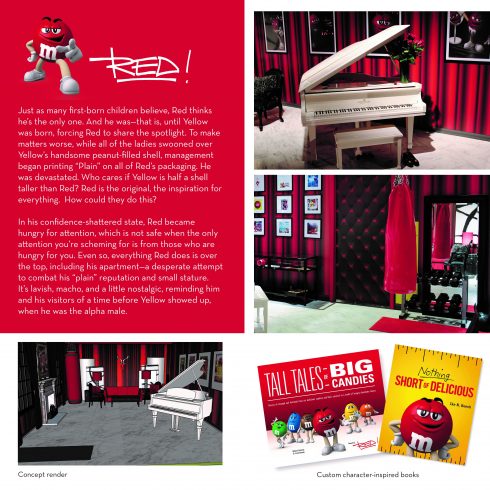
Client: Mars Chocolate North America
Campaign: M&M’S 75th Anniversary
Agencies: Weber Shandwick, Jack Morton Worldwide, Genuine
Best Brand Awareness Campaign – Silver Winner

Client: Mars Chocolate North America
Campaign: M&M’S 75th Anniversary
Agencies: Weber Shandwick, Jack Morton Worldwide, Genuine
M&M’S 75th Anniversary provided the backdrop for Mars to not only showcase the brand’s history but to create a modern experience completely centered around M&M’S most beloved asset: the spokescandies.
Life-sized apartments meticulously designed for all six M&M’S spokescandies were created right in the middle of NYC. Each apartment exemplified the unique personalities of the individual spokescandies and seamlessly showcased history in a way that felt authentic and innovative.
For example, Red’s was lavish and super-macho to convey his “plain M&M’S” reputation, while Orange’s was a “safe zone” to ease his paranoia about being eaten. From the walls and room décor, to each custom-designed coffee table book, no detail was overlooked to bring 75 years of history to life in the spokescandies’ natural environment.
Each room featured interactive engagements designed for social sharing. Guests could play the piano in Red’s room, jump in the ball pit in Yellow’s pad, try on shoes in Ms. Green’s room, or even hide out in Orange’s panic room wearing one of his many disguises. The entire evening was capped off by an exclusive live performance of M&M’S 75th Anniversary Anthem “Candyman” by Aloe Blacc and DJ Zedd, right in the spokescandies’ living room. More than 400 guests attended the party, including 140 media/influencers, whose shares resulted in 6.9MM impressions—with many sharing more posts than their original contracts
To ensure that those who could not make it to the super-secret apartments could have the same immersive experience, 360-video was shot for each room to create an exact replica of the apartments as a virtual reality app. Every live detail was captured and brought to life digitally, allowing users to navigate the apartments and zoom in on every element that brought each spokescandy to life. This extension gave anyone the chance to walk through the apartments and take in every bit of delicious history.
The campaign generated more than 341 million impressions and growing. Coverage of the 75th anniversary milestone appeared in top industry and entertainment outlets including the TODAY Show, USA Today, Adweek, CNBC, Parade, iHeartRadio and Billboard. Now that’s sweet!
Bronze Winner
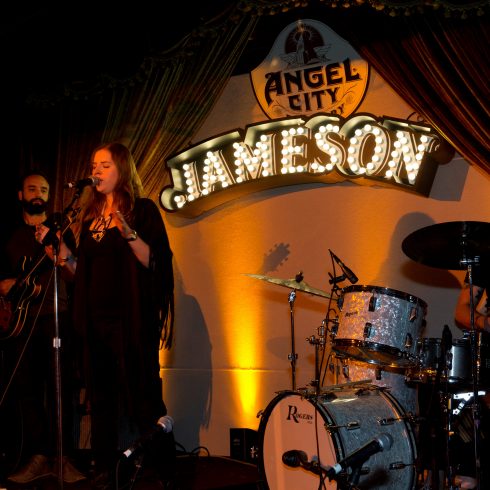
Client: Jameson
Campaign: Jameson Caskmates
Drinking Buddies
Agency: Legacy Marketing Partners
Best Brand Awareness Campaign – Bronze Winner

Client: Jameson
Campaign: Jameson Caskmates
Drinking Buddies
Agency: Legacy Marketing Partners
Jameson’s Caskmates is a new spirit created by finishing Irish whiskey in beer barrels. To help introduce it, Pernod Ricard USA and Jameson completed the cycle by taking those whiskey soaked barrels and letting craft beer makers in seven U.S. markets use them to create new brews.
The resulting beers were part of the Drinking Buddies campaign, where invite-only tasting events helped the breweries expand their appeal and Jameson reach new audiences.
Craft beer drinkers tend to be experimental, willing to try any new brew, but dedicated whiskey drinkers are a tougher sell. By infusing one of their beers with a flagship brand like Jameson, the breweries were more likely to get whiskey drinkers to try their beer, creating new customers rather than just indulging the adventurous tendencies of their existing clientele.
Seven geographically dispersed markets were chosen for the events. The cities had a strong presence of imported whiskey drinkers, with a particular focus on mature Generation Xers with more disposable income and spirits experience rather than younger millennials, though the campaign was designed to appeal to them as well.
So the breweries could time production of their beers, a four-month schedule of Jameson Caskmates Drinking Buddies launch events were planned, starting in late summer of 2016 with an event in each market. These keg-tapping celebrations were collaborative efforts, co-planned by Jameson and the brewery, both inviting brewery regulars and trade reps.
Each event hosting a Drinking Buddies activation was like a mini-seminar about the products, allowing attendees to express their passion for craft beer. Locations included Seattle’s Bohemian Fremont neighborhood, the Tremont area of Cleveland, Denver’s LoDo and a disused train station in South Downtown Tampa.
Jameson Caskmates was Jameson’s most successful new product launch ever. The seven launch events generated high brand visibility in local markets, and Drinking Buddies will more than double in scale for 2018, to 17 markets. Existing partner breweries are eager to continue involvement, while those in new markets are vying for a spot to participate. It’s easy to see why: In markets with Drinking Buddies activation, Caskmates’ sales were more than a third greater than in markets with no activation, a 135% increase.
Gold Winner
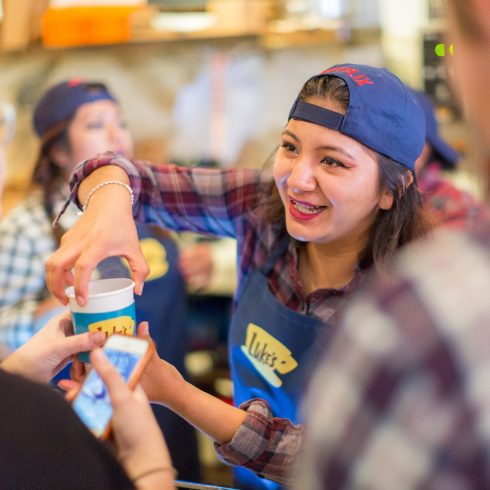
Client: Netflix
Campaign: Gilmore Girls Luke’s Coffee Day
Agency: Allied Experiential
Best Buzz – Gold Winner

Client: Netflix
Campaign: Gilmore Girls Luke’s Coffee Day
Agency: Allied Experiential
Fans of Gilmore Girls, which aired from 2000 to 2007, are as passionate about the TV series as the titular characters, Lorelai and Rory, are about coffee. So when Netflix wanted to promote its exclusive miniseries Gilmore Girls: A Year in the Life, coffee clearly had to be a key element of the campaign.
On Oct. 5, the anniversary of the series’ premiere, Netflix and agency Allied Experiential created across the U.S. and Canada 207 replicas of Luke’s Diner, the fictional eatery where much of Lorelai’s and Rory’s coffee consumption occurred. Rather than establish pop-up shops, they temporarily took over mom-and-pop coffee shops in areas with a significant number of young women and professionals, the series’ primary audience. The baristas wore branded Luke’s aprons and caps (the latter backward, as on the show); the Luke’s logo appeared on the front of the shops (perfect for fans’ selfies); Luke’s infamous “No cell phones” rule was strictly reinforced. A life-size standee of Luke appeared in each location—except in Beverly Hills, where Scott Patterson, the actor who played Luke, served up coffee in person.
Netflix did not even hint at the promotion in advance, allowing fans to discover the replica Luke’s Diners themselves the morning of Oct. 5. To encourage those fans to spread the word, the takeaway coffee cups were printed not only with quotes from Gilmore Girls but also with a Snapchat code that earned imbibers a themed filter for 24 hours. To add to the already considerable surprise and delight, 15,000 cups also included a code for three free months of Netflix.
Throughout the day, the replica diners gave away 51,750 cups of coffee. All that caffeine led to the hashtags #HappyBirthdayGilmore, #Lukes, and #GilmoreGirls generating more than 335,000 impressions on Instagram and Twitter, and the Snapchat filter reaching more than 500,000 unique users.
Silver Winner
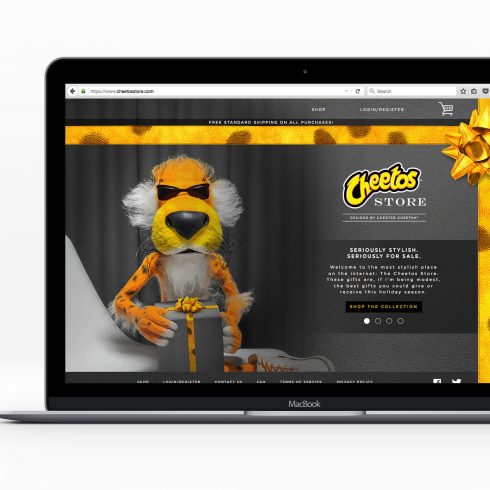
Client: Frito-Lay
Campaign: Cheetos Store
Agency: The Marketing Arm
Best Buzz – Silver Winner

Client: Frito-Lay
Campaign: Cheetos Store
Agency: The Marketing Arm
During the Christmas season, consumers’ thoughts turn to gifts, ornaments, mistletoe, and eggnog. What they don’t turn to are Cheetos. The snack food’s parent company, Frito-Lay, changed that by launching a line of Cheetos-branded gifts. Purportedly designed by Cheetos mascot Chester Cheetah, the offering ranged from Couleur de Cheetos Bronzer (a bold orange hue, of course) and Cheeteau Perfume to the Purrfect Onesie pajamas and the $20,000 Eye of the Cheetah ring-and-earring set.
Available on a dedicated website, CheetosStore.com, the products were the first nonfood items Frito-Lay ever sold. The website debuted on Black Friday; to promote it, Frito-Lay and The Marketing Arm created a video of a Cheetos fashion show, complete with models parading down the runway garbed in leggings adorned with Cheetos logos and orange scarves and cummerbunds emblazoned with black paw prints. The video played in a shoppable Facebook Collection ad, which generated more than 1.5 million visits to the Cheetos Store site. A print mail piece reminiscent of the glamorous holiday catalogs by the likes of Neiman Marcus and Tiffany also promoted the line.
The novelty of the range captured the attention of consumer and trade press, which combined with social media, resulted in more than 1.3 billion impressions in the six weeks between Thanksgiving and Christmas. The millennials who were the target market for the campaign ate up the cheesy yet weirdly chic products. Most items—including the $20,000 jewelry set—sold out in the first week, and the ultimate sell-through rate exceeded 93%. What’s more, the gift collection made shoppers hungry for Cheetos as well, with holiday season sales of the snacks up 10.5% from the previous year.
Bronze Winner
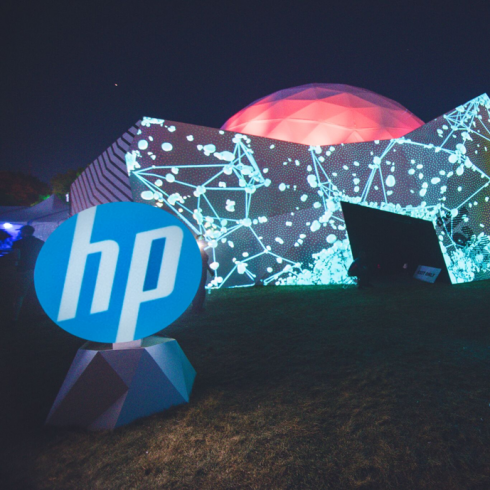
Client: HP
Campaign: Panorama Music Festival Activation
Agency: Infinity Marketing Team
Best Buzz – Bronze Winner

Client: HP
Campaign: Panorama Music Festival Activation
Agency: Infinity Marketing Team
Millennials love experiences, which made partnering with AEG/Golden Voice’s inaugural East Coast festival, Panorama a natural when HP wanted to gain credibility with the young audience at back-to-school time.
HP’s goal was to drive awareness, emotional connection, preference and purchase intent for HP convertible laptop products through high engagement. The strategy was to present experiences aimed specifically at both mature millennials, age 21-30, who have a moderate but increasing income, and young millennials, ages 15-20, who still live at home and look to mom and dad for their tech purchases.
The Panorama festival was an ideal platform to showcase how HP devices could help active millennials make the most of their entertainment, linking technology, music and art in multi-sensory installations.
HP’s presence at Panorama was divided into three spaces, powered by HP workstations and technology, displays, tablets and laptops. The Lab was a brand experience playground with 11 immersive art installations, while the Dome was a fully immersive, 360° 4k HP video arena showcasing original art studio content. The HP Lounge was an engagement zone for HP devices where attendees could hands-on interactions with the brand’s offerings amongst world-class DJ sets.
To get Gen Z in the mix, HP enlisted art students at the Bronx Academy of Letters in a “create-a-thon” with HP Sprout devices to create designs for colorful vinyl wristbands attendees used to gain access to HP’s footprint at the festival.
On-site activations were accompanied by influencer involvement, social amplification and press engagement at the festival, on Randall’s Island in New York.
The results? A whopping 5,073,005,097 impressions from Panorama and HP digital, video reach, original placements, social media influencers and owned social properties blew away expectations, more than 10x the benchmark goal. And, 40,510,550 social media impressions were achieved with #PanoramaHP and social influencers, nearly tripling HP’s social media goal. Nearly 29,000 visitors participated on-site, with an average dwell time of 37 minutes, nearly doubling the initial goal.
Gold Winner

Client: Contours
Campaign: The Baby Stroller Test-Ride
Agency: FCB Chicago
Best Campaign on a Budget (under $250,000) – Gold Winner

Client: Contours
Campaign: The Baby Stroller Test-Ride
Agency: FCB Chicago
When shopping for baby strollers, research can help you determine whether the options meet safety criteria. But determining how comfortable the strollers are for their petite passengers is more difficult—after all, babies can’t tell you after a test drive, “Ouch, the seat incline hurts my neck” or “Oof, this is one bumpy ride.” So Contours, a maker of premium strollers, decided to give adults a test drive instead, in an adult-size replica of its Bliss stroller.
Contours had a pint-size budget of just $55,000. So rather than creating adult versions of its strollers for multiple retailers nationwide, it offered test rides to shoppers only in select Buy Buy Baby stores. Those who agreed to climb up in the giant stroller and be pushed along sidewalks and in parks were filmed to create attention-grabbing digital content that Contours disseminated via Facebook, Twitter, Periscope and YouTube ads as well as on its own social channels.
The video of grown men and women commenting on the comfort of the ride while being babied in a huge buggy generated plenty of giggles among viewers—and plenty of social sharing. In less than a month the video earned 53 million views, fueling a Twitter conversation that reached 48 million people and contributing to 479 million earned media impressions, with Good Morning America and Today, among others, covering the campaign.
All this buzz led to a 225% leap in traffic to the product pages of Contours’ website and a 15% push in year-over-year unit sales per store per week. Contours’ parent company, Kolcraft, was pleased enough by the results that it is considering adapting the tactic for some of its other baby products—so if you come across an adult-size baby carrier on your travels, don’t be surprised.
Silver Winner

Client: KitchenAid
Campaign: KitchenAid 10,000 Cupcakes
Agency: Catapult
Best Campaign on a Budget (under $250,000) – Silver Winner

Client: KitchenAid
Campaign: KitchenAid 10,000 Cupcakes
Agency: Catapult
KitchenAid was looking to drive consumer awareness and influencer recommendations, elevate the brand, and maintain a strong in-store presence and positive share-of-mind with sales associates.
In addition, KitchenAid also hoped to strengthen its 14-year “Cook for the Cure” partnership with Susan G. Komen by by ramping up its “10,000 Cupcakes, One Great Cause” campaign.
KitchenAid customers are passionate cooks who love to express their creativity on social media, over-indexing for sharing food photos. They’re passionate about causes, but had become skeptical that simply purchasing ‘pink products’ makes a difference.
To meet its objectives, instead of asking for money, “10,000 Cupcakes, One Great Cause” asked consumers to bake cupcakes, snap a picture and share on Twitter/Instagram with thehashtags #10000cupcakes #donate. For each post, KitchenAid pledged a $1 donation to Susan G. Komen to support the fight against breast cancer, up to $10,000.
With a total campaign budget of $90,000, this mechanism was simple and fun. Cooking enthusiasts got to exercise their passion for making treats, while those living with breast cancer received a symbolic offering of love and caring. Leveraging the current cupcake craze, it aligned perfectly with both the KitchenAid brand equity and mission of Susan G. Komen.
Throughout October—Breast Cancer Awareness month—consumers saw Susan G. Komen talk up the program nationally and locally through social posts and saw fresh posts about the program from KitchenAid.
When consumers got to a retail store, they were wowed by giant “10,000 Cupcakes, One Great Cause” posters, festive pink balloons, photo backdrops, photo booths, recipe brochures and table tents directly on KitchenAid appliances that linked the brand to the cause.
Bronze Winner
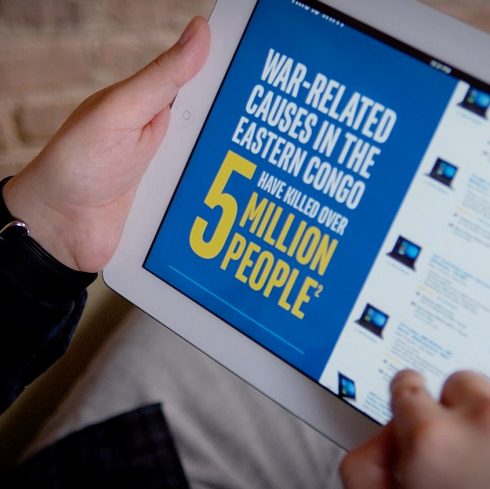
Client: Intel
Campaign: Conflict Free Retail
Agency: Arc Worldwide
Best Campaign on a Budget (under $250,000) – Bronze Winner

Client: Intel
Campaign: Conflict Free Retail
Agency: Arc Worldwide
To say the objective of Intel’s Conflict Free Retail campaign was broad is an understatement: The mission was literally to change the supply chain of an entire industry.
In the past, vicious militias in the Congo were funded by the minerals used to make processors. Similar to the mining of “blood diamonds,” these militias oppressed the miners and committed atrocities, killing 5 million people and driving millions from their homes since 1998 to fund wars against the people of the Congo.
Intel’s CEO Brian Krzanich made a commitment that Intel would only use conflict free minerals, sourced from humanely operated mines independently audited to ensure the profits don’t deliver to warlords.
The company wanted to create awareness and empathy among PC shoppers to help persuade the rest of the industry to follow suit. The broadness of Intel’s target added to the challenge. PC shoppers range from tech-savvy millennials to cash-strapped students; moms to gamers; execs to the creative class.
With no budget for above the line advertising in 85% of the countries it is in around the world, Intel needed to create awareness for what conflict free material really meant. That made mobilizing every possible retail messaging touchpoint essential.
Intel began by transforming the ubiquitous “Intel Inside” badge to tell a deeper story about the brand’s commitment to conflict free minerals. Retail assets like table tents and tear pads also relayed the message, making the content sharable via either a Shazam bug or a text-for-content blurb that enabled shoppers to stream a brutally honest video about the issue in the Congo.
Retailers also integrated the assets into their e-commerce category and product pages without the “pay for retail real estate” model utilized in many cases. The call to action was simple and empowering: “Intel made a choice. You can too.”
In 2016, the massive global retail adoption of the program (50 countries, deployed on the screens of over 400,000 devices) contributed to Intel’s best Q4 in company history. In the US, Intel experienced the best Black Friday in company history. Intel’s main competitor followed its lead and announced that all of its processors would be made from minerals sourced from conflict free mines as well.
Gold Winner

Client: Frito-Lay
Campaign: Cheetos Store
Agency: The Marketing Arm
Best Campaign Targeting Millennials – Gold Winner

Client: Frito-Lay
Campaign: Cheetos Store
Agency: The Marketing Arm
During the Christmas season, consumers’ thoughts turn to gifts, ornaments, mistletoe, and eggnog. What they don’t turn to are Cheetos. The snack food’s parent company, Frito-Lay, changed that by launching a line of Cheetos-branded gifts. Purportedly designed by Cheetos mascot Chester Cheetah, the offering ranged from Couleur de Cheetos Bronzer (a bold orange hue, of course) and Cheeteau Perfume to the Purrfect Onesie pajamas and the $20,000 Eye of the Cheetah ring-and-earring set.
Available on a dedicated website, CheetosStore.com, the products were the first nonfood items Frito-Lay ever sold. The website debuted on Black Friday; to promote it, Frito-Lay and The Marketing Arm created a video of a Cheetos fashion show, complete with models parading down the runway garbed in leggings adorned with Cheetos logos and orange scarves and cummerbunds emblazoned with black paw prints. The video played in a shoppable Facebook Collection ad, which generated more than 1.5 million visits to the Cheetos Store site. A print mail piece reminiscent of the glamorous holiday catalogs by the likes of Neiman Marcus and Tiffany also promoted the line.
The novelty of the range captured the attention of consumer and trade press, which combined with social media, resulted in more than 1.3 billion impressions in the six weeks between Thanksgiving and Christmas. The millennials who were the target market for the campaign ate up the cheesy yet weirdly chic products. Most items—including the $20,000 jewelry set—sold out in the first week, and the ultimate sell-through rate exceeded 93%. What’s more, the gift collection made shoppers hungry for Cheetos as well, with holiday season sales of the snacks up 10.5% from the previous year.
Silver Winner
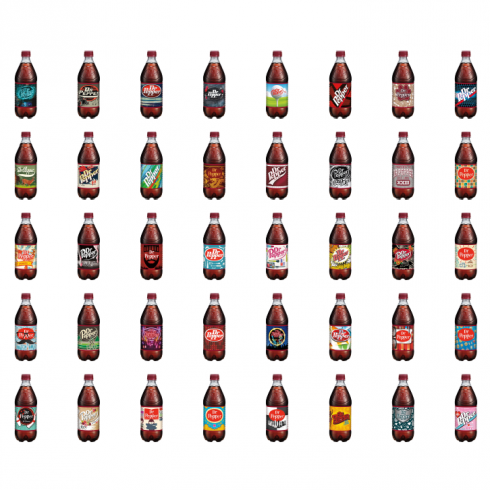
Client: Dr Pepper Snapple Group
Campaign: Pick Your Pepper
Agency: We Are Alexander
Best Campaign Targeting Millennials – Silver Winner

Client: Dr Pepper Snapple Group
Campaign: Pick Your Pepper
Agency: We Are Alexander
Dr Pepper wanted to drive sales of 20-ounce bottles, while reinforcing the brand’s One of A Kind positioning during the competitive summer season.
Dr Pepper was on a mission to reach Millennials while they were in-store, and influence them to choose Dr Pepper over other beverages during summer 2016. The challenge was to find a common theme that would speak to this complex target audience.
The solution? Custom-designed labels based on the passions, fashions, pastimes and pop-culture pursuits of Millennials. Words like Rocker, Diver, Jock, SciFi Geek, Gamer, 90’s Kid, Hip Hop, Country, Pro Wrestling, Lucha Libre, Steampumk, Vampires, Zombies and Unicorns, were stamped on the bottles.
Each label was inspired by Millennials, designed by Millennials, reviewed by Millennials and approved by Millennials. Digital print technology created 150 individual labels to capture the breadth of the target’s interests.
Custom-merchandising displays were developed to encourage shoppers to hunt for their favorite labels and allowed Dr Pepper to have all 150 labels in store simultaneously.
Dr Pepper found its sweet spot. The target 20-ounce single serve bottles were up 3.7% in volume and 3.9% in dollars versus the year before. “Pick Your Pepper” display activity was up by 74,000 units versus the prior year’s summer promotion. The top 10 most popular labels generated over 15,000 organic engagements without any consumer incentive. And, the brand sidelined competitors, outperforming Coke, Pepsi and Mountain Dew in volume, growth and velocity. This year, the program has been renewed and expanded for 2017.
Bronze Winner
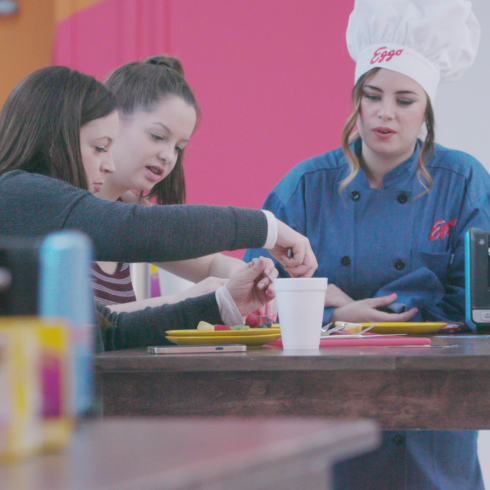
Client: Kellogg’s Eggo
Campaign: Kellogg’s Eggojis
Agency: Mosaic
Best Campaign Targeting Millennials – Bronze Winner

Client: Kellogg’s Eggo
Campaign: Kellogg’s Eggojis
Agency: Mosaic
Kellogg searched across the digital world to find Eggo’s most loyal and social brand advocates, and then sent golden-brown tickets to a select few to a “magical destination” the public had never before been invited to explore, the Eggo Kitchen in San Jose, CA.
Once inside the secret test kitchen, an ultimate Eggo immersion unfolded as 26 waffle-loving guests witnessed firsthand where their treasured treats are created. Then, through a variety of playful experiences, such as martial arts lessons and meditation, guests crafted edible Eggo emojis with a full array of toppings that would become the inspiration for the Eggojis.
Hidden cameras throughout the kitchen captured guest reactions during the fun. Using the footage and the real food emoji’s as blueprints, a three-month digital campaign was launched featuring 12 digital spots, 24 illustrated Eggojis, and one native application for iOS and Android.
For the consumer, the experience typically started by viewing one of dozens of branded social media posts promoted by Eggo’s social accounts. The call to action was to download the keyboard, which was done by more than 127,000 users. Eggoji’s have been shared 1.2 million times.
After a hiatus from marketing in the wake of product recalls, the campaign successfully helped Eggo reintroduce itself to millennial moms. In addition, the campaign was Eggo’s first program on the Twitter platform. Eggoji efforts generated more than 40,000 conversations on social media, and the custom #LeggoMyEggo Twitter emoji was used more than 8,000 times.
Gold Winner
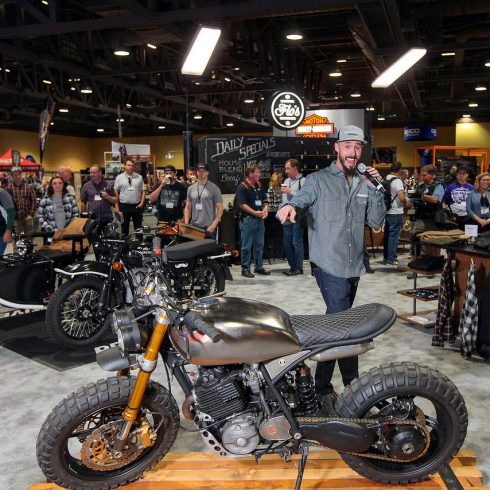
Client: Progressive Insurance
Campaign: Mos and Motos—Movember
Agency: Match Marketing Group
Best Cause-Based Campaign – Gold Winner

Client: Progressive Insurance
Campaign: Mos and Motos—Movember
Agency: Match Marketing Group
In 2015 Progressive joined forces with the Men’s Health Foundation to raise money and awareness for its Movember mustache-growing campaign. The multi-year partnership was geared toward connecting male riders to the Movember movement and one another—through the lens of the motorcycling lifestyle and culture.
The Progressive Mos and Motos Movember Network Page was created as a platform for stories, photos, health tips and, of course, donations. The goal was to devise a fun way to help humanize riders and deconstruct the tough-guy stigma to open up channels of communication about tough but important topics relating to the health of men and their loved ones.
To deepen the network in 2016, Progressive sourced and partnered with small, yet influential brands in the men’s grooming and motorcycle spaces to share the story and drive participation socially and at “Shavedown” events in Cleveland and Austin, TX.
A sweepstakes was created to incentivize participation. Progressive and its agency worked with motorcycle builder Classified Moto to design and build a Grand Prize bike that connected riders and soon-to-be riders to our men’s health cause. For every $50 raised through the Mos and Motos network, that member received an additional entry (hence, better odds) to win the bike.
Movember challenge participants shave down to a clean face at the start of November and grow facial hair during the month to generate conversation and raise donations for men’s health. Progressive leveraged our barber, bike builder, retail and men’s grooming product networks to produce the “Shavedown” events, offering complimentary shaves, refreshments, gear, live music and kickoff donations.
The Mos and Motos network was supported by several digital initiatives. The Movember.com site was leveraged to market to Progressive’s audience with pop-ups, ads, event invitations and email blasts. On social media, earned and paid media was generated using the @ProgressiveMC Instagram handle.
The financial objective was exceeded by more than double ($550,000 raised), and brand awareness was increased across multiple platforms and social channels—#MosandMotos received 4.8 million impressions (1.7 million organic, 3.1 million paid). Progressive was U.S. Movember’s top-performing brand partner in terms of dollars raised.
Silver Winner
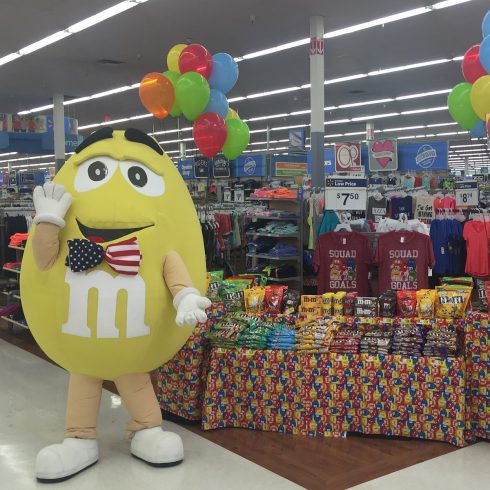
Client: Mars Chocolate North America
Campaign: Say Thank You With M
Agency: Catapult
Best Cause-Based Campaign – Silver Winner

Client: Mars Chocolate North America
Campaign: Say Thank You With M
Agency: Catapult
This retailer-specific program created a new way for Mars to connect with Walmart shoppers.
Mars knew that Walmart embraces a patriotic theme and its shoppers have a strong affinity for supporting the military. This linked well with one of Mars signature products, M&Ms, which was created as US troop rations. The company’s 75th anniversary was a natural time to focus on its heritage.
The “Say Thank You With M” campaign unified three American icons—M&Ms, US troops and Walmart—to create one simple shopper solution. By transforming summer into a “fifth season” of giving to the military, the brand boosted customer loyalty for Mars candies and drove incremental sales at Walmart.
Walmart shoppers love America and Americana. They are proud of their military, and want an easy way to say thanks. This is especially true for millennials, who are more likely to buy a product if it’s tied to a good cause.
No matter where shoppers encountered the omnichannel campaign—including NASCAR events—they were greeted with one simple yet powerful conversion message: 1 for You = 1 for Troops.
The “fifth season” for buying candies—beyond Valentine’s Day, Easter, Halloween and Christmas—lasted months instead of one day. Built on patriotism and honoring those who serve our country, the red, white and blue M&Ms became a fun and innovative way for customers to show their patriotism at home and to the troops they so admire.
The promotion’s authenticity resonated with shoppers, given Walmart’s well-established patriotic support of the troops, M&Ms roots as a military ration, and Mars’ celebration of its 75th anniversary.
The campaign achieved well beyond all benchmark impressions and engagements, exposing 33% new shoppers to the brand.
Walmart has doubled the retail buy for 2017 and extended “Say Thank You With M” to more than 4,000 stores—an increase of 20%.
Bronze Winner
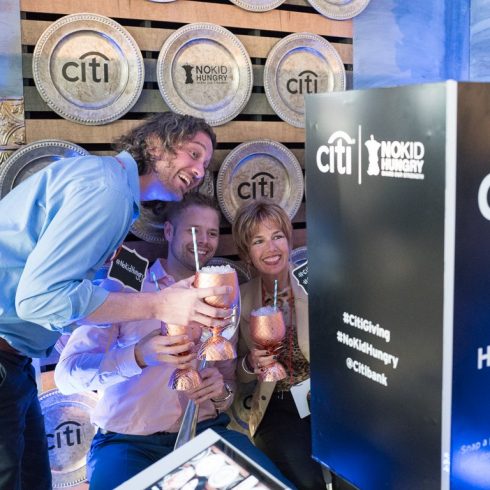
Client: Citi
Campaign: No Kid Hungry
Agency: MAC Presents
Best Cause-Based Campaign – Bronze Winner

Client: Citi
Campaign: No Kid Hungry
Agency: MAC Presents
Taste of the Nation events in six cities—Los Angeles, San Francisco, Miami, Washington DC, Chicago and New York—helped Citi bring its partnership with nonprofit No Kid Hungry to life.
The goal of the events was to link the Citi brand to No Kid Hungry’s mission—feeding children in need—in an authentic way, incentivize donations and encourage engagement.
A branded presence was essential throughout each stage of the events. Upon arrival, Citi cardmembers were granted expedited entry at a Citi VIP table where they received a custom laminate, lanyard and tasting tray. Once inside, guests could treat themselves at the Citi cardmember VIP lounge, featuring a private bar, a branded photo booth and charging station, and custom.
The décor and activation areas helped optimize each event for social sharing, which made giving back turnkey for attendees. For every photo or post shared via social media using the hashtags #NoKidHungry and #CitiGiving, Citi donated three meals to children in need. In total, Citi donated the equivalent to 300,000 additional meals to No Kid Hungry through the promotion.
On social media, Citi promoted “Share A Post, Share A Meal” campaign to encourage its followers to share posts with a positive sentiment to drive content sharing and meal donations. A Giving Tuesday campaign drove more first-time donations and create a viral consumer message for the campaign. The program included a branded filter through Citi’s first Snapchat campaign.
Each event was tailored to the local market, and various activation elements also included a local touch. In San Francisco and Los Angeles, all elements were compostable or could be recycled. In New York, the Citi check-in experience was customized for cardmembers via special appetizers that floated to them via balloons.
Citi donated $1 million from the “Dine & Do Good” campaign—enough for No Kid Hungry to provide 10 million meals for kids in need. Engagement was so strong that the donation goal was reached in only seven weeks—two months earlier than expected. Cardmembers increased their dining frequency by 13% in support of the campaign. Social engagement was over seven times that of the campaign benchmark, resulting in thousands of shares and social posts.
Gold Winner

Client: The Quaker Oats Co.
Campaign: Bring Your Best Bowl
Agency: The Marketing Arm
Best Cross-Channel Engagement – Gold Winner

Client: The Quaker Oats Co.
Campaign: Bring Your Best Bowl
Agency: The Marketing Arm
It’s not unusual to hear something described as being “as bland as oatmeal.” Quaker Oats wanted to change the perception of oatmeal as something “boring you eat for breakfast because it’s a healthy” to “something you eat anytime of day because it’s delicious.” To do that, it enlisted the help of oatmeal aficionados who already knew that far from being dull, oatmeal could be a culinary delight.
Quaker Oats and The Marketing Arm began the campaign by asking consumers to submit their suggestions for the next great instant-oatmeal flavor to the Quaker website; the person who came up with the most popular flavor would win $250,000. More than 520,000 people submitted ideas, exceeding goal by 247%. Tiffani Thiessen, an actress and cooking-show host whose lifestyle website has a loyal following, was enlisted as spokesperson, helping to attract consumer and media attention.
Also grabbing attention was the Times Square pop-up that launched the promotion. Alongside a colossal canister of Quaker Oats, consumers could build their best bowl of oatmeal at a toppings and mix-in bar, then see their creation showcased on huge digital billboards. Later, to launch the public-vote stage of the competition, Quaker Oats set up a Best Bowl Bistro in Chicago where visitors could taste the three finalist flavors (Apple Cheddar Rosemary, Lemon Ricotta Pancake, and Vanilla Chai).
Consumers could vote for their favorite finalists on the Quaker website or via Facebook and Twitter, where Quaker posted more than a dozen videos to spread awareness. National advertising and in-store signage also supported the campaign, even before Quaker created a variety pack consisting of the finalists.
Overall, Bring Your Best Bowl reaped more than 254.4 million impressions. Promotional packaging in the first stage of the campaign generated a 1.9% lift in sales, and the variety pack of the finalist flavors contributed a 9.2% increase in incremental sales. The tastiest result, however, might be the 2.3% overall lift in sales that the campaign generated—well, that and the ability to buy the winning flavor, Apple Cheddar Rosemary.
Silver Winner
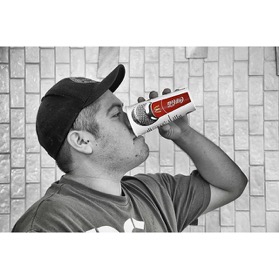
Clients: McDonald’s, Coca-Cola Co.
Campaign: Sip Share Win
Agency: Arc Worldwide Chicago
Best Cross-Channel Engagement – Silver Winner

Clients: McDonald’s, Coca-Cola Co.
Campaign: Sip Share Win
Agency: Arc Worldwide Chicago
The challenge was to put a fresh spin on the old Monopoly “peel and win” style promotion and create a new modern and progressive sweepstakes that would drive brand engagement. And with soft drink sales sluggish and summer on the way, it was not the time to roll the dice.
With Millennials as the target, McDonald’s and Coca-Cola partnered for “Sip Share Win” and tied the program to high profile “The Late Late Show” host James Corden and his wildly popular Carpool Karaoke. Carpool Karaoke embodies summer and the on‐the‐go lifestyle of the target audience as he drives around singing with his celebrity friends like Adele and Justin Bieber.
The program’s intent was simple: create a socially led campaign to drive consumers to McDonald’s drive‐thru to order a Coke and share a selfie or video with a specially marked cup for a chance to win a VIP experience at “The Late Late Show with James Corden.” The campaign rode the segment’s popularity online to start the conversation and deliver earned media in the absence of any paid. Some 25,000 sweeps entries crushed the benchmark of 13,000.
“Sip Share Win” launched with a special Carpool Karaoke segment featuring mega star Selena Gomez and James Corden going through the McDonald’s drive-thru and engaging with the branded packaging. The segment became one of the most watched videos on the Internet that June with 49MM views.
A YouTube pre-roll pushed the VIP experience with more than 4.5MM views and social influencers (Nascar driver Jamie McMurray, U.S. Soccer player Alex Morgan, singers Leslie Grace & Andra Day) drove engagement. Social mentions topped 30K with a benchmark of 15-20K.
Bronze Winner

Client: Miller High Life, MillerCoors
Campaign: Wear the High Life
Agency: Arc Worldwide Chicago
Best Cross-Channel Engagement – Bronze Winner

Client: Miller High Life, MillerCoors
Campaign: Wear the High Life
Agency: Arc Worldwide Chicago
Once known—without irony—as “the champagne of beers,” Miller High Life was a fading icon, particularly to millennial drinkers more interested in craft beers and trendy cocktails.
With sales slipping two percent year over year, Miller High Life needed to increase retailer penetration, sales volume, and repeat purchases and loyalty among target drinkers. The brand has always been more of a “values beer” than just a “value beer,” one that believes in quality and authenticity, and it found millennials hold similar ideals. The “Wear the High Life” loyalty program highlighted these shared values and drove retail purchases.
The brand turned to noted streetwear designer Benny Gold to craft a unique line of premium merchandise available only to those who live (and drink) the High Life. Gold created two streetwear designs that merged his icons those of the brand. These could only be obtained for a limited time by purchasing 12 pack bottles of Miller High Life.
Inside packs, customers found promotional codes they could enter at wearthehighlife.com. Drinkers received a virtual punch card and a “punch” for each code entered. After five codes, they received a limited edition t-shirt. Designs rotated throughout the program driving loyalty, trips and sales volume.
Awareness grew through PR and media outreach with influencer blogs, fashion publications and supported with launch parties in Benny Gold’s retail stores in New York and San Francisco. A 90-second video created excitement and drove word of mouth in the marketplace, with 15-second cutdowns all shared through social feeds and media channels. Facebook and Instagram posts promoted awareness of the Benny Gold collaboration and the promotional offer.
The program resulted in a 7% increase in program sell-in to retailers over the previous year’s program, and led to a healthy 6% increase in 12 pack bottle sales. Over half of registrants came back at least 10 times to purchase Miller High Life 12 pack bottles over the four-month time period.
Gold Winner
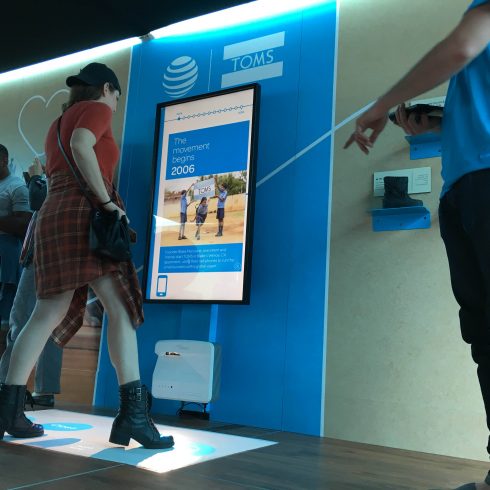
Client: AT&T
Campaign: AT&T | TOMS Activation
Agency: The Marketing Arm
Best Cross-Country Campaign – Gold Winner

Client: AT&T
Campaign: AT&T | TOMS Activation
Agency: The Marketing Arm
People often complain that their homes are so small, it’s like living in a shoebox. But AT&T managed to improve its favorability rating and provide footwear to needy children by inviting consumers to step inside a replica shoebox—albeit a 50-foot one.
AT&T had long worked with shoe company TOMS on the latter’s One on One initiative, which donates a pair of shoes for every pair purchased. To celebrate TOMS’s 10th anniversary last year, AT&T created a multimedia campaign to boost awareness of the One on One program.
AT&T and The Marketing Arm built a giant replica of a TOMS shoebox in May at Southern California’s iconic Santa Monica Pier. An animated video greeted visitors, who were then fitted with virtual-reality headsets so that they could follow in the footsteps of a young man’s travels to hand-deliver a pair of donated shoes to a child in Colombia. Attendees could also activate—via foot movements, of course—two touchscreen walls detailing the history of the program and sit in 360-degree video viewing spheres to watch behind-the-scenes footage of the VR film.
Just outside the giant shoebox was an equally oversize AT&T/TOMS photo frame. Visitors received a commemorative Polaroid of themselves within the frame in exchange for posting a virtual photo on their social media with the hashtag #celebrategood. To encourage social sharing, AT&T and TOMS donated a pair of shoes for every tagged photo.
AT&T used content gathered from the event to further promote One on One online. And it hit the road during the second half of the year with a scaled-down version of the installation, bringing it to 11 AT&T-owned or -sponsored properties, including several college football games.
The campaign generated 20.3 million media impressions and 36.6 million social impressions, with more than 4 million digital engagements and 14,000 onsite engagements from May through December. It generated positive opinions about AT&T as well: Among those who might have heard about the campaign but didn’t step foot into the Brobdingnanian shoebox, 57% said their perception of AT&T had improved; among those who did interact with it, that percentage was a whopping 92%.
Silver Winner
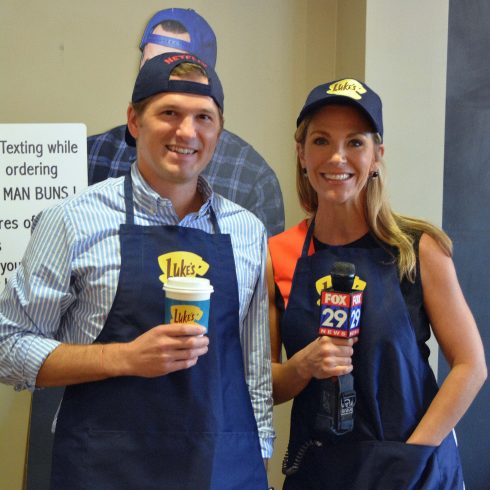
Client: Netflix
Campaign: Gilmore Girls Luke’s Coffee Day
Agency: Allied Experiential
Best Cross-Country Campaign – Silver Winner

Client: Netflix
Campaign: Gilmore Girls Luke’s Coffee Day
Agency: Allied Experiential
Fans of Gilmore Girls, which aired from 2000 to 2007, are as passionate about the TV series as the titular characters, Lorelai and Rory, are about coffee. So when Netflix wanted to promote its exclusive miniseries Gilmore Girls: A Year in the Life, coffee clearly had to be a key element of the campaign.
On Oct. 5, the anniversary of the series’ premiere, Netflix and agency Allied Experiential created across the U.S. and Canada 207 replicas of Luke’s Diner, the fictional eatery where much of Lorelai’s and Rory’s coffee consumption occurred. Rather than establish pop-up shops, they temporarily took over mom-and-pop coffee shops in areas with a significant number of young women and professionals, the series’ primary audience. The baristas wore branded Luke’s aprons and caps (the latter backward, as on the show); the Luke’s logo appeared on the front of the shops (perfect for fans’ selfies); Luke’s infamous “No cell phones” rule was strictly reinforced. A life-size standee of Luke appeared in each location—except in Beverly Hills, where Scott Patterson, the actor who played Luke, served up coffee in person.
Netflix did not even hint at the promotion in advance, allowing fans to discover the replica Luke’s Diners themselves the morning of Oct. 5. To encourage those fans to spread the word, the takeaway coffee cups were printed not only with quotes from Gilmore Girls but also with a Snapchat code that earned imbibers a themed filter for 24 hours. To add to the already considerable surprise and delight, 15,000 cups also included a code for three free months of Netflix.
Throughout the day, the replica diners gave away 51,750 cups of coffee. All that caffeine led to the hashtags #HappyBirthdayGilmore, #Lukes, and #GilmoreGirls generating more than 335,000 impressions on Instagram and Twitter, and the Snapchat filter reaching more than 500,000 unique users.
Bronze Winner
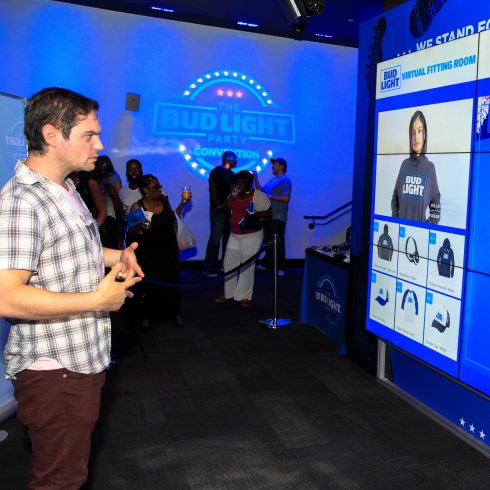
Client: Bud Light
Campaign: The Bud Light Party Conventions
Agency: Mosaic
Best Cross-Country Campaign – Bronze Winner

Client: Bud Light
Campaign: The Bud Light Party Conventions
Agency: Mosaic
In a tense and divisive political summer, Bud Light wanted to rally people around what Americans have in common and create a lighthearted, fun atmosphere—and get them to go to local bars and drink beer, of course, as members of the Bud Light Party.
A series of Bud Light Party Conventions brought people together around local topics and fun. The primary target was people aged 21-40, with a special focus on 13 key markets, including Phoenix, Los Angeles, Fresno, Dallas, Houston, New York, Boston and St. Louis. The campaign needed to remain locally relevant, yet keep each event consistent to the overarching national campaign.
Bud Light’s on-premise bar and restaurant network recruited beer drinkers. From May through August 2016, consumers were prompted via digital channels and radio ads to go to a local bar and have a Bud Light. While there, they could enter their name into a ballot box for the chance to win a spot as a “delegate” to their local convention. Immediate, live drawings of ticket winners kept people in the bar through the duration of the activation.
Musical acts at the conventions included Ludacris, Jason Derulo, Big Sean, DNCE, Two Chainz and more. Like a real political convention, delegates sounded off and took a stand, voting on important local “issues.” For instance, in Chicago, delegates voted whether winter “Dibs” on shoveled parking spots are cool, or should be done away with (result: we’re stuck with dibs).
At the events, 170 total brand ambassadors across 13 events were utilized. They facilitated 11,408 consumer interactions with activations such as voting booths. The events drove future consideration to a greater degree than any other Bud Light activation tested within the past 18 months, and the conventions even made a difference with non-attendees, spiking awareness of the campaign 25%.
Gold Winner
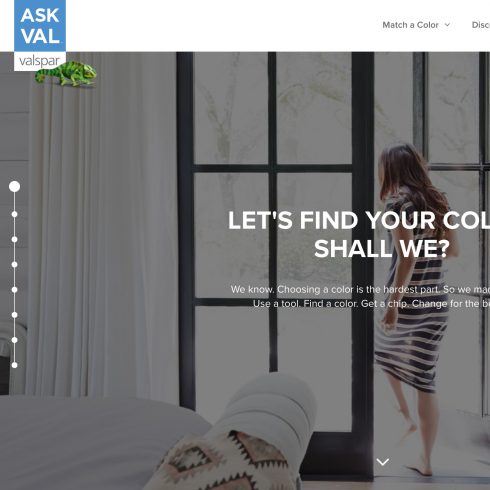
Client: Valspar
Campaign: Ask Val
Agency: FCB Chicago
Best Digital Campaign – Gold Winner

Client: Valspar
Campaign: Ask Val
Agency: FCB Chicago
For many people, choosing paint is the most stressful part of any home decorating project. Consumers spend most of the decision-making process deliberating over colors; settling on the brand of paint is almost an afterthought. To encourage shoppers to choose its brand while choosing a color, and to differentiate its website from those of its competitors, Valspar launched AskVal.com, featuring a variety of interactive tools to help consumers narrow their options.
The site’s Pinterest Analyzer tool enables users to log into their Pinterest accounts directly from AskVal.com and have the site find paint matches for the most prominent colors on their boards. The Photo Match tool generates paint chips based on photos that users upload, while two quizzes on the site provide color suggestions based on answers to questions about the users’ personalities or the rooms they’re planning to paint. The website even offers personal palette recommendations from Valspar’s color consultants. And not only does the site deliver color suggestions, but it also offers free delivery of paint chips.
To drive traffic to some of its major retailers, Valspar also built dedicated versions of the site for Lowes and Ace Hardware, which staff could use to help customers in-store. Valspar promoted the site largely via programmatic display advertising.
On average, visitors spent more than two minutes on AskVal.com and engaged with three tools. Eighty percent of visits were from mobile devices or tablets, almost twice the average for home-improvement websites and validation of Valspar’s mobile-first approach. Similarly, the site’s 41.75% bounce rate was significantly below the home-improvement industry’s average of 52%. And Buzzfeed might want to watch out: The AskVal.com quizzes had a completion rate of 84%, well within reach of Buzzfeed’s rate.
Silver Winner
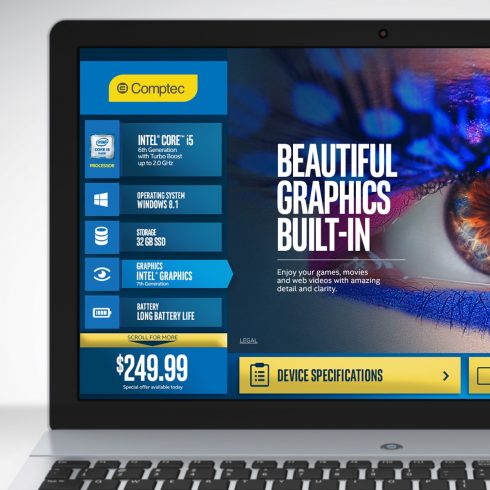
Client: Intel
Campaign: Intelligent Point of Sale: Reinventing PC Shopping
Agency: Arc Worldwide
Best Digital Campaign – Silver Winner

Client: Intel
Campaign: Intelligent Point of Sale: Reinventing PC Shopping
Agency: Arc Worldwide
A powerful Intel processor has the potential to create amazing experiences in shoppers’ lives. But at retail, it’s invisible, hidden away inside the PC.
To take the pain and confusion out of buying a computer, and at the same time, bring to life the amazing human experiences that the processor would bring to shoppers’ lives Intel invented an intuitive technology developed in-house called IPOS—Intelligent Point of Sale.
IPOS takes the place of the confusing array of cardboard, fact tags and spec sheets that were cluttering the PC aisle. Parallax motion and arresting visual imagery call shoppers to the screen. Then they’re invited to interact with glimpses of the potential inside. With one click or tap, shoppers learn exactly how each PC spec will make their life cooler. For example, Gigahertz are brought to life with fire breathing dragons and storage capacity is given a sense of wonder with 10,000 glowing lanterns rising into the midnight sky. By launching it from the cloud, it brings to life and updates 400,000 PCs simultaneously around the world in 36 different languages.
IPOS is like a personal sales associate inside each computer. It provides shoppers customized experiences based on the exact processor, hard drive, memory, screen resolution, and a host of other features for each separate device.
For shoppers who start online, another proprietary tool breaks down all of the complicated decisions and turns them into a few simple questions that result in a recommendation that is uniquely customized to their lives.
When using a PC with IPOS, 67% of shoppers are more likely to consider purchasing an Intel-powered device. When using a PC with IPOS, 60% of shoppers are more likely to recommend an Intel-powered device. Shoppers that used IPOS increased their average spend per device by 11%, or $76. After completing the Shopper Recommendation Tool, consumers clicked “Shop Now” 71% of the time, the highest percentage ever for Intel. In fact, these tools helped Intel achieve the best sales on Black Friday in company history.
Bronze Winner
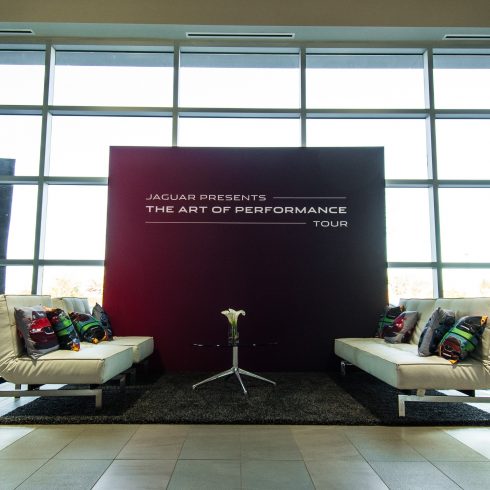
Client: Jaguar Land Rover
Campaign: The Art of Performance
Agencies: Automotive Events, Mindshare, Spark 44
Best Digital Campaign – Bronze Winner

Client: Jaguar Land Rover
Campaign: The Art of Performance
Agencies: Automotive Events, Mindshare, Spark 44
To launch the XE, a compact premium sport sedan, Jaguar wanted to reach a new millennial audience who had luxury tastes, but not necessarily a luxury budget just yet.
The brand had less than half the budget of its last product launch and more than double the sales goals in the first year and needed to develop an efficient campaign that would breakthrough in a cluttered market place.
Jaguar looked to reinvent the test drive with the Art of Performance Tour, an immersive brand experience that combined a physical and virtual test drives and took the showroom to millennials rather than expecting them to come to a dealership. The experience offered the exclusive opportunity to drive the new XE sedan on the street and on a high-performance closed course, months before it became available to buy.
Attendees experienced the art of movie making and high performance driving through a personalized action-adventure two-minute movie created using custom developed, patent pending video stitching technology. Each personalized film was delivered within minutes and instantly shareable. A partnership with Facebook and Instagram gave attendees the chance to create a seven-second profile video featuring their stunt driving scene.
Sign-ups were done online, and events were scheduled in the morning before work, at lunchtime, through the evening and on weekends. The tour took guests through six interactive environments, including a check-in where they were fit with RFID wristbands they wore throughout the event, the showroom, the movie, the actual test drive, a lounge featuring refreshments and comfy seating, and an exit survey.
Eighty-five percent of participants in the Art of Performance Tour were new to the brand, and the target millennial audience shared content at a rate of 50%. The campaign generated more than 242MM social impressions, 86.4MM PR impressions and 49MM video views. Conversations on Twitter reached a potential 5.5MM followers, and Jaguar received over 3,000 pre-orders for the new XE.
Gold Winner
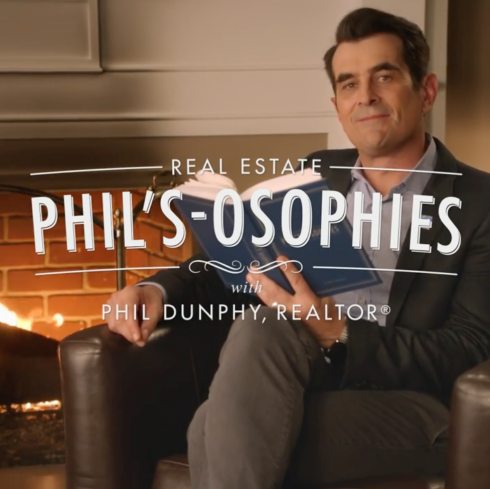
Client: National Association of Realtors
Campaign: Modern Family
Agency: Havas Sports & Entertainment
Best Entertainment Sponsorship or Tie-In – Gold Winner

Client: National Association of Realtors
Campaign: Modern Family
Agency: Havas Sports & Entertainment
Were you one of the 11.4 million people who watched the “Promposal” episode of Modern Family in May 2016? If so, you experienced one aspect of the National Association of Realtors (NAR) campaign to raise awareness of the importance of using a Realtor when shopping for a home.
The growth of ecommerce has led many consumers—Millennials in particular—to cut Realtors out of the home-buying process. Given that Millennials are the fastest-growing segment of home buyers, the NAR needed to show them the benefits of using licensed Realtors. And “showing,” rather than telling, was important, given the demographic’s preference for videos.
Integrating TV’s most popular real-estate professional, Modern Family’s Phil Dunphy, into a campaign seemed an entertaining way to have the message hit home. The NAR and Havas Sports & Entertainment worked with the showrunners to weave a storyline about Phil’s pride in being not just a real estate agent but a Realtor into an episode.
The campaign didn’t end with Phil displaying his NAR pin on his lapel during the episode, however. Ty Burrell, the Emmy-winner actor who plays Phil, shot a series of clips in which his character dispensed his popular “Phil’s-osophies”—in this case, advice about buying a home. These videos were promoted via social channels, as were humorous animated GIFs. The NAR also created for its more than 1 million members a Phil’s-osophy desk calendar and Phield Guide: A Practical Survival Guide for the Real Estate Wilderness. Burrell even made an appearance at the organization’s annual convention that autumn.
Within 24 hours after the episode initially aired, the campaign generated 4.6 million views and more than 40,000 shares of a clip the NAR posted online, along with more than 2,300 comments on the organization’s Facebook page. All told, the campaign content has tallied nearly 3 million views on YouTube alone, and the number of people following the NAR on Facebook and Instagram has grown nearly 200%. What’s more, six months after the campaign debut, the NAR reported a “statistically significantly” increase in the percentage of millennials likely to use a Realtor.
Silver Winner
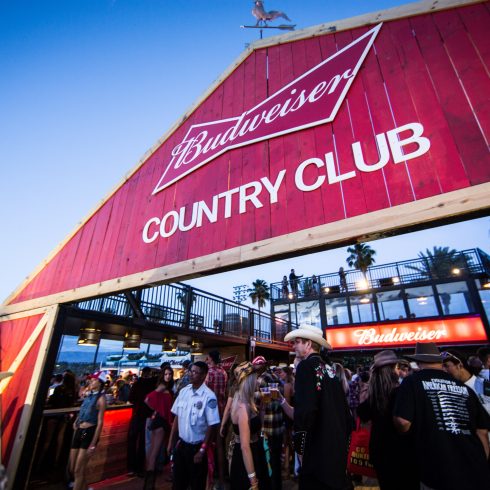
Client: Budweiser
Campaign: Budweiser Country Club
Agency: Engine Shop
Best Entertainment Sponsorship or Tie-In – Silver Winner

Client: Budweiser
Campaign: Budweiser Country Club
Agency: Engine Shop
In 2015, Budweiser made a strategic play into country music, aiming to connect via its shared values of national pride, hard work and tradition. With country being the fastest growing music genre among Millennials, Gen X and Boomers, 2016 was the year to go for the full immersion.
The result was the “Budweiser Country Club,” on the road from April to September 2016, making four stops at the biggest country music events of the year—Stagecoach, Country 500, CMA Fest, Faster Horses and Battle of Bristol—to service up 57,000 samples.
The Club was an 8,800+ square-foot build that appealed to country music fans with the Country Club Barn as the centerpiece—a custom fabricated, 46,000 pound 3-story structure that contained a custom built, self contained Budweiser Signature Draft bar with eight taps and multiple package bars to service sales goals.
Engine Shop harnessed the local hardworking people who best embody the Budweiser brand. For example, at CMA Fest in Nashville, TN, people interacted with reps from 5 Strength Furniture, that brought along a Budweiser bottle wood making station, Gibson Guitars, who let people try out handcrafted guitars.
The Budweiser Country Club was designed to reinforce Budweiser’s “brewed the hard way” mantra in both design and consumer experience. Engagement experiences included a leather koozie station with hand stamped initials, custom limited edition prints from the iconic Hatch Show print shop in Nashville, an education area that took consumers inside the St. Louis brewery, and an area that featured local specialty shops and craftsmen that embody “doing it the hard way.” A VIP hospitality on the second and third levels had air conditioning and elevated views of the music stages and festival grounds. An expanded “backyard” included a 16-foot Budweiser photo set and tractor setup designed for social sharing, backyard and tailgate games, shade and a place to rest a cold Budweiser.
More than 63,000 people visited the Country Club, 50+ million social media impressions, and distributed 12,000+ custom koozies and 11,500+ American flag bandanas. More than 74,000 beers were, surpassing the sales goal by 137%.
Bronze Winner
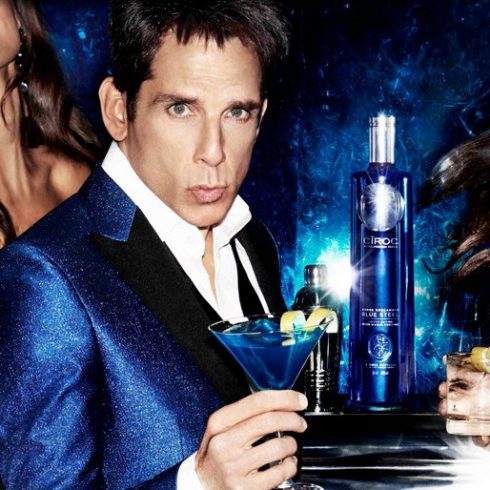
Client: Paramount Pictures
Campaign: Zoolander 2 and Ciroc
Best Entertainment Sponsorship or Tie-In – Bronze Winner

Client: Paramount Pictures
Campaign: Zoolander 2 and Ciroc
Paramount Pictures partnered with Ciroc to create a limited-edition Blue Steel vodka to promote the launch of “Zoolander 2.”
“Blue Steel” is one of fictional supermodel Derek Zoolander’s signature poses. The studio wanted to appeal to fashion and conscious 18 to 34 year olds who might not be familiar with the original “Zoolander,” which debuted in 2001.
Ciroc engaged famed fashion photographer Mario Testino to not only design a limited-edition bottle as a licensed product but also to shoot the campaign for showcasing the partnership. It was also one of the rare occasions where actor Ben Stiller agreed to channel his legendary Derek Zoolander character for a third-party partner. The partnership allowed Paramount to reach consumers beyond the traditional film marketing vehicles, extending into new and exclusive channels such as luxury nightclubs, spirits retailers and high fashion events.
The partnership started with the production of over 120,000 Ciroc Blue Steel bottles inspired by the film and distributed across Europe, Australia and the Middle East. Media included stand-out placements across London and Madrid, such as billboards, taxi wraps, subway station takeovers, and print ads in (and wraps of) leading fashion magazines.
Ciroc joined forces with Esquire and Selfridges in the UK to launch a fashion takeover of the two main windows featuring Blue Steel bottles and costumes from the film, a dedicated CIROC Blue Steel wall in the Wine & Spirits store and a takeover of the Men’s Personal Shopping area, kicking off with a tastemaker event. Ciroc also sponsored several key fashion events across Europe promoting the film while serving the “Blue Steel” cocktail, in addition to sponsoring “Zoolander 2” premiere events in Berlin, Madrid and London in Leicester Square.
The campaign generated over 400 pieces of press coverage, reaching three billion people by the film’s opening and generating earned conversation across European channels inclusive of top tier influencers. Over 600 social media posts with the hashtag #BlueSteel drove traffic to film promotions, and all 120,000 limited edition bottles sold out at retail.
Gold Winner
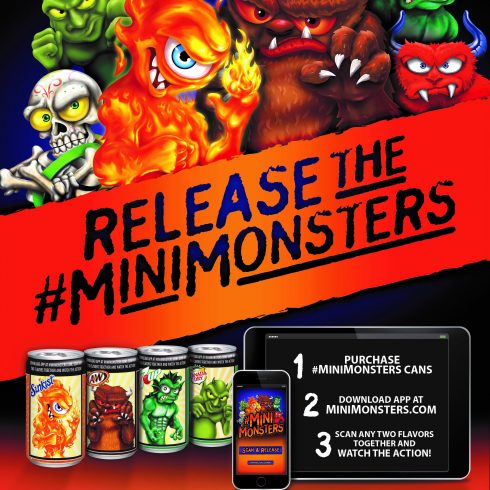
Client: Dr Pepper Snapple Group
Campaign: MiniMonsters AR
Agency: We Are Alexander
Best Holiday or Seasonal-Themed Campaign – Gold Winner

Client: Dr Pepper Snapple Group
Campaign: MiniMonsters AR
Agency: We Are Alexander
To increase sales of its soft drinks during Halloween, Dr Pepper Snapple Group scared up a treat of a campaign with the help of mini cans of soda, cartoon monsters, and an augmented reality app.
The company had introduced its MiniMonster cans of 7-Up, A&W, Big Red, Canada Dry, Squirt and Sunkist sodas in 2014 to be used as treats in lieu of candy. Colorful monsters—a grinning orange Cyclops for Sunkist, a yellow-eyed skeleton for Squirt, a big red horned creature appropriately enough for Big Red—adorned the 7.5-ounce cans and made for attention-grabbing store displays. The following year Dr Pepper Snapple Group introduced an app that, when scanned over a consumer’s can, made it appear that a monster was popping out of the container.
For 2016, though, the company and agency We Are Alexander made the app even more of a thrill: When consumers scanned two cans side by side, they unlocked a (not very) ferocious battle between the MiniMonsters. Available for both iOS and Android at MiniMonsters.com, the app included a sharing functionality. And because the app allowed for 15 different interactions in all, consumers were encouraged to buy multiple cans and flavors.
More than 10,000 of the app users shared their MiniMonster battles on social media. Even kids and their parents who managed to avoid seeing the creatures come to virtual life online found it difficult to ignore the vibrant point-of-purchase displays featuring the (not very) frightening monsters. In all, the augmented reality campaign definitely augmented sales: For Dr Pepper Snapple Group’s top retailers, 49% of MiniMonster can volume was incremental.
Silver Winner

Client: Pentair Water Pool and Spa
Campaign: Pentair
Agency: Blue Flame Thinking
Best Holiday or Seasonal-Themed Campaign – Silver Winner

Client: Pentair Water Pool and Spa
Campaign: Pentair
Agency: Blue Flame Thinking
Pentair Water Pool and Spa had a new pump to talk about—the IntelliFlo 2 VST.
The strategy was to inform retailers and consumers about the $100 rebate program, to drive consumer traffic to the promotional website and to encourage those leads to covert to a sale.
Pentair looked to its preferred dealers to activate the promotion and to pool owners that skew male, ages 30-64, with household incomes of $75K+.
However, a challenge cropped up with the SMS. Consumers weren’t signing up. It proved a good test to see if there was an audience but after an analytics review, the CVR was down -17.91% and the CTR was -.04%. With that, the program switched gears to focusing on the media and lowering investment into SMS.
On the microsite, feedback showed that the rebate would perform better if it was the first block. Once it moved up, there was a 330% increase in users seeing the CTA compared to the block being on the bottom of the page.
To meet pool season goals, the team renewed the rebate program to promote the Pentair brand and to standout among the competition. The “Pump Up Your Savings” campaign gave consumers who purchased an IntelliFlo pump the opportunity to redeem a $100 rebate. The rebate ran from April 1 through Sept. 9, 2016.
To push consumers to retail, the pump had to be purchased in store to get the rebate, which also benefited the consumer because they received a longer warranty and a better rebate on the pump.
To encourage and excite the pool retailers about the pump, a display contest kicked off where they could win prizes by decorating their stores wanted and submitting photos. The winner was announced in a trade ad, and received a Yeti Cooler, $200 gift card, professional sign twirler, and a pop up tent.
The rebate was marketed through numerous channels and tactics, including search ads, social retargeting, the microsite, in-store signage (including branded beach balls) stickers on employee uniforms and text messages.
Over 8,000 rebates were redeemed and over 17.5 million impressions were recorded through the microsite, retargeting ads, display ads, paid search, and e-mail. Thirty retailers entered the display contest. Time for a pool party!
Bronze Winner
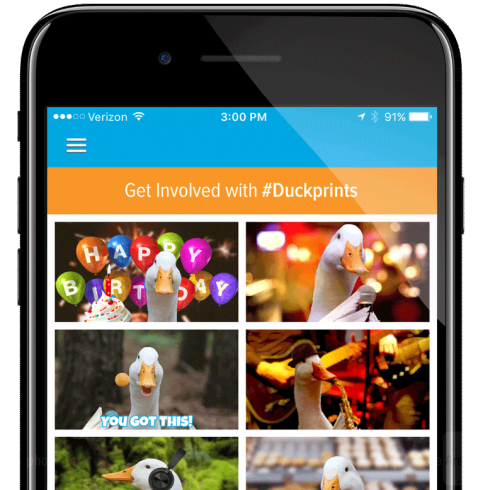
Client: Aflac
Campaign: Holiday Duck Campaign for Pediatric Cancer Research
Agency: Index Promotions
Best Holiday or Seasonal-Themed Campaign – Bronze Winner

Client: Aflac
Campaign: Holiday Duck Campaign for Pediatric Cancer Research
Agency: Index Promotions
Every year, Aflac creates a holiday duck plush toy to raise money to help fight pediatric cancer.
Since 1999, the Aflac duck has been a very popular and iconic image of the Aflac brand. The holiday-themed campaign debuted in 2001. The design of the plush is different each year, which has organically positioned the stuffed ducks as collector’s items. Another ongoing challenge is navigating the retail environment with partner Macy’s, and creating in-store displays and other elements to attract consumers.
For the 2016 Holiday Duckprint, a holiday-themed app designed by Index Promotions increased social and digital engagement. The Duckchat app featured a custom keyboard with Aflac duck emojis and GIFs consumers can use for texting and emailing.
The app also made it easy—via a “get involved” button—for Aflac customers to donate additional money to its cause, outside of the profits they each gave by purchasing the holiday duck plush toy.
In 2016, money raised from the plush sales and additional donations totaled over $143,000. The Duckchat app was downloaded over 3,189 times on iOS and Android. GIFs were shared over 2,214 times, and over 885 people clicked the “Get Involved” button.
Gold Winner
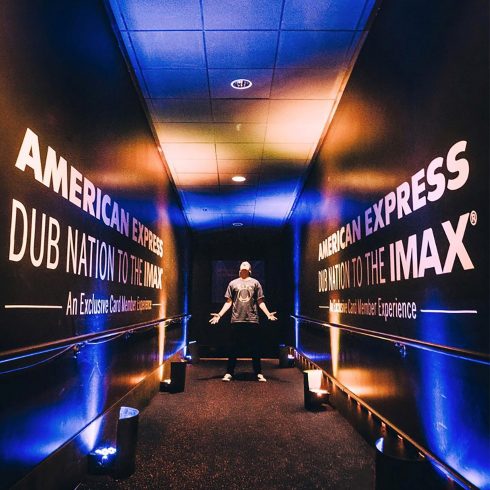
Client: American Express Campaign: Dub Nation to the IMAX Agency: Momentum Worldwide
Best Local/Regional Campaign – Gold Winner

Client: American Express Campaign: Dub Nation to the IMAX Agency: Momentum Worldwide
Golden State Warriors fans, known collectively as Dub Nation, root for one of the hottest teams in the NBA, but most have never seen a game live at the arena due to demand—there’s currently a waitlist of over 30,000 fans for season tickets. To bring Dub Nation closer to its favorite team, American Express emulated the in-venue experience by hosting “Dub Nation to the IMAX,” which marked the first time in North American history a sporting event was live-streamed in an IMAX theatre.
The event itself was available exclusively to American Express Card Members, with promotion targeted toward the Warriors fan base to encourage “card envy” and highlight American Express as being “All For Dub Nation.”
Due to the IMAX screen’s enormous size, it was necessary to double the satellite bandwidth a normal sports broadcast would use. Two uplink satellite trucks at Oracle Arena and two downlink trucks at the IMAX theater delivered the encrypted signal.
The event felt like a blockbuster movie premiere, but delivered the energy of a Warriors home game. As card members arrived at the theatre, they received a commemorative, movie-premiere inspired ticket to the game. Inside, American Express replicated the in-arena experience as fans discovered custom-designed Warriors gear draped over their seats. Specially created content, including a trailer for the event done in parody of summer blockbuster movies, and a PSA encouraging attendees to break with typical theatre behavior and get loud, talk, text and cheer was played pre-game. Card members were also treated to a live performance of the National Anthem before tip-off, and Warriors legend Jason Richardson made an appearance and watched the game with fans.
During the game, rituals like the T-shirt cannon entertained the crowd, while a live DJ provided music during time outs and a spirit squad helped get the fans on their feet and cheering during key moments of the game.
All tickets sold out in five hours. There were 287 attendees, 3MM+ broadcast impressions, 130MM earned media impressions and 1.7MM social impressions, as well as press coverage from Forbes, CNet, SLAM, NBC, Fox and more.
Silver Winner

Client: Nissan Trucks Campaign: State Fair of Texas Agency: The Marketing Arm
Best Local/Regional Campaign – Silver Winner

Client: Nissan Trucks Campaign: State Fair of Texas Agency: The Marketing Arm
The Texas State Fair is a “must-be” place to showcase pickup trucks and Nissan was there, firing on all cylinders, to showcase its entire truck line up.
First, the team intercepted drivers of pickups with an offer of free parking in a Nissan-owned parking lot called The Free Trucking Experience, which featured large parking spaces and bold terrain. Plus, new for 2016, the team put truck drivers in the seat of the Nissan TITAN for an unforgettable, rugged driving experience. Then, drivers were challenged to take on the most rugged obstacles in Texas at the Nissan Proving Grounds.
In its second year, the TITAN of Texas Challenge at the Proving Grounds went even bigger to deliver a one-of-a-kind competition where athletes, local media and professional TV personalities proved they had what it takes to be a TITAN. Via an “American Ninja Warrior” inspired course, 430 athletes matched their strengths with Nissan TITAN’s unique selling propositions of speed, strength and agility and competed for over $60,000 in prizes.
Chart-topping country music artists and local Heisman trophy winners made special appearances during the annual Texas/Oklahoma Red River Showdown game.
Lead generation was up 387% over the prior year, Titan of Texas Challenge competitors up 20%, and 1,980 Nissan Titan test drives were completed. Most importantly, Nissan ended up becoming the most decorated automotive brand by the Texas Auto Writers Association Annual Texas Truck Rodeo, capturing six honors, including SUV of Texas with the 2017 Armada.
This exposure, along with the event, contributed to Nissan setting a new all-time company sales record for cars sold in a calendar year of 1,564,423 total U.S. sales for an increase of 5.4% in a year.
Bronze Winner

Client: Bud Light
Campaign: The Bud Light Party Conventions
Agency: Mosaic
Best Local/Regional Campaign – Bronze Winner

Client: Bud Light
Campaign: The Bud Light Party Conventions
Agency: Mosaic
In a tense and divisive political summer, Bud Light wanted to rally people around what Americans have in common and create a lighthearted, fun atmosphere—and get them to go to local bars and drink beer, of course, as members of the Bud Light Party.
A series of Bud Light Party Conventions brought people together around local topics and fun. The primary target was people aged 21-40, with a special focus on 13 key markets, including Phoenix, Los Angeles, Fresno, Dallas, Houston, New York, Boston and St. Louis. The campaign needed to remain locally relevant, yet keep each event consistent to the overarching national campaign.
Bud Light’s on-premise bar and restaurant network recruited beer drinkers. From May through August 2016, consumers were prompted via digital channels and radio ads to go to a local bar and have a Bud Light. While there, they could enter their name into a ballot box for the chance to win a spot as a “delegate” to their local convention. Immediate, live drawings of ticket winners kept people in the bar through the duration of the activation.
Musical acts at the conventions included Ludacris, Jason Derulo, Big Sean, DNCE, Two Chainz and more. Like a real political convention, delegates sounded off and took a stand, voting on important local “issues.” For instance, in Chicago, delegates voted whether winter “Dibs” on shoveled parking spots are cool, or should be done away with (result: we’re stuck with dibs).
At the events, 170 total brand ambassadors across 13 events were utilized. They facilitated 11,408 consumer interactions with activations such as voting booths. The events drove future consideration to a greater degree than any other Bud Light activation tested within the past 18 months, and the conventions even made a difference with non-attendees, spiking awareness of the campaign 25%.
Gold Winner
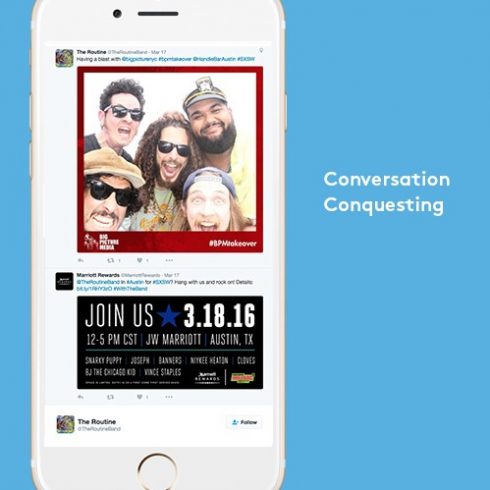
Client: Marriott Rewards
Campaign: #MRpoints
Best Loyalty Marketing Campaign – Gold Winner

Client: Marriott Rewards
Campaign: #MRpoints
Marriott Rewards’ wanted to create raving brand fans through frictionless experiences powered by tech, allowing the loyalty program to recognize and reward members in real-time and at scale across Twitter, Facebook and Instagram.
#MRpoints is Marriott Rewards’ loyalty engagement platform, powered by Chirpify, that uses rewards points as social currency to incentivize engagement on Twitter, Facebook and Instagram. The platform was designed as a reciprocal ecosystem where members are empowered to engage via social media and advocate on behalf of the program. The platform engages guests one-to-one at scale with personalized content and instant rewards, enabling members to engage with the loyalty program even when they aren’t on property.
The platform is global, available in nine languages: English, Queen’s English, Spanish, Portuguese, German, French, French Canadian, Japanese and Korean. Global moderation of social posts and how to ensure timely and relevant responses to those members who engage was a challenge for the brand.
By connecting their social media accounts with the platform, members can earn points by engaging with a variety of triggers throughout the year. The platform is integrated directly with Marriott Rewards’ member database, allowing the program to recognize and reward members the moment they post.
When it came time to amplify the launch of Marriott Rewards’ Reward-a-Friend enrollment program, connected members helped spread the word with a simple retweet. The campaign generated 7.4M earned media impressions in four days.
Every month, Marriott Rewards combines social data with CRM data to recognize members on their membership anniversary. A personalized tweet celebrates them, and an automatic point award is deposited into their account for use on future stays or experiences. The campaign has awarded 4M points since launching in May 2016.
Connected members generated more than 65 million positive earned media impressions in 2016 on behalf of Marriott Rewards. More than 84 million Rewards points were awarded in response to 326,000 social media engagements, equivalent to earning roughly 11,000 free nights.
Silver Winner
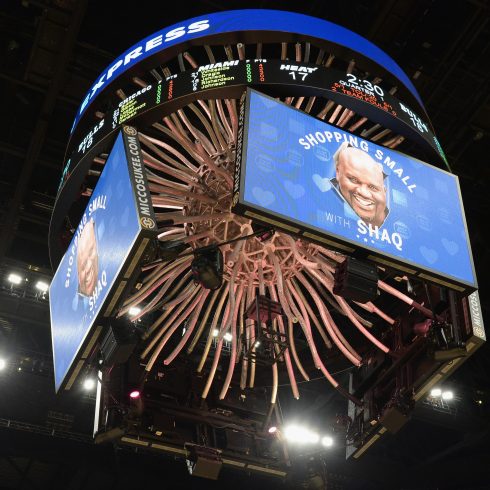
Client: American Express
Campaign: Shop Small for 2X Rewards
Agency: Momentum Worldwide
Best Loyalty Marketing Campaign – Silver Winner

Client: American Express
Campaign: Shop Small for 2X Rewards
Agency: Momentum Worldwide
American Express aspired to turn Small Business Saturday—a single day—into a pervasive movement with the largest and longest running campaign to date: “Shop Small for 2x Rewards.” The program was offered across more than 50 U.S. Consumer and OPEN Small Business American Express Cards, enabling millions of enrolled card members to be rewarded for shopping at small businesses.
The campaign launched for the holiday season with an original content series featuring one of the most dominant voices in basketball: Shaquille O’Neal. In the series, which drew more than 32MM total impressions, Shaq got together with celebrity friends Kendrick Lamar, Wanda Sykes and Jeremy Piven to shop at local gems across the country, finding unique gifts and sharing the love of supporting small businesses.
During the campaign, tens of thousands of basketball fans were surprised during games. Jumbotron content triggered a surprise gift drop delivered by parachutes launched from the rafters and masses of ambassadors decked out in Shop Small blue. A venue signage takeover and fanfare from confetti cannons, cheerleaders and mascots added a celebratory feel to the experience. More than 28,000 fans were surprised with gifts from a local small business at Boston Celtics, Brooklyn Nets, Chicago Bulls, Golden State Warriors, LA Lakers and Miami Heat games. The event at Chicago’s United Center set a record for the largest in-game gifting stunt the NBA has ever seen.
As an example, at the Bulls-HEAT game in Chicago, in just two minutes, 450 brand ambassadors distributed more than 22,000 candles from local shop Abbey Brown, ultimately delivering a gift to every single person in the arena.
Shaq shared the content and the gift drops on the NBA Halftime Report on TNT, reinforcing the Shop Small call to action on a national level.
The campaign drove results across channels: More than 28,000 fans received a gift through the venue gift drops; more than 116,000 live impressions of the venue experiences; video viewed tallied 32MM total impressions; more than 1 billion earned PR impressions.
Bronze Winner
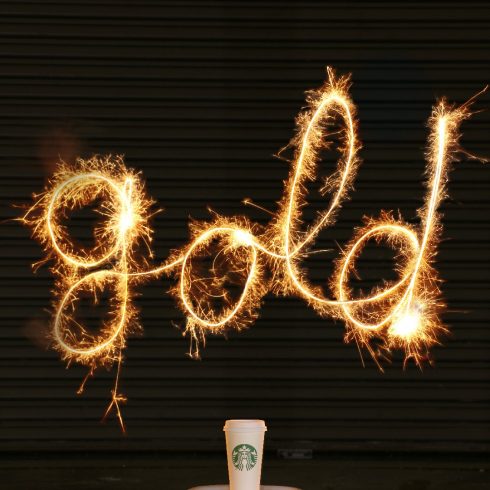
Client: Starbucks Rewards
Campaign: #Goldlife
Agency: Edelman
Best Loyalty Marketing Campaign – Bronze Winner

Client: Starbucks Rewards
Campaign: #Goldlife
Agency: Edelman
Change isn’t easy. Starbucks knew that when it decided in January 2016 to replace its 11 million+ member loyalty program.
The coffee purveyor was sensitive to the fact some customers would earn rewards slower than they did before, and some of them would surely take to social media to air their grievances. It wanted to get customers and the media to positively engage with the new Starbucks Rewards, driving awareness of all the benefits in a fun and creative way, while balancing negative commentary.
Fans were given a golden opportunity: Automatic gold status with a single purchase, fast-tracking them to a shimmering status that would otherwise takes months to reach.
The word was spread on social media through content that leveraged the latest in native ad technology from Twitter Scratchreel GIFs, to a Snapchat Lens and a custom Facebook Canvas experience detailing full #GoldLife member benefits. A partnership with Twitter’s influencer agency, Niche, secured 20 influencers who helped further the #GoldLife message. A small team custom crafted 35 #GoldLife experiences using a combination of stop-motion animation, paper craft, compositing, keying and key frame animation.
Starbucks fans were welcomed to experience and celebrate the #GoldLife at every turn on social. Special attention to mobile platforms and technology, including Facebook Canvas, Snapchat Lenses, and Twitter Screatchreels made it easy for fans to move from discovery to action, downloading the app directly from ads.
The #GoldLife campaign saw results that increased positive sentiment and grew membership. Nearly 300k new Starbucks Rewards members in the first week after launch. There are nearly 2 million new Starbucks Rewards members year over year for 18% growth. Twitter produced 3.5M engagements, and 32% of those who clicked on the Facebook Canvas ad unit downloaded the Starbucks Rewards app. Impressively, 86% of iPhone customers and 79% of Android customers updated the app by the week following the app redesign in April 2016.
Gold Winner
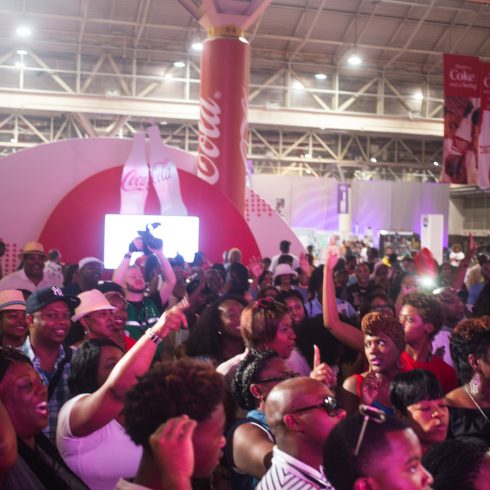
Client: Coca-Cola Co.
Campaign: The Block at Essence Festival
Agency: Mosaic
Best Multicultural/Lifestyle/Age-Targeted Campaign – Gold Winner

Client: Coca-Cola Co.
Campaign: The Block at Essence Festival
Agency: Mosaic
In the summer of 2016, Coca-Cola launched “Share a Coke and a Song,” a campaign designed to connect consumers through music. The initiative targeted teens and young adults, turning up the volume on African American women attending the Essence Festival, held in New Orleans over the July 4th weekend.
In order to connect with “her”—the personification of the brand—at the festival, Coca-Cola needed to be more than a beverage brand. It had to become one of “her” girls: refreshing “her,” elevating “her” and inspiring “her.”
“Share a Coke and a Song Presents The Block at Essence Festival” was a destination curated exclusively for “her.” The space was a 100×100 footprint complete with a full stage, three bars, a VIP seating area, charging stations and a social media wall with real time updates about the social conversation happening within The Block and surrounding the brand (#CokeEssenceFest). A dance floor with a DJ booth and Coca-Cola lyric-inspired listening/photo experience made The Block a top destination for the festival.
Within The Block, 27 hours of star-studded programming was featured. One example was “We are Family,” a take on the television morning show. Kandi from Real Housewives of Atlanta and Big Tigga started each day off with a mix of meaningful discussion around topics interesting to “her,” such as managing finances, balancing careers, family and passion for music. They also hosted games, dance contests and surprise and delight moments including ticket giveaways.
The two winning amateur singers were provided a stylist and voice coach to perfect their moment. As they took the stage at the Superdome they experienced the surprise of a lifetime as superstar Andra Day joined them to harmonize in the chorus of her song featured on Coca-Cola cans, “I’ll Rise Up,” which the winners were singing.
Over 75,000 samples were disseminated in The Block space, achieving 115% of the client’s goal. Street teams refreshed over 16,000 people, surpassing the client’s trial goal by 15%. Coca-Cola actively engaged with 100,000 participants through 27 hours of entertainment; 886 “Share a Coke and a Song” photos were delivered, reaching about 4k fans, and 32,000 branded Lady Coca bags were given away, achieving 100% of Coca-Cola’s target.
Silver Winner
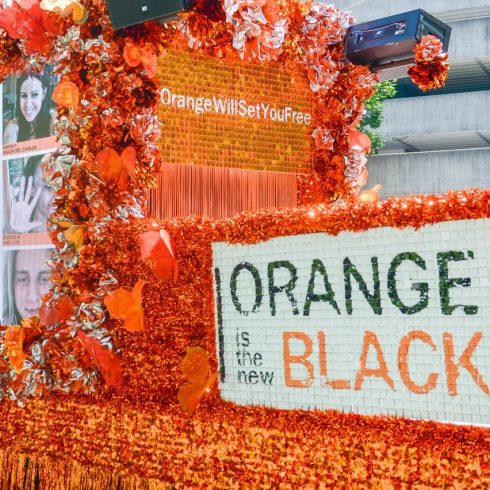
Client: Netflix
Campaign: Orange Will Set You Free
Agency: Allied Experiential
Best Multicultural/Lifestyle/Age-Targeted Campaign – Silver Winner

Client: Netflix
Campaign: Orange Will Set You Free
Agency: Allied Experiential
“Orange Is the New Black” has become Netflix’s most watched original series, releasing its fifth season on June 9, 2017.
To celebrate fans around the globe, including the support of the LGBTQ community, and to promote the premiere of the fourth season, the team came up with a striking activation—an interactive float that would make a statement at Pride parades in New York and Toronto, reaching a total 3.5 million spectators.
The Orange is the New Black float boasted as much fun as it did function, including two 9’ H x 15’ L 3mm LED screens, displayed on both sides of the float, to show the live feed of fans from around the world. Eye-popping sequin signs with OITNB and Netflix branding, and of course, orange décor, including florals and butterflies, were added for a touch of whimsy.
The float included live cameras for livestream on Netflix, a deluxe sound system and wireless handheld mics let talent send shout-outs to the crowd.
To stay in theme with the show, a white pick-up truck wrapped to simulate a prison van, including Department of Justice seals on the front doors and fake mesh bars on the rear windows, towed the float along the parade procession.
The technology used during the event’s live feed was a one-of-a-kind experience between fans and parade attendees. Its success included a partnership between Allied Experiential and Facebook by tapping into Netflix’s built-in audience of 5.5 million OITNB fans, leveraging key Facebook partner Telescope to provide social engagement opportunities, and use of Telescope’s user uploader product/CTA tool. Uploaders were vetted as live participants, some were chosen to have their uploaded video displayed on the float, and other users were selected to participate in live Skype conversations to be displayed in the center tile of float’s screen composite. Netflix talent also participated by submitting short “smile and wave” videos, including Chelsea Handler and Colleen Ballinger.
Netflix invited fans from around the world to see and be seen in the parade by streaming their image live from their mobile device or desktop onto the float’s large video wall.
The results were as striking as the activation itself. More than 1.3 million fans participated in the live Facebook activations with 545,000 for NYC’s livestream and 758,000 for Toronto’s livestream. There were a total of 73 contributors from 12 different countries on Facebook’s livestream, including the U.S., Canada, Australia, Ecuador, Costa Rica, U.K., and many more. The Hollywood Reporter, Gothamist and Bustle covered the activation, which also won an Event Technology Award for Best Combination of Event Technologies at the recent EventTech Conference.
Bronze Winner

Client: Progressive Insurance
Campaign: Mos and Motos—Movember
Agency: Match Marketing Group
Best Multicultural/Lifestyle/Age-Targeted Campaign – Bronze Winner

Client: Progressive Insurance
Campaign: Mos and Motos—Movember
Agency: Match Marketing Group
In 2015 Progressive joined forces with the Men’s Health Foundation to raise money and awareness for its Movember mustache-growing campaign. The multi-year partnership connects male riders to the Movember movement and one another—through the lens of the motorcycling lifestyle and culture.
The Progressive Mos and Motos Movember Network Page offered a platform for stories, photos, health tips and, of course, donations. The goal was to devise a fun way to help humanize riders and deconstruct the tough-guy stigma to open up channels of communication about tough but important topics relating to the health of men and their loved ones.
To deepen the network in 2016, Progressive sourced and partnered with small, yet influential brands in the men’s grooming and motorcycle spaces to share the story and drive participation socially and at “Shavedown” events in Cleveland and Austin, TX.
A sweepstakes incentivized participation. Progressive and its agency worked with motorcycle builder Classified Moto to design and build a Grand Prize bike that connected riders and soon-to-be riders to its men’s health cause. For every $50 raised through the Mos and Motos network, that member received an additional entry (hence, better odds) to win the bike.
Movember challenge participants shaved down to a clean face at the start of November and grew facial hair during the month to generate conversation and raise donations for men’s health. Progressive leveraged its barber, bike builder, retail and men’s grooming product networks to produce the “Shavedown” events, offering complimentary shaves, refreshments, gear, live music and kickoff donations.
Several digital initiatives supported the Mos and Motos network. The Movember.com site marketed to Progressive’s audience with pop-ups, ads, event invitations and email blasts. The @ProgressiveMC Instagram handle generated social media, earned and paid media .
The financial objective was exceeded by more than double ($550,000 raised), and brand awareness increased across multiple platforms and social channels—#MosandMotos received 4.8 million impressions (1.7 million organic, 3.1 million paid). Progressive was U.S. Movember’s top-performing brand partner in terms of dollars raised.
Gold Winner
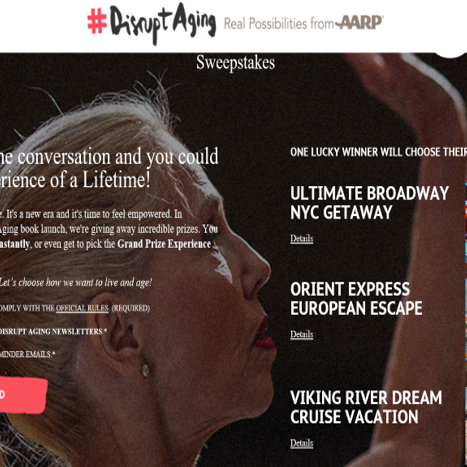
Client: AARP
Campaign: Disrupt Aging
Agency: HelloWorld
Best Multidiscipline Campaign – Gold Winner

Client: AARP
Campaign: Disrupt Aging
Agency: HelloWorld
To drive awareness about negative stereotypes regarding aging, AARP needed to engage a cross-generational audience on an emotional level. How? By encouragement, inspiration and empowerment. AARP’s audience was challenged to face its own personal views on age and celebrate the possibilities.
To do this, AARP connected with Millennials, Gen Xers and seniors across a number of channels: Web, TV, PR, promotions, and the recently-released book “Disrupt Aging” by AARP CEO Jo Ann Jenkins.
Components of the campaign included a book, ageism video experiments posted to YouTube, a media tour, press release, an appearance by Jenkins on The Dr. Phil Show, celebrity endorsements, social media messaging, a microsite dedicated to the movement and a chance to win a trip of a lifetime with the Own Your Age Sweepstakes.
The sweepstakes was presented in an engagement hub, a fun, interactive experience for users to engage with Disrupt Aging content in exchange for chances to win. The grand prize was the choice of a trip of a lifetime—a voyage on the Orient Express across Europe, a Viking River dream cruise or a Broadway getaway to New York.
To grab their attention and to see how they felt about aging, entrants took a personal ageism quiz to gauge awareness around how “ageist” they are based on their perceptions. In this multiple choice quiz, they answered questions such as, “What do you think when someone younger than you gets a managerial position?” and “What would you think of an older man riding a skateboard?”
There were a total 265,156 entrants for the sweeps, a 30% conversion rate and 94% higher than the goal. Entrants logged into the site an average of 3.9 times each, for a total of 762,100 times, and viewed a total of 6,540,090 pages (average: 24.7 PVs per entrant). 139,009 entrants opted in for the monthly Disrupt Aging newsletters (52% conversion rate, which is 27% higher than the 2015 opt-in rate).
Silver Winner

Client: Paramount
Campaign: Teenage Mutant Ninja Turtles: Out of the Shadows
Agency: Nickelodeon
Best Multidiscipline Campaign – Silver Winner

Client: Paramount
Campaign: Teenage Mutant Ninja Turtles: Out of the Shadows
Agency: Nickelodeon
To promote the theatrical release of “Teenage Mutant Ninja Turtles: Out of Shadows” and solidify Walmart as the ultimate destination for TMNT consumer products, Nickelodeon set out to develop a comprehensive marketing campaign that would promote product sales and drive theater traffic.
With 30+ years of history, TMNT has multi-generational appeal and fits in with Walmart’s family focus. The program promoted product solutions for every member of the family, but the target purchaser was moms of boys/kids 4-11, with dads excited to share their own TMNT fandom being a secondary target.
The primary challenge was differentiating the TMNT promotion at Walmart from other retailers, as shoppers have numerous options for purchasing licensed merchandise. Walmart had more exclusive TMNT items than anywhere else, and TMNT delivered more exclusives to Walmart than any of the competitive “big bet” entertainment initiatives for the year. The Turtles truly took over the store. Shoppers couldn’t miss the 16-foot-long cross-category pallet train and nine other incremental features across the box.
In theater, moviegoers could interact with signage, see ads for TMNT product on screen and receive giveaways to celebrate the movie release. Online, targeted TMNT ads and content drove fans from across the web to our dedicated hub on Walmart.com.
An exclusive mobile experience was offered via Shazam, utilizing Shazam’s new visual recognition technology and their established audio recognition technology to serve content and offers to shoppers. In theaters, moviegoers could scan posters with the Shazam app to instantly shop products and access exclusive content. In-store, shoppers could scan signage to access movie ticket offers and added-value product content.
The campaign also featured promotion via newspaper circulars, a BuzzFeed partnership, 2,000+ in-store events, Facebook advertising and SnapChat geofilters in theaters and stores.
This TMNT campaign was successful in achieving both Nickelodeon’s and Walmart’s goals. This was Nickelodeon’s largest retail marketing program ever, garnering 3+ billion impressions. The merchandising program, including product for every demographic across 40 departments and 30+ exclusive items helped propel Walmart to 67% share of the TMNT mass retail business, significant growth from the year prior.
Bronze Winner
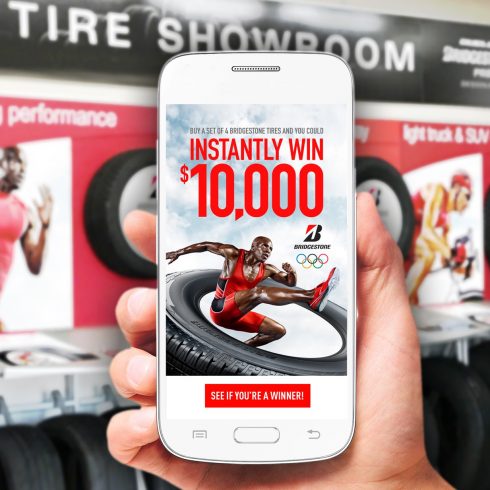
Client: Bridgestone Tire
Campaign: Turn Passion Into Performance
Agency: Arc Worldwide Chicago
Best Multidiscipline Campaign – Bronze Winner

Client: Bridgestone Tire
Campaign: Turn Passion Into Performance
Agency: Arc Worldwide Chicago
Bridgestone faced multiple business challenges. From a brand standpoint, its awareness and market share lagged behind the category’s two undisputed leaders: Goodyear and Michelin, and customers who did know Bridgestone might not think of it as a premium brand.
To increase sales and awareness from both consumers and sales associates, Bridgestone aligned with a global property synonymous with the brand’s passion for performance: the Olympic Games.
Tires are a high-cost, infrequently purchased category. Since tires can look similar, shoppers may struggle to differentiate and can rely too much on price, which hurts a premium brand like Bridgestone.
The Olympic program treated customers like athletes, who would be coached by sales associates to select the right gear to achieve maximum performance. A rebate offer timed to the games was backed by an Olympic-themed instant win game with bronze, silver and gold levels of cash prizes. The program spanned the entire Bridgestone dealer network, including 2,200+ company owned stores in the Bridgestone Retail Operations group as well as thousands of independent tire dealerships from coast to coast.
To help sales associates in every location treat customers like athletes, we armed the “retail coaches” with innovative educational messages delivered by former Olympian Michael Johnson. Teammates could also compete for the gold, with a new Olympic-themed sales incentive promotional program featuring a grand prize visit to the Colorado Springs Olympic Training Center. Every moment of training was rewarded, as were sales.
This integrated, promotionally driven campaign brought the passion and performance of Bridgestone’s Olympic partnership into every phase of the tire-buying journey. As our target sat at home watching the Olympics, visually stunning commercials showcased world-class Olympic performance with a twist. Instead of tracks or pools, Olympians excelled on Bridgestone’s home turf: the road. Broadcast and digital transformed athletes into Bridgestone tires, showing how they perform with Olympic-level passion.
The year-over-year sales goal for the promotional window during the Olympics activation was 5%; actual sales blew that goal out of the water by doubling it at 10%. But perhaps the biggest indicator of the program’s success was the huge rise in associate participation. Typical engagement is between 25-50%; this program set its sights at the highest end of that range with a goal of 50%. Associates shattered that benchmark with 80% participation.
Gold Winner

Client: HP
Campaign: Printing Reinvented
Agency: Infinity Marketing Team
Best New Product Launch – Gold Winner

Client: HP
Campaign: Printing Reinvented
Agency: Infinity Marketing Team
For HP’s biggest printer launch in a decade, the theme of reinvention had to apply to the event concept as well as deliver an experiential engagement no person had witnessed before. Such an ambitious undertaking came with matching launch goals. Customers, channel partners, analysts, journalists, and sales teams had to come away enlightened, motivated and hungry to learn more.
The company was set to unveil 15 new PageWide, Office Jet Pro and LaserJet printers, and new Secure Managed Print Services. On-site attendance and activation targeted a live audience of 3,000+ attendees and 60+ members of the press and analyst community.
To achieve its goals, HP wanted to yank the audience from their seats and take them somewhere they’d never been: inside the printer. The HP team built a colossal printer three stories high and over 30 feet wide on stage, dwarfing the presenter who would address the crowd from within the structure.
Such a unique, immersive stage experience required a monumental effort. Over a period of four months, the 3D-Cube installation’s creators—11 engineers, riggers, projectionists and technicians—rounded out an 80-person team that oversaw concept, lighting, sound, set, exhibition, content and management.
Seventeen HP Workstations powered the 3-D Cube to bring each printer’s inner workings to life, and seven animators and motion graphics specialists spent six months working with HP engineers to correctly portray every mechanism within the printers’ interiors, each mechanism’s exact movement, and the precise journey and timing of the printer paper.
The MEO Arena in Lisbon, Portugal was the selected venue of choice both due to its proximity to the majority of analysts/journalists as well as its capacity, as projection rigging 75 feet above the 3-D Cube’s ceiling was required.
Expecting the standard setup of a flat screen and PowerPoint slides, attendees instead witnessed a massive cube open to the audience when they arrived. The structure’s remaining four surfaces were built with projection screen material.
As the show began, the cube’s four surfaces lit up super-bright with high-definition animation from rear projectors, synchronized from four different angles. At a pivotal moment, the viewpoint zoomed from outside the printer to the inner workings. They then witnessed the device’s rollers, printheads and toner producing stunning documents at impressive speeds.
Launch results surpassed HP’s most aggressive projections by 2 to 3 times. For example, 79,144 organic Twitter impressions on launch day represented an 8x increase over typical days. Among tech influencers, the launch generated over 93 million earned media impressions and 17,391 total engagements in Americas and EMEA. Global social media impressions were estimated at 17 million—3x HP’s goal.
Silver Winner

Clients: Mondeléz International, 7-Eleven
Campaign: Sour Patch Redberry Slurpee
Agency: Phoenix Creative Co
Best New Product Launch – Silver Winner

Clients: Mondeléz International, 7-Eleven
Campaign: Sour Patch Redberry Slurpee
Agency: Phoenix Creative Co
After a wildly successful 2015 summer mash-up for Slurpee and Sour Patch Kids, the team knew it had to up its game. Add to that, 7-Eleven was gearing up to celebrate one of its largest promotional events around the 50th anniversary of Slurpee.
In June 2016, a mega campaign for Sour Patch Redberry Slurpee took off with a major media outreach during Shark Week on the Discovery Channel. That teaser led the way to an in-store extravaganza with high-impact shelf talkers and wobblers in the candy/gum aisles; translites and flavor cards to grab consumer attention by the Slurpee machine; and eye-catching window banners, pump signage and billboards to drive traffic in store.
Every store received die-cut Sour Patch Kid window banners, translite danglers, Sour Patch Kids floor stands featuring die-cut Sour Patch Kids figures on the header, along with high impact front-end display trays to help drive impulse purchases at checkout and catch teen shoppers’ eyes.
On social, a digital blitz of super-sharable teen-targeted content spanned Facebook, Instagram, and YouTube—even a branded SnapChat lens for Bring Your Own Cup Day that generated +81% better views than the prior year’s program.
To keep the momentum going, the team crashed the number-one-watched teen TV program of the summer at Fox’s 2016 Teen Choice Awards with a TV spot and a behind-the-scenes Snapchat takeover with social influencer Baby Ariel, whose followers top 13 million to generate millions of impressions for the Redberry Slurpee and exclusive Redberry pack.
Results were red hot! SPK 4oz./5 oz. consumption was up +15%, driving overall category growth and outperforming 7-Eleven’s NCC Take Home Category (+12.4%). The Redberry Slurpee was the #4 selling Slurpee during the summer, outperforming all other limited edition flavors, behind only 7-Eleven’s best-selling Slurpee flavors. And, a recorded+1 billion impressions vs. prior year of 900MM impressions.
Bronze Winner
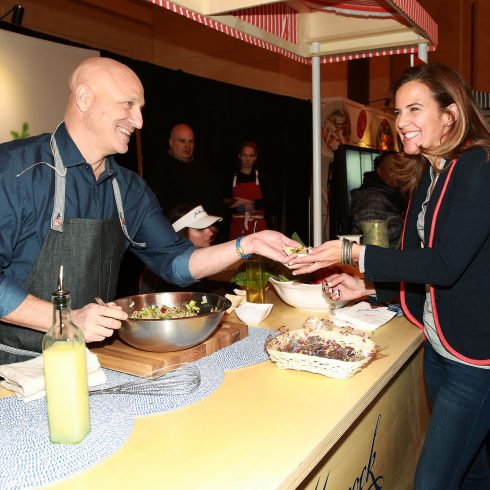
Client: Weber Shandwick
Campaign: John Hancock Vitality Marketplace
Agency: Inspira Marketing Group
Best New Product Launch – Bronze Winner

Client: Weber Shandwick
Campaign: John Hancock Vitality Marketplace
Agency: Inspira Marketing Group
In April 2015, John Hancock introduced a whole new approach to life insurance – one that rewards people for healthy living.
John Hancock Vitality Program combines traditional life insurance protection with a program that rewards people for healthy living and is widely regarded as one of the industry’s most innovative new products.
To support policyholders’ participation in the year old program, the Vitality HealthyFood benefit debuted in April 2016. With it, members can earn up to $600 a year in savings on the healthy food they buy at more than 16,000 grocery stores nationwide.
John Hancock has also partnered with the Friedman School of Nutrition Science & Policy at Tufts University, the only graduate school of nutrition in North America, to provide policyholders the evidence-based guidance they need to make smart food choices every day.
In order to get the word out and inspire members to sign up, John Hancock held a major launch event in New York’s Grand Central Station, hosted by celebrity chef Tom Colicchio. A number of top food and health bloggers were also present. These brand advocates helped build awareness by publishing key messages from the launch using their own channels.
Following the launch of the Vitality HealthyFood benefit, John Hancock hosted ‘influencer’ dinners that included representatives from various sectors including business, government, media, insurance and academic institutions.
In addition, John Hancock worked with Chef Colicchio to develop a series of videos to support the launch of the program. The videos were promoted on social media outlets and featured prominently on www.JHRewardsLife.com, the consumer website and www.JHRedefiningLife.com, the producer website.
The Vitality HealthyFood launch was further supported by a series of emails to producers and members, printed mailers, and a variety of other communications.
The launch event in New York was attended by more than 4,500 people, with thousands more learning about John Hancock and the Vitality HealthyFood benefit as they passed through Grand Central station. An accompanying media program generated 560 million total media impressions and 1,700 placements, and more than 230,800 people viewed Colicchio’s launch video.
Gold Winner
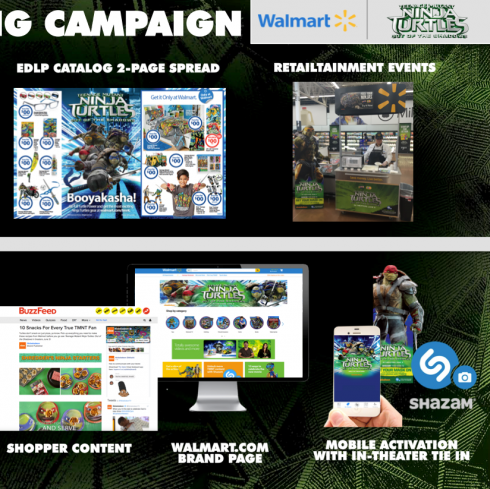
Client: Nickelodeon
Campaign: Teenage Mutant Ninja Turtles: Out of the Shadows
Best Retail Campaign – Gold Winner

Client: Nickelodeon
Campaign: Teenage Mutant Ninja Turtles: Out of the Shadows
To promote the theatrical release of “Teenage Mutant Ninja Turtles: Out of Shadows” and solidify Walmart as the ultimate destination for TMNT consumer products, Nickelodeon set out to develop a comprehensive marketing campaign that would promote product sales and drive theater traffic.
With 30+ years of history, TMNT has multi-generational appeal and fits in with Walmart’s family focus. The program promoted product solutions for every member of the family, but the target purchaser was moms of boys/kids 4-11, with dads excited to share their own TMNT fandom being a secondary target.
The primary challenge was differentiating the TMNT promotion at Walmart from other retailers, as shoppers have numerous options for purchasing licensed merchandise. Walmart had more exclusive TMNT items than anywhere else, and TMNT delivered more exclusives to Walmart than any of the competitive “big bet” entertainment initiatives for the year. The Turtles truly took over the store. Shoppers couldn’t miss the 16-foot-long cross-category pallet train and 9 other incremental features across the box.
In theater, moviegoers could interact with signage, see ads for TMNT product on screen and receive giveaways to celebrate the movie release. Online, targeted TMNT ads and content drove fans from across the web to a dedicated hub on Walmart.com.
An exclusive mobile experience via Shazam utilized new visual recognition technology and its established audio recognition technology to serve content and offers to shoppers. In theaters, moviegoers could scan posters with the Shazam app to instantly shop products and access exclusive content. In-store, shoppers could scan signage to access movie ticket offers and added-value product content.
The campaign also featured promotion via newspaper circulars, a BuzzFeed partnership, 2,000+ in-store events, Facebook advertising and SnapChat geofilters in theaters and stores.
This TMNT campaign achieved both Nickelodeon’s and Walmart’s goals. This was Nickelodeon’s largest retail marketing program ever, garnering 3+ billion impressions. The merchandising program, including product for every demographic across 40 departments and 30+ exclusive items helped propel Walmart to 67% share of the TMNT mass retail business, significant growth from the year prior.
Silver Winner
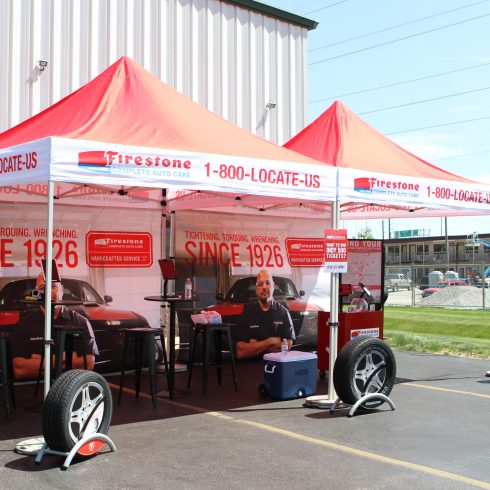
Client: Firestone Complete Auto Care
Campaign: Pop-Up Vehicle Courtesy Check
Agency: Marketing Werks
Best Retail Campaign – Silver Winner

Client: Firestone Complete Auto Care
Campaign: Pop-Up Vehicle Courtesy Check
Agency: Marketing Werks
Firestone Complete Auto Care (FCAC) has been delivering top-notch, quality auto care for more than 90 years. But most people don’t think “full-service maintenance” when they hear FCAC. They simply think tires. It was time to get the word out for its expertise in full product service offerings.
The team worked around the insight that the ease and comfort of a nearby car guy or gal would immediately help build the foundation for a more trusting relationship between FCAC and the customer. Enter the first-of-its-kind FCAC Pop-Up Vehicle Courtesy Check.
Courtesy checks popped up in high-traffic areas within two miles of FCAC retail locations to ensure that every technician onsite was close by for future appointments. Cars were assessed with personal consultations and follow-up appointments booked—right on the spot.
The FCAC Vehicle Courtesy Check broke down the walls of automotive service mistrust and introduced potential new customers to the brand in a way that exceeded expectations of both the brand and the consumer.
The results fired on all cylinders. One-hundred percent of the courtesy checks were given to non-FCAC customers, doubling the program goal.
Bronze Winner

Client: Mars Chocolate North America
Campaign: Say Thank You With M
Agency: Catapult
Best Retail Campaign – Bronze Winner

Client: Mars Chocolate North America
Campaign: Say Thank You With M
Agency: Catapult
This retailer-specific program created a new way for Mars to connect with Walmart shoppers.
Mars knew that Walmart embraces a patriotic theme and its shoppers have a strong affinity for supporting the military. This linked well with one of Mars signature products, M&Ms, which was created as US troop rations. The company’s 75th anniversary was a natural time to focus on its heritage.
The “Say Thank You With M” campaign unified three American icons—M&Ms, US troops and Walmart—to create one simple shopper solution. By transforming summer into a “fifth season” of giving to the military, the brand boosted customer loyalty for Mars candies and drove incremental sales at Walmart.
Walmart shoppers love America and Americana. They are proud of their military, want an easy way to say thanks. This is especially true for millennials, who are more likely to buy a product if it’s tied to a good cause.
No matter where shoppers encountered the omnichannel campaign—including NASCAR events—they were greeted with one simple yet powerful conversion message: 1 for You = 1 for Troops.
The “fifth season” for buying candies—beyond Valentine’s Day, Easter, Halloween and Christmas—lasted months instead of one day. Built on patriotism and honoring those who serve our country, the red, white and blue M&Ms became a fun and innovative way for customers to show their patriotism at home and to the troops they so admire.
The promotion’s authenticity resonated with shoppers, given Walmart’s well-established patriotic support of the troops, M&Ms roots as a military ration, and Mars’ celebration of its 75th anniversary.
The campaign achieved well beyond all benchmark impressions and engagements, exposing 33% new shoppers to the brand.
Walmart has doubled the retail buy for 2017 and extended “Say Thank You With M” to more than 4,000 stores—an increase of 20%.
Gold Winner
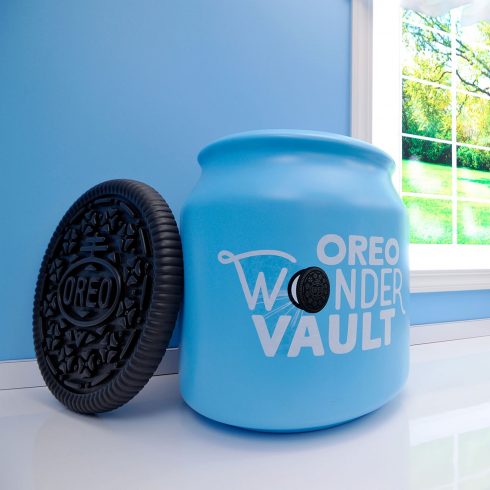
Client: Mondeléz International
Campaign: Choco Chip Oreo Wonder Vault
Agency: Momentum Worldwide
Best Sampling or Trial Recruitment Campaign – Gold Winner

Client: Mondeléz International
Campaign: Choco Chip Oreo Wonder Vault
Agency: Momentum Worldwide
The new limited-edition Choco Chip OREO cookie blended two of the world’s most popular cookies—the iconic OREO and chocolate chip—creating a one-of-a-kind cookie inspired by the taste of childhood.
To promote the new cookie, Oreo took over a vacant storefront in the ultra-hip Los Angeles neighborhood of Silver Lake and crafted an experience that evoked nostalgia for childhood.
The space was transformed from a retail storefront into an OREO Wonder Vault, with an opaque exterior painted in OREO’s “Wonderfilled” blue brand color. To reinforce the idea of entering a “vault,” the entrance was a single door with a giant iconic OREO cookie mounted on the front. Without revealing the magic within, the event exterior was purposefully designed to generate curiosity about the OREO-branded experience inside. Outside the entrance, brand ambassadors encouraged passersby and pedestrians to enter the mysterious vault. A line formed quickly as news spread by word-of-mouth and social media about the one-day event.
Visitors entered a nostalgic home kitchen filled with warmth and personality that magically transported adults back in time. Everything was engineered at a larger scale to make them feel smaller, and see things from the perspective of a child.
As consumers walked through the OREO door, they saw a towering refrigerator was covered in colorful alphabet magnets that pinned up childlike scribbles. In the center of the room was a massive wooden kitchen table. Adults had to crawl up onto huge white kitchen chairs to read The Wonderfilled Times, an oversized newspaper filled with branded content. Although the Wonder Vault was designed to be experienced in real life, social media photo-ops created opportunities for consumers to share the day online.
The OREO Wonder Vault activation made a splash locally and captured worldwide interest, thanks to PR efforts and word-of-mouth. During and after the activation there were104MM social impressions, 150K social engagements and 60% messaging pull-through. Across the airwaves, the campaign received national coverage on ABC, NBC, and CBS affiliates to make 6.5MM impressions.
Silver Winner
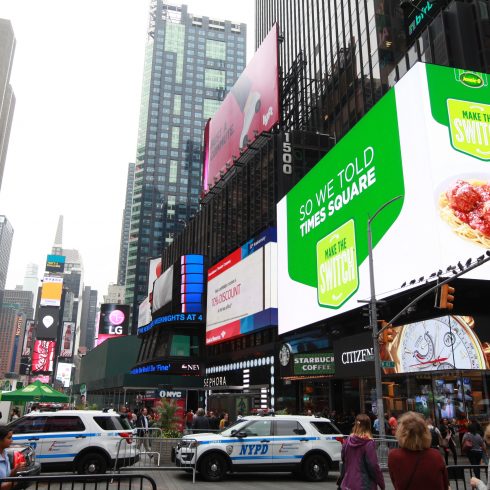
Client: Hormel
Campaign: Jennie-O Make the Switch Tour
Agency: Match Marketing Group
Best Sampling or Trial Recruitment Campaign – Silver Winner

Client: Hormel
Campaign: Jennie-O Make the Switch Tour
Agency: Match Marketing Group
The Jennie-O Turkey Store sells a variety of fresh turkey products at supermarkets and put a plan in place to squash public opinion that turkey is reserved only for holidays or—gasp!—less delicious than beef or pork.
The Jennie-O Make the Switch Tour hit both high traffic and sponsored events in L.A., Miami, Denver, Seattle and New York, targeting women ages 36-45. Two large booths and an onsite food truck provided the backdrop for guests to sample 22,000 market-specific, locally inspired recipes made with Jennie-O turkey—such as green chili, tacos or lettuce wraps.
Custom, in-booth technology captured photos of people enjoying the turkey samples, and a post-photo shoot survey noted their reactions to the recipes. Close to 12,000 consumers generated 5,856 videos that were featured in Times Square and on YouTube along with Jennie-O’s dedicated social channels. An on-site mobile jumbotron broadcast real-time content showing people sampling and enjoying the recipes. Some guests even appeared in national TV spots and print ads.
Guests finished their samples outside the booth while they watched their videos appear on the jumbotron, increasing dwell time and creating interest among people who were passing by. The tour was amplified through social, digital, print and TV.
The overwhelming majority of attendees (86%) said they “Loved It” during the rating portion of the sampling engagement. After the program’s wrap, Jennie-O realized a 31.7% sales increase vs. YOY.
Bronze Winner

Client: Philadelphia Flavored Cream Cheese
Campaign: Philly Flights of Flavor
Agency: Arc Worldwide Chicago
Best Sampling or Trial Recruitment Campaign – Bronze Winner

Client: Philadelphia Flavored Cream Cheese
Campaign: Philly Flights of Flavor
Agency: Arc Worldwide Chicago
Many people only associate Philadelphia cream cheese with their morning bagels. But as bagel sales have started to decline, the brand needed to drive consideration and sales of its flavored cream cheese with shoppers at grocery stores by showcasing new usage occasions beyond the morning bagel.
Philly’s variety of 12 different flavor offerings can be used for multiple occasions beyond breakfast. However, awareness of these flavors and consideration in new usage occasions was really low, particularly among millennial shoppers.
How do you show these Millennial “Culinary Tourists” that Philadelphia Cream Cheese is more than a boring bagel wing-man? Taking inspiration from the trend of tasting flights, the brand launched “Philadelphia Flights of Flavor,” a sampling and promotional program that takes people on a journey to try all of Philly’s different flavors in a variety of snackable forms during their grocery shopping adventure.
From savory to sweet, spicy to fruity, Philly’s Flights of Flavor demonstrated how delicious Philly is on a cracker, a chip and even a slice of fruit.
The tasting flights were paired with a take-one a coupon to encourage trial of additional flavors and ideas for carriers (crackers, fruit, veggies) that would pair well with those flavors, potentially increasing basket ring in produce and center store for grocery retailers.
The take-one also invited shoppers to join Philly online for more flights and a contest encouraging Philly lovers to share their own cream cheese creations.
Overall, participating grocery stores saw 26% national sales lift of flavored cream cheese during the program time period.
Gold Winner
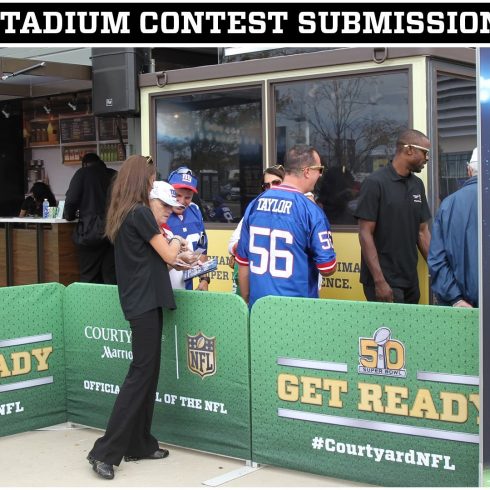
Client: Courtyard by Marriott
Campaign: Journey to Super Bowl 50
Agency: IMG LIVE
Best Sports Sponsorship or Tie-in – Gold Level

Client: Courtyard by Marriott
Campaign: Journey to Super Bowl 50
Agency: IMG LIVE
Gaining the trust of the NFL and their security team to agree to fans sleeping in the stadium the night of a very anticipated, highly secured event—Super Bowl 50—was nothing short of a miracle.
Throughout the season, the “Suite Stadium Contest” encouraged fans to submit a video to enter the competition via Twitter or Instagram. The submissions featured fans’ responses to a challenge that Courtyard posed each week and incorporated the contest hashtag, #SuiteSB50Contest. Online, fans cast votes to determine the winner.
In the background, Courtyard worked with the NFL to design the physical transformation of the stadium suite into an exact replica of a Courtyard hotel room. With the help of the Courtyard Design and Development team, the IMG LIVE team was able to secure all elements that make up a Courtyard CYnergy room to include a headboard, beds, bedding, end tables, couch, curtains, desk, lamps and lounge chair. A space fit for a passionate football fan.
Several NFL players and alumni scribble signed notes on the walls for the winners to discover, including a “Sweet Dreams” message from Dallas Cowboys Quarterback Tony Romo. To top that off, NFL legend Tony Gonzalez stopped by the suite to take on the guests in a game before dinner and Derek Carr surprised them with breakfast in bed the morning of the Super Bowl.
The winners’ experience was truly once-in-a-lifetime. They were treated liked VIPs from the second they landed in San Francisco. They had their own branded SUV at their disposal the entire weekend, attended the official Courtyard VIP party and met NFL greats including Tony Romo and Steve Young.
Overall, “Journey to Super Bowl 50” included eight tailgate activations, 231,475 fan interactions, and 364 million PR impressions for the content. Social impressions topped 2.3 million and another 56.9 million for the contest. Now that’s a touchdown!
Silver Winner
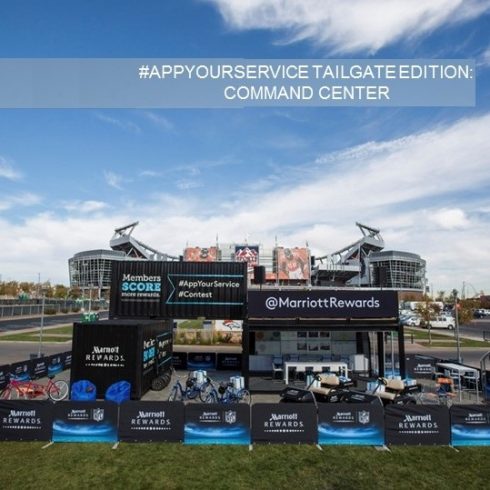
Client: Marriott International
Campaign: Marriott Rewards #AppYourService Tailgate Edition
Agency: IMG LIVE
Best Sports Sponsorship or Tie-in – Silver Winner

Client: Marriott International
Campaign: Marriott Rewards #AppYourService Tailgate Edition
Agency: IMG LIVE
Marriott Rewards penetrated the Denver, Green Bay and Houston stadium tailgate communities on game day in an effort to generate buzz and awareness for its mobile request app. Via social media, fans were asked, “If you had a concierge at your tailgate, what would you ask for?” and Marriott Rewards responded to their requests in real time.
Within a command center, social teams tracked requests and identified prize recipients. Marriott Red Coat ambassadors were on deck, ready to fulfill requests such as ticket upgrades and tailgate amenities. Once identified, the Red Coats personally delivered all prizes directly to the tailgaters. Short videos, gifs, and candid photography were captured throughout the experience, edited on-site, and pushed out through Marriott Rewards social channels to provide stories that shared the excitement of the experience far beyond the tailgates.
Marriott Rewards utilized multiple social tools to listen in on the social conversations during the promotion. Projected on eight high-resolution screens within the social command center, the team used Sysomos to help analyze, capture and illustrate the social conversation live on site so the ambassadors could then execute surprise and delights. Additionally, Hyp3r created a compelling visual of live-event statistics and performance, which aided social teams conversing with potential winners.
The brand achieved its goals to generate social media buzz and PR impressions and to reinforce the value of Marriott Rewards membership by providing immediate gratification and benefits that non-Members could never access on their own.
Close to 300 prizes were delivered to fans at three tailgates within a three-to-four hour window. The #AppYourService tailgate edition garnered hundreds of tailgate-themed service requests via twitter, leading to over 50 million PR and social impressions. There were more than 5 million video views of shared content. Digital and mobile channels were leveraged to drive an additional 1.5 million impressions of the mobile service request feature.
Bronze Winner
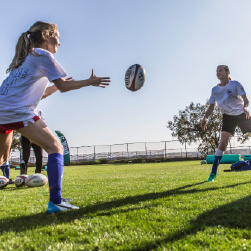
Client: DICK’s Sporting Goods
Campaign: The Contenders
Agency: Octagon
Best Sports Sponsorship or Tie-in – Bronze Winner

Client: DICK’s Sporting Goods
Campaign: The Contenders
Agency: Octagon
As an official partner of the U.S. Olympic Committee, DICK’S Sporting Goods wanted to create a campaign built on an authentic partnership with the athletes of Team USA. The goal was to support the mission that DICK’S lives every day—inspire, support and equip athletes—and bring that same spirit to the Olympics.
DICK’S recognized that for every successful athlete who makes it to the Olympic podium or gets interviewed on TV, there are a thousand who sacrifice everything just for a chance to compete. These athletes are the reason DICK’S exists. They are “The Contenders.”
Instead of simply putting them in an ad or writing a check, DICK’S formed real partnerships with the athletes. The retailer empowered The Contenders with paying jobs, performance equipment and team benefits. DICK’S used in-game messaging, PR, print, digital, direct mail, community marketing events, and our stores to tell stories of their real sacrifices, and went beyond the household names, to feature the unheard of and overlooked athletes of Team USA.
By taking a more authentic approach and garnering a true partnership with Contenders, DICK’S aimed to be recognized as a true supporter of athletes everywhere.
While US Olympic Committee sponsors have hired Olympic & Paralympic hopefuls in the past, DICK’S did not know how athletes would react to the opportunity to work in its retail stores. Interest was well beyond expectations. In the end, DICK’S employed 200 athletes across 106 stores.
DICK’S Contenders website became a hub for hundreds of stories where viewers could learn more about these incredible athletes. The Contenders stories generated 451,067,111 impressions on social media.
In addition, DICK’S donated $1,000 to youth sports for every medal won by Team USA, for a total of $236,000.
Gold Winner

Clients: McDonald’s, Coca-Cola Co.
Campaign: Sip Share Win
Agency: Arc Worldwide Chicago
Best Use of Content Marketing – Gold Winner

Clients: McDonald’s, Coca-Cola Co.
Campaign: Sip Share Win
Agency: Arc Worldwide Chicago
The challenge was to put a fresh spin on the old Monopoly “peel and win” style promotion and create a new modern and progressive sweepstakes that would drive brand engagement. And with soft drink sales sluggish and summer on the way, it was not the time to roll the dice.
With Millennials as the target, McDonald’s and Coca-Cola partnered for “Sip Share Win” and tied the program to high profile “The Late Late Show” host James Corden and his wildly popular Carpool Karaoke. Carpool Karaoke embodies summer and the on‐the‐go lifestyle of the target audience as he drives around singing with his celebrity friends like Adele and Justin Bieber.
The program’s intent was simple: create a socially led campaign to drive consumers to McDonald’s drive‐thru to order a Coke and share a selfie or video with a specially marked cup for a chance to win a VIP experience at “The Late Late Show with James Corden.” The campaign rode the segment’s popularity online to start the conversation and deliver earned media in the absence of any paid. Some 25,000 sweeps entries crushed the benchmark of 13,000.
“Sip Share Win” launched with a special Carpool Karaoke segment featuring mega star Selena Gomez and James Corden going through the McDonald’s drive-thru and engaging with the branded packaging. The segment became one of the most watched videos on the Internet that June with 49MM views.
A YouTube pre-roll pushed the VIP experience with more than 4.5MM views and social influencers (Nascar driver Jamie McMurray, U.S. Soccer player Alex Morgan, singers Leslie Grace & Andra Day) drove engagement. Social mentions topped 30K with a benchmark of 15-20K.
Silver Winner
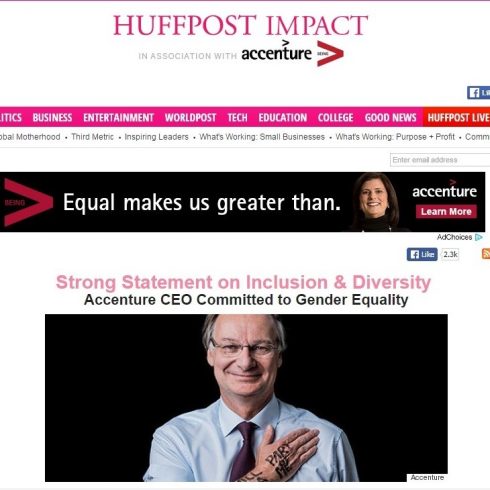
Client: Accenture
Campaign: Being Greater Than
Agency: TBWAChiatDay
Best Use of Content Marketing – Silver Winner

Client: Accenture
Campaign: Being Greater Than
Agency: TBWAChiatDay
Professional services company Accenture pledged to grow the percentage of women it hires to at least 40% worldwide by 2017. To help achieve the goal, the company put together a content marketing strategy to communicate its commitment to gender equality and to attract talent to Accenture.
The “Being Greater Than” campaign showcased inspiring stories about Accenture women on The Huffington Post and accenture.com, targeting both existing female employees and potential recruits.
The strategy focused on the insights that potential employees visit accenture.com for—to learn about employment opportunities, the corporate culture, values, work/life balance and the company’s overall commitment to gender equality.
The stories are told through articles, blogs, videos and photos, as well as republished or linked-to news articles from various media outlets, including Fortune, The Financial Times, The Huffington Post and more.
By partnering with renowned filmmaker Robert Fogarty, founder of the Dear World project, the team created stunning, ground-breaking videos of both the top leadership and select employees discussing gender equality and what it means to them personally. The brand also teamed with MOFILMS, a global community of filmmakers, to showcase stories of women breaking barriers and the main “Being Greater Than” page is available in French, German, Italian, Portuguese, Chinese and Japanese.
The content has drawn 342K total visits and counting, including 49k visits from Accenture employees, representing 14% of total visits to the content, up from the typical 6%. Social media reach grew to 142M, led by content shared from branded social media accounts. Engagement grew 25% to 67K.
Bronze Winner

Client: Grant Thornton
Campaign: Election Series Campaign
Best Use of Content Marketing – Bronze Winner

Client: Grant Thornton
Campaign: Election Series Campaign
Business leaders and key decision makers are looking toward the future, thinking about what the new Trump administration and Republican-controlled Congress will mean for their businesses, in both the short and long term.
Through its “Election Series” campaign, Grant Thornton set out to gather content and interactive tools to provide its clients with real insights during the lead-up and aftermath of the U.S. election, to help them navigate the evolving political landscape.
Grant Thornton’s multifaceted “Political Pulse” incorporates digital and content marketing, economic modeling and research, and strategic collaborations with political analysts and economic luminaries, as well as its own public policy and tax subject-matter specialists.
The “Election Series” also collaborated with outside luminaries, including Charlie Cook and Oxford Economics, to provide expert insight into the likelihood and impact that aggressive policy changes may have on business.
The marketing campaign included numerous articles (e.g., “Top 10 Takeaways in 2016 Election Results”) as well as pre- and post-election webcasts (e.g., “U.S Elections: Predictions and Business Impact” with political analysis Charlie Cook).
Results were impressive. The email campaigns saw a 14% open rate and a 1.65% site conversion rate.
Grant Thornton’s website saw 2,300 page views over four weeks, with the most popular web page in the Political Pulse section accounting for 32% of all unique page views. The most engaging page, however, beat the site average by 392%.
On social media, Twitter posts had 42,000 impressions, while LinkedIn had 298,000 impressions.
Gold Winner
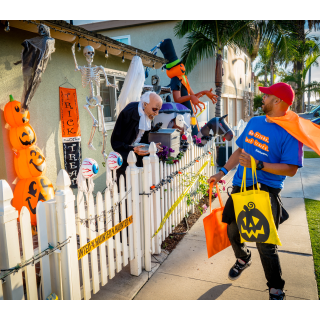
Client: Southwest Airlines
Campaign: No Tricks. Just Treats.
Agency: 206Agency
Best Use of Disruptive Marketing – Gold Winner

Client: Southwest Airlines
Campaign: No Tricks. Just Treats.
Agency: 206Agency
To make its point that Southwest Airlines is the only airline that can say “YES” to its customers—no hidden fees, no baggage fees and the ability to use Rapid Rewards points for any flights without blackout dates—it put a spin on Halloween with the “No Tricks. Just Treats.” campaign.
On the evening of Oct. 31, 2016, Southwest took to the streets of Los Angeles in 14 of the best Halloweening neighborhoods—and where Southwest’s target demographics live. Each neighbor the team came upon was given the opportunity to reach into a treat bag and pull out a Halloween card that offered varying denominations of Southwest Rapid Reward points.
Those that pulled a card were also encouraged to post a picture of the experience to Twitter and Instagram using #NoTricksJustTreats to be entered for a chance to win 100,000 Rapid Rewards points. Thousands of posts drove even more impressions, including 100 customer tweets, 6,548 Instagram posts, and at least 4,750 Facebook posts.
The campaign was a treat for Southwest too! The team interacted directly with a whopping 12,674 customers in four hours and saw a striking redemption rate of 14.68%.
Silver Winner
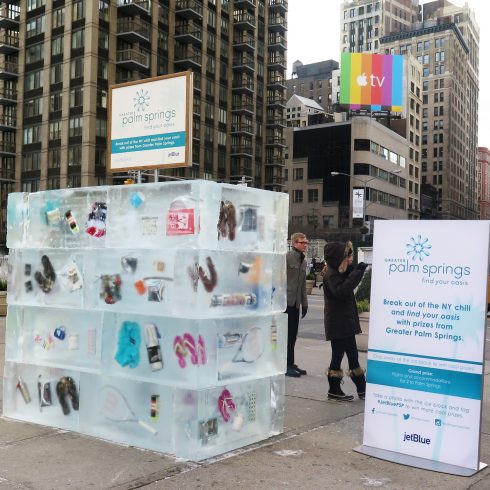
Client: Greater Palm Springs Convention & Visitors Bureau
Campaign: NYC Ice Block Challenge
Agency: Ignited
Best Use of Disruptive Marketing – Silver Winner

Client: Greater Palm Springs Convention & Visitors Bureau
Campaign: NYC Ice Block Challenge
Agency: Ignited
Greater Palm Springs’ nine resort cities have a lot to offer visitors—particularly New Yorkers in search of a winter getaway, since the region and JetBlue have partnered to provide seasonal, nonstop flights from New York to Palm Springs since January 2016.
At two high-traffic locations in Manhattan—Flatiron Plaza and Washington Square Park—the team created six-foot tall ice blocks frozen with themed prizes for participants to break out. Consumers stumbled upon the ice blocks during their morning commute or walk to classes, piquing intrigue and curiosity.
Prizes frozen inside the blocks included items to enjoy if you got out of the New York cold and into the warmth of Palm Springs—GoPros, Bluetooth speakers, GPS-branded golf clubs, tennis racquets, resort wear, yoga mats, spa essentials and even a BMW Performance Driving School Experience. One grand prize in each ice block was a set of round-trip flights on JetBlue and resort stays for two in Greater Palm Springs. Not only could people participate on-site, but also across the country through social contests and engagements supported by #JetBluePSP.
The activation was timed to one week prior to the inaugural JetBlue JFK-PSP flight that January, seeking to fill any remaining seats on the early flights, and taking into account the start of NYU’s Spring semester when students returned to campus.
Overall, the brand activations pulled in about 46,000 impressions and an estimated 350 people chipped away at the ice blocks. Reach for #JetBluePSP mentions was 2.7 million with 56 retweets increasing the mentions to an additional 229,450 people. The hashtag also reached 232,454 Instagrammers. Views of the sizzle video reached 132,000. News outlets and bloggers also took note. Now that’s one cool promotion.
Bronze Winner
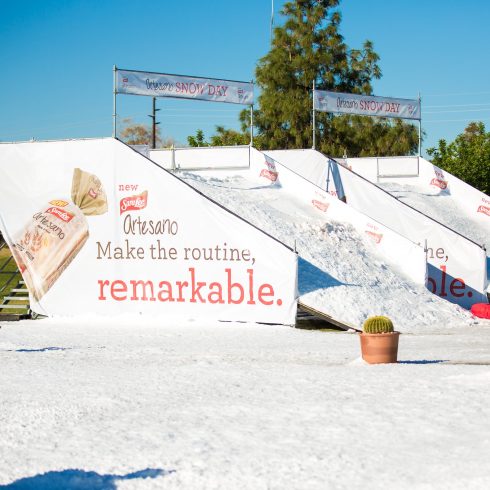
Client: Sarah Lee Artesano Bread
Campaign: Snow Day
Agency: Inspira Marketing Group
Best Use of Disruptive Marketing – Bronze Winner

Client: Sarah Lee Artesano Bread
Campaign: Snow Day
Agency: Inspira Marketing Group
Let’s face it—bread isn’t the sexiest of items at the grocery store. In fact, for many consumers, their choice of bread is automatic, generally picking the same loaf they’ve been purchasing for the past year or so.
Thus, in an effort to grow its brand and capitalize on the artisanal food trend, Sara Lee saw an opportunity to launch a new, artisan-style bread—full of rich flavor and without high fructose corn syrup.
With that in mind, Sarah Lee set out to bring excitement to the often-overlooked category in a way that would go viral and elicit shareable content.
Since Sarah Lee’s Artesano bread brings a piece of the fresh and remarkable to stale grocery aisle shelves, the plan was to bring that experience to an average park in Arizona. When unsuspecting consumers went for a stroll through Kiwanis Park, they were shocked to be greeted by a winter wonderland. This was no mirage—Sara Lee brought a real snow day to middle of the desert: more than 200 tons of freshly-made snow, two frosty hills measuring 10 feet high, sledding tubes and props for building snowmen.
To fully maximize the day in snow, a chalet and lodge tables were built next to the sledding hills. And consumers could treat themselves to a sandwich at the chalet—on Artesano bread, of course.
By bringing consumers a taste of the unexpected, the Artesano Snow Day sparked a conversation around the brand that reached well beyond the boundaries of Tempe. With a desire to allow consumers nationwide to experience how the brand can make the everyday extraordinary, Sara Lee shared the event on YouTube.
Ultimately netting over 1 million views, the viral video helped Artesano secure the spotlight when it comes to artisanal bread.
Gold Winner
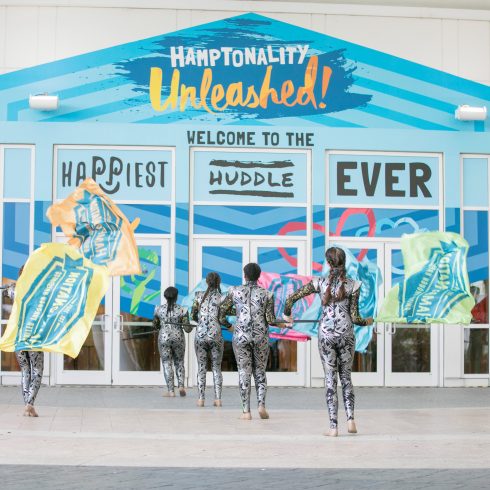
Client: Hampton Hotels
Campaign: Hamptonality Unleashed! 2016 Happiest Huddle Ever
Agency: agencyEA
Best Use of Event or Experiential Marketing (Five Venues or Less) – Gold Winner

Client: Hampton Hotels
Campaign: Hamptonality Unleashed! 2016 Happiest Huddle Ever
Agency: agencyEA
When 3,000 Hampton Hotels general managers gathered for “The 2016 Happiest Huddle Ever” in Orlando last year, agencyEA was on the job delivering a state-of-the-art, interactive experience around the “Hamptonality” theme of happiness, friendliness and connectivity.
The main “huddle” space included a custom-built smiley face stage, 10 screens and stadium seating. Outside on the hotel promenade was the most frequented activation—a custom-built networking swing set that turned attendees into kids again.
The “Sneaky Card” activation put decks of cards on 2,800 chairs that contained acts of kindness instead of card suits. Each act was trackable and once completed was to be passed on to a new person to complete for a total 1,172 and counting.
The HamptoNation flag initiative called for crowd sourced interactive content. Months prior to the event, blank flags were distributed to over 2,200 hotels. GMs worked with their teams to design flags to showcase their hotel’s local flavor. The flag library was housed in an interactive kiosk and microsite where users could create a postcard of their flag to send to their team back home. Some 1,663 flags were created and also rigged throughout the conference space.
The Smile Swag Vending Machine was the breakaway conference entry point. With the look of a classic vending machine, it used smiles as currency to determine when the attendee was smiling then snapped a screenshot and vended a prize.
The Happiest Huddle Ever closed out with a mini music festival appropriately titled, “HamptoNation Celebration…Soundtrack of Happiness.” During the final Main Huddle session, the promenade turned into a musical landscape, complete with five distinct and immersive genre-themed areas, four stages and six entertainment acts.
And happy they were. Close to 90% or more of attendees reported they were happy with the Huddle, left prepared to lead and inspire their teams and other happy comments.
Silver Winner
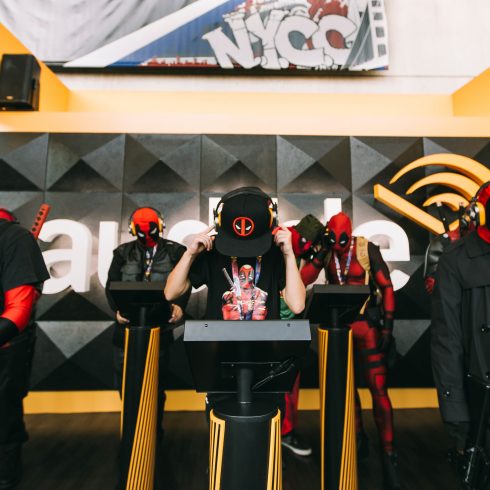
Client: Audible
Campaign: Audible Recall
Agencies: Jack Morton Worldwide, Genuine
Best Use of Event or Experiential Marketing (Five Venues or Less) – Silver Winner

Client: Audible
Campaign: Audible Recall
Agencies: Jack Morton Worldwide, Genuine
Audible is the world’s largest producer and seller of spoken word content. With over 180k titles in its library, it is capable of transporting imaginations to thousands of different worlds. But do you do that at New York Comic Con, where all ages and ethnicities are easily distracted?
Enter Audible Recall, an immersive trivia game where seven players compete to demonstrate their knowledge in a race against the clock.
Players listened to a series of six audio clips from some of Audible’s most notable sci-fi and fantasy titles. The goal? To select the corresponding book art from four multiple-choice options presented on screen. The faster and more accurate the response, the more points they received. At the end of the round, the player with the highest score was declared the winner.
Audible Recall was staged in a sleek, 20×20 foot booth containing seven audio stations, complete with touchscreens and headphones. A digital leaderboard tracked gameplay in real time and monitored players’ progress throughout the day heightening the competition. One 12-year-old played 40 times over four days!
Recall was supported by a number of brand activations.
A VIP card gave players a 30-day free trial of the Audible app plus a free audiobook download. Daily grand-prize winners got a pair of Master & Dynamic headphones. Celebrity author John Scalzi attended Comic Con as part of Audible’s panel and autograph section, and he competed against some of his biggest fans.
Over the four-day period, Audible Recall drew the direct participation of 3.8K+ conference attendees, increasing trial by 52%, which was over 3X higher than the initial goal of 15%. Downloads of the Audible app jumped from 517 in 2015 to 3,532 in 2016, achieving a whopping 580% increase. The game also earned 8M media impressions and increased social sharing at NY Comic Con by 485%. That success has parlayed into similar activations at Universal Studios Orlando and in Cambridge at an audible brand hosted Hackathon.
Bronze Winner

Client: O.N.E. Coconut Water by PepsiCo
Campaign: O.N.E. Yoga on the Rocks
Agency: The Integer Group
Best Use of Event or Experiential Marketing (Five Venues or Less) – Bronze Winner

Client: O.N.E. Coconut Water by PepsiCo
Campaign: O.N.E. Yoga on the Rocks
Agency: The Integer Group
O.N.E. Coconut Water needed a way to create a relevant and lasting impression with fitness enthusiasts that would be engaging in both the real and virtual worlds.
The Pepsi brand set out to deliver a relevant branded sampling experience to the 2,000 yogis who attended Yoga on the Rocks—an exhilarating workout at the awe-inspiring Red Rocks Amphitheater just outside of Denver, Colorado.
“Holistic Achievers” tend to use group fitness activities in conjunction with social media platforms to one-up their fitness benefits. Packed with functional hydration benefits, O.N.E. Coconut Water knew it could be a tool in this emerging smart fitness category.
Sampling in the context of physical activity was critical, because it was important to show participants the role that O.N.E. could play in their life by “One Upping Their Hydration,” which was the brand’s broader marketing campaign.
To keep the yogis hydrated and feeling good at the event, the brand delivered bottles of O.N.E. and branded yoga towels mat-to-mat.
To extend the event as a branded experience that could reach millions of would-be yogis worldwide, O.N.E. invited anyone with a yoga mat and a WiFi connection to join their fellow yogis for a once in a lifetime group fitness experience.
“O.N.E. Yoga On The Rocks (Live)” was a totally immersive yoga experience that harnessed the power and reach of 360 video and live-streaming capabilities to bring the scale, majesty and comradery to fitness enthusiasts around the globe.
Not only did the live stream and rebroadcasts create a lot of buzz for the brand, the experiences drove conversion. An Amazon SHOP NOW button made it easy for participants to go directly from downward dog to hydration with just one click.
Beyond views, clicks and cyber chakras, the most enlightening result of all was the realization that O.N.E. had created the largest live yoga class of all time. With nearly 1.5 million views, it surpassed the world record of the largest yoga lesson (multiple venues) with 62,824 participants in India.
Gold Winner
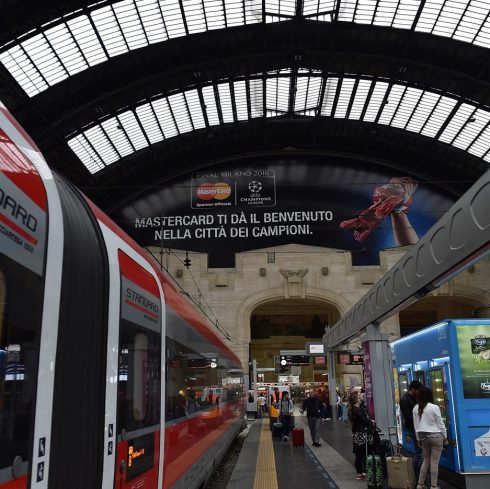
Client: Mastercard
Campaign: UEFA Champions League Final
Agency: Octagon
Best Use of Event or Experiential Marketing (More Than Five Venues) – Gold Winner

Client: Mastercard
Campaign: UEFA Champions League Final
Agency: Octagon
Mastercard wanted leverage fan insight to create an integrated marketing plan to reward cardholders and build buzz around the UEFA Champions League Finals.
The plan was to connect with three groups of football fans—hardcore fans, who regularly attend games and are passionate about their team; social fans, who are passionate about their team and the game but don’t attend matches often; and “big eventers,” folks who rarely attend games but are socially engaged.
The campaign debuted across digital and social channels with a launch video that garnered 8.7MM+ views in the buildup to the UEFA Final in Milan. Aiming to build excitement ahead of the Final, the campaign content was leveraged in 25 markets globally, while focused on key Mastercard markets in Italy, Germany, the UK and Spain.
The event campaign was integrated across all media channels and experiential marketing initiatives in order to convey a consistent brand message in the host city of Milan and ensure a maximum presence across the entirety of the fan journey throughout their UEFA Champions League Final experience.
Over 50 merchant partnerships and 3,500 point-of sale locations throughout Milan were leveraged to help Mastercard deliver “Priceless Surprises” and giveaways throughout the campaign. A button was delivered straight away which allowed Mastercard cardholders to collect a Priceless Surprise at Mastercard’s presence in the Champions Festival.
On the main Merchant street in Milan, cardholders could tap their contactless Mastercard and have a chance to win amazing prizes including tickets to the UEFA Champions League Final, signed jerseys and footballs.
Onsite in Milan, awareness and engagement was created via an integrated media plan developed to ensure top-of-mind presence throughout the fan journey. Paid media was positioned at strategic locations including airports, train stations and taxis reaching 80% of incoming fans.
In total, the digital campaign earned 300MM+ impressions, 37MM engagements and 35MM video views.
Silver Winner
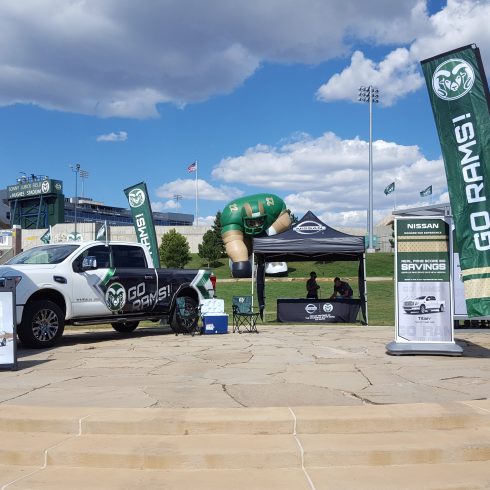
Client: Nissan North America
Campaign: Nissan College 100 Program
Agency: The Marketing Arm
Best Use of Event or Experiential Marketing (More Than Five Venues) – Silver Winner

Client: Nissan North America
Campaign: Nissan College 100 Program
Agency: The Marketing Arm
Nissan partnered with 100 colleges to create the widest reaching partnership in college sports history. The objective? To increase awareness of Nissan’s portfolio of vehicles, specifically the Nissan Rogue; build affinity for the brand; and serve as the most potent sales lead-generating marketing program for Nissan North America.
The solution? Drive game day excitement and onsite activation for the 22 million alumni and 188 million college fans across the nation with the “Take on Game Day” campaign and the “Nissan Diehard Fan Experience.”
The campaign covered everything from coating fans head-to-toe in school colors to hyping up fans with past Heisman winners, to providing unprecedented access to in-game moments and campus athletic events. A flexible onsite activation and toolkit catered to the diverse set of schools, regions and fans. Students could pose for a photo with a school specific wrapped Nissan and the school mascot, plus they could build and enter to win a customized Nissan TITAN in their school colors.
Nissan embedded 100 teams, all year long at each school and celebrated every victory and lived and breathed every loss with their school. Local dealers used the existing College 100 assets and staff for events at their dealerships.
By the end of the first year, lead generation metrics exceeded every expectation with a 200% increase over the pre-program goal. In addition, the Nissan Rogue was the featured car in the College 100 program, with placement at 77 of the 100 schools. For the first time ever, Rogue surpassed all other Nissan models to become the top selling model in the Nissan portfolio achieving a sales increase of 14.9 versus a year ago.
As part of Nissan’s “Go Big” marketing strategy, Nissan’s College 100 program led to a new calendar year sales record in 2016 selling 1,564,423 cars—making Nissan the fastest growing car brand in America in 2016.
Bronze Winner
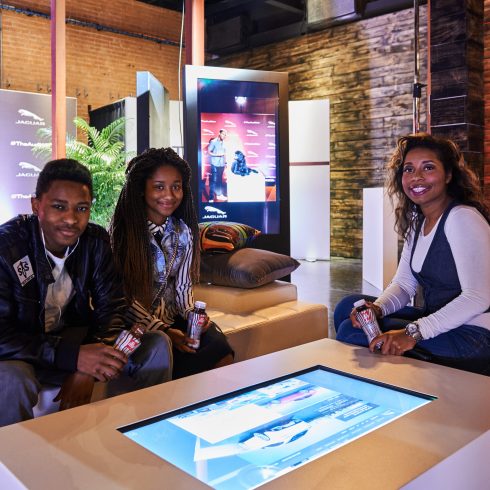
Client: Jaguar Land Rover
Campaign: The Art of Performance
Agencies: Automotive Events, Mindshare, Spark 44
Best Use of Event or Experiential Marketing (More Than Five Venues) – Bronze Winner

Client: Jaguar Land Rover
Campaign: The Art of Performance
Agencies: Automotive Events, Mindshare, Spark 44
To launch the XE, a compact premium sport sedan, Jaguar wanted to reach a new millennial audience who had luxury tastes, but not necessarily a luxury budget just yet.
The brand had less than half the budget of its last product launch and more than double the sales goals in the first year and needed to develop a campaign that would be efficient but still breakthrough in a cluttered market place.
Jaguar looked to reinvent the test drive with the Art of Performance Tour, an immersive brand experience that combined a physical and virtual test drives and took the showroom to millennials rather than expecting them to come to a dealership. The experience offered the exclusive opportunity to drive the new XE sedan on the street and on a high performance closed course, months before it became available to buy.
Attendees experienced the art of movie making and high performance driving through a personalized action-adventure 2-minute movie created using custom developed, patent pending video stitching technology. Each personalized film was delivered within minutes and instantly shareable. A partnership with Facebook and Instagram gave attendees the chance to create a 7-second profile video featuring their stunt driving scene.
Sign-ups were done online, and events were scheduled in the morning before work, at lunchtime, through the evening and on weekends. The tour took guests through six interactive environments, including a check-in where they were fit with RFID wristbands they wore throughout the event, the showroom, the movie, the actual test drive, a lounge featuring refreshments and comfy seating, and an exit survey.
Eighty-five percent of participants in the Art of Performance Tour were new to the brand, and the target millennial audience shared content at a rate of 50%. The campaign generated more than 242MM social impressions, 86.4MM PR impressions and 49MM video views. Conversations on Twitter reached a potential 5.5MM followers, and Jaguar received over 3,000 pre-orders for the new XE.
Gold Winner
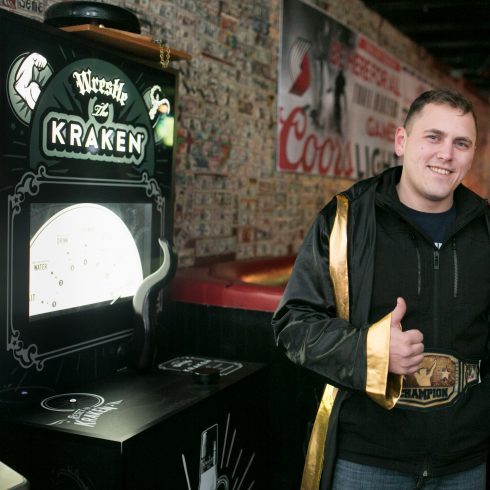
Client: Proximo Spirits
Campaign: Wrestle the Kraken
Agency: SoHo Experiential
Best Use of Gamification, Contests and Sweepstakes – Gold Winner

Client: Proximo Spirits
Campaign: Wrestle the Kraken
Agency: SoHo Experiential
Kraken Black Spiced Rum has an interesting history. It is named after Kraken, a mythical giant squid-like sea monster.
In 2016, when the Caribbean rum launched its new 70 Proof Dark Label variant in accounts across the country, SoHo Experiential brainstormed an on-premise sampling program with two goals: Get consumers to try the rum and reinforce the idea that Kraken is the life of the party.
In the initial launch, the primary target—young males of drinking age—were encouraged to capture a socially shareable GIF of themselves escaping a tentacle belonging to The Kraken. Sampling staff used custom made black tentacles as a prop to create a humorous GIF moment of the tentacle wrapping consumers up and pulling them out of the frame. As a competitive P-O-S giveaway mechanic, consumers had the chance to to win giveaways by playing the Escape The Kraken card game.
However, the pièce de résistance was the touring “Wrestle The Kraken” P-O-S arcade machine. The team engineered and built an old school arm wrestling game with a serious twist: in the place of the arm was a menacing, black tentacle where fans could literally “Wrestle The Kraken!” Players were ranked on a display meter anywhere from “Bait” for a low score to “Wait, Are You The Kraken?” for a high score. A prototype of the machine toured the country in the spring of 2016 appearing in nine different accounts over eight markets.
By fall 2016, demand was up and 20 additional machines were deployed in an addition fifteen markets for periods of up to two months. Sales teams used the machines to secure new product placements and provide full time brand visibility.
In select locations, brand ambassadors hosted the machine inviting players to don a boxer’s robe and hammer a boxing ring bell to signal the imminent battle with the sea beast. Following the match, consumers were encouraged to pose for a photo with a championship belt and share it on their social networks.
And the winner is? Kraken, with a total 724 on premise sampling events across 26 markets with 45,420 consumers sampled and 125,000+ “Wrestle the Kraken” game plays.
Silver Winner

Client: Adobe Photoshop
Campaign: There’s Magic Inside
Agency: Edelman
Best Use of Gamification, Contests, and Sweepstakes – Silver Winner

Client: Adobe Photoshop
Campaign: There’s Magic Inside
Agency: Edelman
The challenge was how to unlock the power of Photoshop, unleash the creative potential in users and convert Photoshop manipulators into Photoshop Magicians.
This unique experience, “There’s Magic Inside,” catapulted the Photoshop user into a magical, medieval world, in which they had to use their Photoshop mastery to save a kingdom torn apart by a King gone mad.
Players were encouraged to work collaboratively with others around the world to solve a myriad of riddles and challenges. Along the way they were also faced with unique challenges that required advanced skills such as ActionScripting and 3D modeling, pushing them further into Photoshop mastery. They shared Photoshop tips and tricks with each other, along with clues to the game, and even their own artwork—a natural byproduct of the game’s immersive nature.
Players were even allowed to interact with characters from the game through Q&A sessions on Facebook. And on the final day, a theatrical Facebook Live brought the characters fully to life and gave the players a chance to actually inform the outcome of the game, which lasted one week.
In the end, over 5,000 players discovered the mystery of a kingdom divided and a king gone mad. The campaign resulted in over 800,000 engagements, 25 millions impressions, and over 2 million views of the teaser video and Facebook Live performance.
Bronze Winner
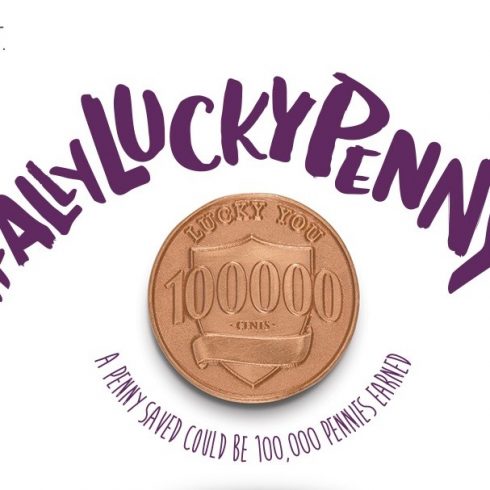
Client: Ally Financial
Campaign: Lucky Penny
Agency: Grey
Best Use of Gamification, Contests, and Sweepstakes – Bronze Winner

Client: Ally Financial
Campaign: Lucky Penny
Agency: Grey
People don’t generally pay attention to pennies—they neither care about them nor pick them up off the street. Ally wanted to change this behavior and inspire people to look at money in a different way with a simple social experiment: If the brand could get people to care about pennies, it could also get them to care about interest rates, home services and cash-back credit cards.
Ally’s strategy was to show consumers that each penny is worth picking up by giving them a fun and interactive way to think about the value of saving. What better way to spark a national conversation about finances than to show consumers that $75,000,000 is being left on the table each year and that they want to make sure they aren’t missing out?
The brand created the “Lucky Penny” campaign to help US consumers look at their money differently and understand the value of saving.
Without any advanced notice, Ally placed 100 ordinary looking “pennies” in 10 US cities in plain sight: on busy hiking trails, on city sidewalks, fishing piers, near landmarks, in parks and more. Each “penny” was specially marked with an Ally logo on one side and a call-to-action on the other: Visit AllyLuckyPenny.com and you could win $1,000.
Once the pennies were placed across the US, Ally relied on a fully integrated awareness push that included PR, social media, influencers, OOH media, and paid/owned media to let the country know these pennies were out there and drive engagement with the campaign.
While Lucky Pennies were dropped in 10 cities across four time zones, the conversation went national and spurred consumers to think about their money differently.
With the intention of driving awareness of the brand, the 350+MM PR & marketing impressions helped drive a 57% increase in awareness, the highest in Ally history. The epic reach of Lucky Penny also aided in Ally crushing its deposits goal of $9.5 billion by reaching $11 billion.
Gold Winner
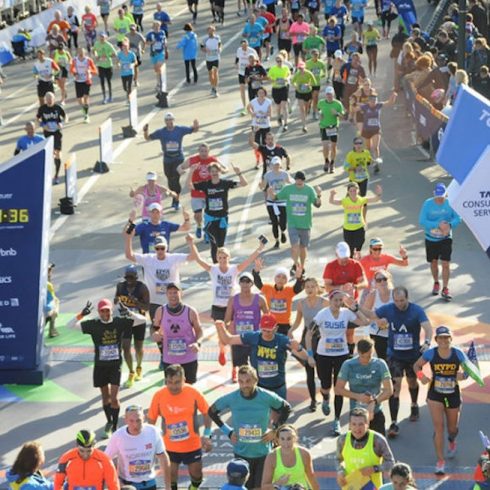
Client: TAG Heuer
Campaign: NYC Marathon
Agency: Havas Sports & Entertainment
Best Use of Influencer Marketing – Gold Winner

Client: TAG Heuer
Campaign: NYC Marathon
Agency: Havas Sports & Entertainment
Fortitude. Perseverance. Strength. The TCS New York City Marathon perfectly embodies the TAG Heuer mindset. That’s why TAG Heuer has been the official timekeeper and timepiece of the TCS New York City Marathon for the past three years.
To promote their new smartwatch, called the Connected Watch, TAG Heuer leveraged its sponsorship of the marathon to reach a younger, athletic audience.
A content influencer program followed runners at various skill levels as they trained for the NYC Marathon. While the watch was featured in the content, the main focus was the journey of the runners as they prepped for this grueling event. The objective was to show the watch is integral not only to the marathon, but also to all of life’s experiences and moments. Eight influencers were asked to participate in the marathon, and their journey was captured leading up the race, using the hashtag #DontCrackUnderPressure.
Content was available across the influencers’ social channels, across TAG Heuer’s social channels, and across relevant websites. TAG Heuer had a campaign microsite that featured marathon-related content and tips for health and fitness. Influencers’ content included articles and running tips, race prep tricks and other information designed to resonate with consumers. Content pushed out through paid social across the TAG Heuer social channels was driving back to the Connected Watch landing page on the brand’s site.
The campaign resulted in over 113 million impressions and over 8 million engagements across social channels; over 9 million impressions and 1.5 million engagements through paid social; and over 3.6 million impressions, garnering nearly 28,000 clicks through Nativo media partner.
Silver Winner
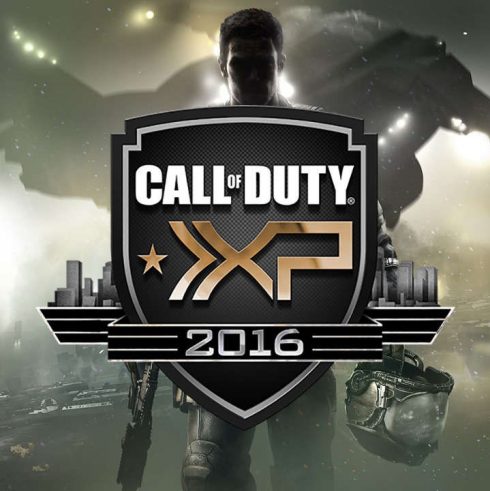
Client: Activision
Campaign: Call of Duty XP 2016
Agency: PMK*BNC
Best Use of Influencer Marketing – Silver Winner

Client: Activision
Campaign: Call of Duty XP 2016
Agency: PMK*BNC
Call of Duty XP is the ultimate Call of Duty experience for any fan of the franchise and a celebration of the passionate community.
PMK*BMC was tasked with drawing national media attention to the 3-day event held in September 2016, as well as the experiential activities available to attendees. It turned to major celebrities and influencers to help get the job done.
Olympic Gold winning phenomenon Michael Phelps, pro football superstar Marshawn Lynch and professional basketball player Karl-Anthony Towns—all big-time Call of Duty fans—met for the first time at COD XP. The three jumped in to play Call of Duty: Infinite Warfare multiplayer with one another providing an ideal photo opp and nice anecdotes to relay during press interviews.
The team hosted additional Call of Duty celebrity and athlete fans over the course of the event, arranging interviews with actress Michelle Rodriguez, professional football player Richard Sherman, professional basketball player D’Angelo Russell and musical performer Snoop Dogg. Their love of Call of Duty shone through via social media posts, live-streamed videos and media interviews.
Behind-the-scenes video and photos captured each day of celebrity activations, as well as footage of the Call of Duty World League Championship, the biggest Call of Duty eSports tournament of the year. The content soared across social driving plenty of exposure for Call of Duty XP.
Bronze Winner
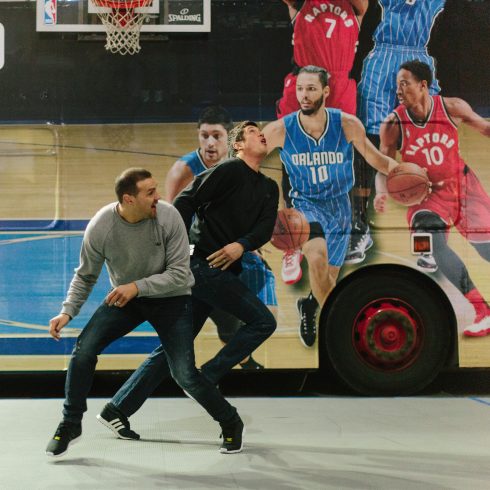
Client: Marriott Rewards
Campaign: #AroundTheWorld in London
Agency: IMG LIVE
Best Use of Influencer Marketing – Bronze Winner

Client: Marriott Rewards
Campaign: #AroundTheWorld in London
Agency: IMG LIVE
Marriott Rewards wanted to create a buzz-worthy consumer engagement that would extend outside the O2 arena and raise awareness for the #AroundTheWorld sweepstakes. To do so, it needed to create authentic content and work with influencers to create a connection between UK culture and the sport of basketball, which isn’t typically top of mind for English audiences.
To spread the word about the sweepstakes to its target group of NBA fans, millennials and frequent business travelers, Marriott Rewards traveled throughout London in a branded double-decker bus that mirrored a basketball court.
Content was captured with celebrities and influencers shooting hoops and interacting with the bus, which was then rapidly pushed out to social channels, encouraging fans to sign up for Marriott Rewards and enter the sweepstakes.
Participants in the campaign included “Creed” star Michael B. Jordan, television presenter Vernon Kay, comedian Paddy McGuinness, Chelsea goalkeeper Asmir Begovic, former Chelsea legend Didier Drogba, Arsenal captain Per Mertesacker, former Arsenal player Robert Pires, X-Factor runner-up Fleur East and NBA legends Rick Fox and Muggsy Bogues.
Celebrities and influencers were also secured to raise awareness for the #AroundTheWorld sweepstakes, which only ran for 36 hours. The campaign generated more than 66 million Twitter impressions, 182,000 Instagram likes and 85,000 Facebook views.
An on-court competition at the O2 Arena gave two lucky Rewards members the chance to shoot for a trip “Around the World,” which equaled 1 million Marriott Rewards points.
Following the competition, Rick Fox surprised the winning Rewards members, announcing both would receive the grand prize trip.
Gold Winner
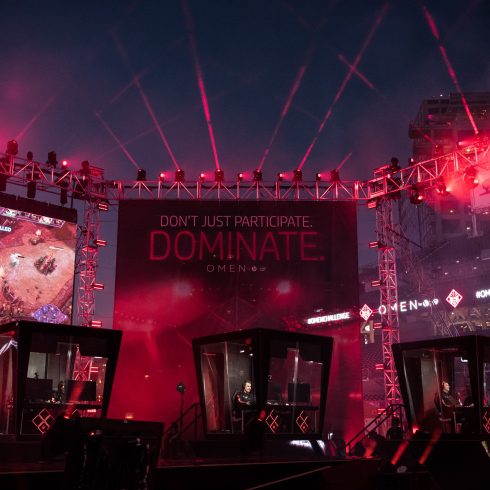
Client: HP
Campaign: HP Omen Challenge
Agency: Infinity Marketing Team
Best Use of Marketing Innovation in a Campaign – Gold Winner

Client: HP
Campaign: HP Omen Challenge
Agency: Infinity Marketing Team
To move in on its competition— Alienware and ASUS—HP Omen reached out to Twitch—a global leader in live streaming video platforms with 100 million unique monthly viewers. The result? The HP Omen Challenge—the first live action game on Twitch!
The Challenge activated Oct 1, 2016 at TwitchCon, an original live gaming tournament that showcased the power and performance of the Omen brand. The event was held before the TwitchCon After Party at Petco Park in San Diego for nearly 7,000 attendees on the ground watching the live action, while millions more tuned in via the livestreams and replay broadcasts.
For the tournament, HP recruited 20 Twitch gamer-influencers to form four all-star teams to play Blizzard Entertainment’s “Hero of the Storm” on HP’s Omen products and accessories.
Special effects like fire, ice, tornado, earthquake, lightening and stink bomb were applied to both challenge and distract players. The infamous HP Omen voodoo mask logo lived in the 30-foot holo-gauze LED tower that brought the logo to life as it became angry and originated spectacular animations related to the tortures throughout each round of the tournament. Depending on the effect, players inside the torture chambers felt extreme heat, freezing temperatures, a tornado barrage of particles blowing in their faces, heavy duty strobe lights, hydraulic shaking quake gaming chairs, and hideous smelling green smoke while trying to perform.
Every few minutes, viewers could go to the Omen Challenge app to vote on what “torture” element to inflict on the players. Results were immediately tabulated and the element with the most votes would be applied.
Clad in head-to-toe Omen Challenge team jumpers, the Twitch gamers would promote the Omen Challenge through a combination of targeted media ads and livestreamed Omen Challenge practice sessions for their followers.
To help amplify the event, HP partnered with Nerdist.com for two hosts to attend and promote the Omen Challenge through live social coverage. Omen products were integrated into segments of “Nerdist News” as well. HP also partnered with gaming influencer Chris Pirillo, founder of LockerGnome, who offered social media support during the HP Omen Challenge.
After the game, a cosplay character from ‘Heroes of the Storm’ carried out the inaugural Omen Challenge trophy, which famous DJ personality and gamer enthusiast T-Pain presented to the winning team among a background of exploding fireworks. A sweepstakes kicked off to increase new followers following the live event with an Omen by HP notebook as the prize.
The HP Omen Challenge reached 1,071,968 live stream viewers and pre-post broadcasts combining for a striking 1,946,921 total minutes—five times the objective set forth by HP—and 34 million+ total impressions. #OMENCHALLENGE trended #4 on Twitter during the event. HP tripled the number of followers on their Twitch TV, Twitter and Facebook Omen channels. In conjunction with the HP Omen Challenge, HP has achieved an amazing 13% penetration of the gaming enthusiast marketplace since the Omen brand’s 2016 launch!
Silver Winner

Client: AT&T
Campaign: AT&T | TOMS Activation
Agency: The Marketing Arm
Best Use of Marketing Innovation in a Campaign – Silver Winner

Client: AT&T
Campaign: AT&T | TOMS Activation
Agency: The Marketing Arm
People often complain that their homes are so small, it’s like living in a shoebox. But AT&T managed to improve its favorability rating and provide footwear to needy children by inviting consumers to step inside a replica shoebox—albeit a 50-foot one.
AT&T had long worked with shoe company TOMS on the latter’s One on One initiative, which donates a pair of shoes for every pair purchased. To celebrate TOMS’s 10th anniversary last year, AT&T created a multimedia campaign to boost awareness of the One on One program.
AT&T and The Marketing Arm built a giant replica of a TOMS shoebox in May at Southern California’s iconic Santa Monica Pier. An animated video greeted visitors, who were then fitted with virtual-reality headsets so that they could follow in the footsteps of a young man’s travels to hand-deliver a pair of donated shoes to a child in Colombia. Attendees could also activate—via foot movements, of course—two touchscreen walls detailing the history of the program and sit in 360-degree video viewing spheres to watch behind-the-scenes footage of the VR film.
Just outside the giant shoebox was an equally oversize AT&T/TOMS photo frame. Visitors received a commemorative Polaroid of themselves within the frame in exchange for posting a virtual photo on their social media with the hashtag #celebrategood. To encourage social sharing, AT&T and TOMS donated a pair of shoes for every tagged photo.
AT&T used content gathered from the event to further promote One on One online. And it hit the road during the second half of the year with a scaled-down version of the installation, bringing it to 11 AT&T-owned or -sponsored properties, including several college football games.
The campaign generated 20.3 million media impressions and 36.6 million social impressions, with more than 4 million digital engagements and 14,000 onsite engagements from May through December. It generated positive opinions about AT&T as well: Among those who might have heard about the campaign but didn’t step foot into the Brobdingnanian shoebox, 57% said their perception of AT&T had improved; among those who did interact with it, that percentage was a whopping 92%.
Bronze Winner
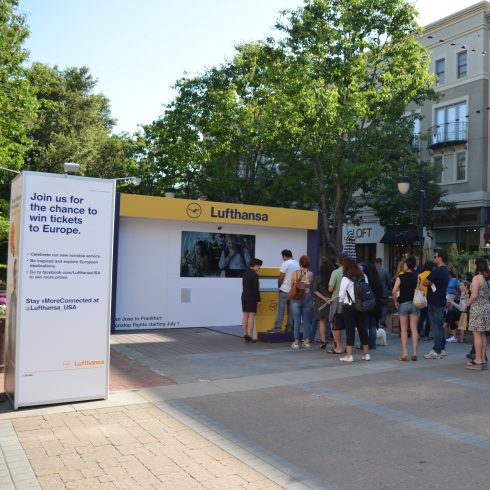
Client: Lufthansa Airlines
Campaign: #MoreConnected
Agency: Department Zero
Best Use of Marketing Innovation in a Campaign – Bronze Winner

Client: Lufthansa Airlines
Campaign: #MoreConnected
Agency: Department Zero
To celebrate and promote its new nonstop service between San Jose, California, and Frankfurt, Germany, Lufthansa wanted a unique experiential marketing activation that would engage and educate tech-savvy international travelers.
The activation took place over four days at Santana Row, a premier outdoor shopping district in the heart of San Jose. A street team of German Lufthansa flight attendants invited shoppers to participate in a unique opportunity to win free airfare. The flight attendants then issued mock airline tickets that provided details of the promotion, redeemable at the Lufthansa #MoreConnected experience.
When consumers arrived at the display, they discovered a large Lufthansa branded container that displayed videos about traveling to Europe and a digital game to win prizes. While waiting in line, participants could explore inside a first-class cabin on a Lufthansa airplane via Oculus Rift virtual reality experience.
Participants scanned their ticket to trigger the start of the game, which was a photo challenge featuring iconic German and European landmarks. Participants had to find as many differences as they could between two nearly identical photos in a short amount of allotted time. Prizes were awarded at the end of each turn.
And for some lucky participants, their #MoreConnected airline tickets activated a live video stream with a Lufthansa flight attendant in Frankfurt—along with free airline travel to Frankfurt.
The campaign received 15 million total impressions, including 90,000 estimated in-person engagements (180% of goal reached).
Gold Winner

Client: Intel
Campaign: Intelligent Point of Sale: Reinventing PC Shopping
Agency: Arc Worldwide
Best Use of Shopper Marketing – Gold Winner

Client: Intel
Campaign: Intelligent Point of Sale: Reinventing PC Shopping
Agency: Arc Worldwide
A powerful Intel processor has the potential to create amazing experiences in shoppers’ lives. But at retail, it’s invisible, hidden away inside the PC.
To take the pain and confusion out of buying a computer, and at the same time, bring to life the amazing human experiences that the processor would bring to shoppers’ lives, Intel invented an intuitive technology developed in-house called IPOS—Intelligent Point of Sale.
IPOS takes the place of the confusing array of cardboard, fact tags and spec sheets that were cluttering the PC aisle. Parallax motion and arresting visual imagery call shoppers to the screen. Then, they’re invited to interact with glimpses of the potential inside. With one click or tap, shoppers learn exactly how each PC spec will make their life cooler. For example, Gigahertz are brought to life with fire breathing dragons and storage capacity is given a sense of wonder with 10,000 glowing lanterns rising into the midnight sky. By launching it from the cloud, it brings to life and updates 400,000 PCs simultaneously around the world in 36 different languages.
IPOS is like a personal sales associate inside each computer. It provides shoppers customized experiences based on the exact processor, hard drive, memory, screen resolution, and a host of other features for each separate device.
For shoppers who start online, another proprietary tool breaks down all of the complicated decisions and turns them into a few simple questions that result in a recommendation that is uniquely customized to their lives.
When using a PC with IPOS, 67% of shoppers are more likely to consider purchasing an Intel-powered device. When using a PC with IPOS, 60% of shoppers are more likely to recommend an Intel-powered device. Shoppers that used IPOS increased their average spend per device by 11%, or $76. After completing the Shopper Recommendation Tool, consumers clicked “Shop Now” 71% of the time, the highest percentage ever for Intel. In fact, these tools helped Intel achieve the best sales on Black Friday in company history.
Silver Winner
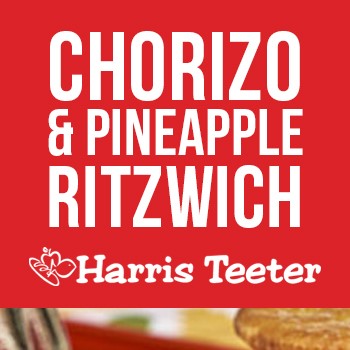
Client: RITZ Crackers
Campaign: RITZ & Harris Teeter “Stack It Up” with a Winning Recipe
Agency: HMT Associates
Best Use of Shopper Marketing – Silver Winner

Client: RITZ Crackers
Campaign: RITZ & Harris Teeter “Stack It Up” with a Winning Recipe
Agency: HMT Associates
In a crowded category, RITZ Crackers set out to boost sales and increase usage occasions by offering creative new ways to enjoy the classic cracker with a focus on social occasions and entertaining.
It was critical to secure out-of-aisle collaborations at retail and to create programs that would speak to each retailer’s unique shopper journey through an insights-based approach and customized communications.
The RITZ brand’s national “Stack It Up” campaign was providing shoppers with simple recipes and pairings—from PB&J to tomato and basil—that showcased the creativity of the brand’s “Life’s Rich” platform. HMT Associates was challenged to translate this national platform into a retail-specific shopper execution that uniquely targeted the Harris Teeter shopper.
To identify the right in-store partner, the team analyzed purchase affinities of Harris Teeter shoppers looking for opportunities outside of traditional pairings (e.g. cheese and crackers) and found a strong correlation between sausage and cracker purchases. With eyes on the meat department, data revealed shoppers over-indexed for purchasing Johnsonville Sausage and RITZ Crackers by 51%.
The RITZ brand teamed up with Johnsonville Sausage to create a Cinco de Mayo “Stack It Up” experience. The exclusive “Chorizo & Pineapple RITZwich” was born, and a dynamic in-store and online campaign fired up Harris Teeter shoppers.
A video demo of the “Chorizo & Pineapple RITZwich” recipe was posted on Harris Teeter social media, featuring a simple call–to-action that drove shoppers to HarrisTeeter.com for full recipes and money saving offers. In stores shelf tags, signage and coupon tear pads helped drive basket growth. Displays in the meat department captured out-of-aisle real estate and a temporary price reduction of $1 off the purchase of two RITZ packages enhanced the consumer incentive. The video delivered more than 25,000 views and other social executions helped drive sales.
During the course of the campaign, RITZ reversed the downward sales trend and experienced significant incremental package growth, delivering over 288% vs. the previous year. Incremental category and total category results were also both up 19.8% and 6.6% respectively.
During May 1-15, 2016, the program yielded a 290% increase in displays (over the previous year) across 235 Harris Teeter locations.
Bronze Winner

Client: KitchenAid
Campaign: KitchenAid 10,000 Cupcakes
Agency: Catapult
Best Use of Shopper Marketing – Bronze Winner

Client: KitchenAid
Campaign: KitchenAid 10,000 Cupcakes
Agency: Catapult
KitchenAid was looking to drive consumer awareness and influencer recommendations, elevate the brand, and maintain a strong in-store presence and positive share-of-mind with sales associates.
In addition, KitchenAid also hoped to strengthen its 14-year “Cook for the Cure” partnership with Susan G. Komen by by ramping up its “10,000 Cupcakes, One Great Cause” campaign.
KitchenAid customers are passionate cooks who love to express their creativity on social media, over-indexing for sharing food photos. They’re passionate about causes, but had become skeptical that simply purchasing ‘pink products’ makes a difference.
To meet its objectives, instead of asking for money, “10,000 Cupcakes, One Great Cause” asked consumers to bake cupcakes, snap a picture and share on Twitter/Instagram with thehashtags #10000cupcakes #donate. For each post, KitchenAid pledged a $1 donation to Susan G. Komen to support the fight against breast cancer, up to $10,000.
With a total campaign budget of $90,000, this mechanism was simple and fun. Cooking enthusiasts got to exercise their passion for making treats, while those living with breast cancer received a symbolic offering of love and caring. Leveraging the current cupcake craze, it aligned perfectly with both the KitchenAid brand equity and mission of Susan G. Komen.
Throughout October—Breast Cancer Awareness month—consumers saw Susan G. Komen talk up the program nationally and locally through social posts and saw fresh posts about the program from KitchenAid.
When consumers got to a retail store, they were wowed by giant “10,000 Cupcakes, One Great Cause” posters, festive pink balloons, photo backdrops, photo booths, recipe brochures and table tents directly on KitchenAid appliances that linked the brand to the cause.
Gold Winner

Client: Contours
Campaign: The Baby Stroller Test-Ride
Agency: FCB Chicago
Best Use of Social/Viral Marketing in a Campaign – Gold Winner

Client: Contours
Campaign: The Baby Stroller Test-Ride
Agency: FCB Chicago
When shopping for baby strollers, research can help you determine whether the options meet safety criteria. But determining how comfortable the strollers are for their petite passengers is more difficult—after all, babies can’t tell you after a test drive, “Ouch, the seat incline hurts my neck” or “Oof, this is one bumpy ride.” So Contours, a maker of premium strollers, decided to give adults a test drive instead, in an adult-size replica of its Bliss stroller.
Contours had a pint-size budget of just $55,000. So rather than creating adult versions of its strollers for multiple retailers nationwide, it offered test rides to shoppers only in select Buy Buy Baby stores. Those who agreed to climb up in the giant stroller and be pushed along sidewalks and in parks were filmed to create attention-grabbing digital content that Contours disseminated via Facebook, Twitter, Periscope and YouTube ads, as well as on its own social channels.
The video of grown men and women commenting on the comfort of the ride while being babied in a huge buggy generated plenty of giggles among viewers—and plenty of social sharing. In less than a month the video earned 53 million views, fueling a Twitter conversation that reached 48 million people and contributing to 479 million earned media impressions, with Good Morning America and Today, among others, covering the campaign.
All this buzz led to a 225% leap in traffic to the product pages of Contours’ website and a 15% push in year-over-year unit sales per store per week. Contours’ parent company, Kolcraft, was pleased enough by the results that it is considering adapting the tactic for some of its other baby products—so if you come across an adult-size baby carrier on your travels, don’t be surprised.
Silver Winner
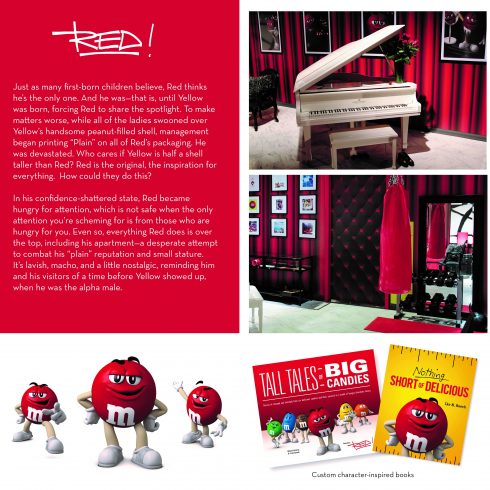
Client: Mars Chocolate North America
Campaign: M&M’S 75th Anniversary
Agencies: Weber Shandwick, Jack Morton Worldwide, Genuine
Best Use of Social/Viral Marketing in a Campaign – Silver Winner

Client: Mars Chocolate North America
Campaign: M&M’S 75th Anniversary
Agencies: Weber Shandwick, Jack Morton Worldwide, Genuine
M&M’S 75th Anniversary provided the backdrop for Mars to not only showcase the brand’s history but to create a modern experience completely centered around M&M’S most beloved asset: the spokescandies.
Life-sized apartments meticulously designed for all six M&M’S spokescandies were created right in the middle of NYC. Each apartment exemplified the unique personalities of the individual spokescandies and seamlessly showcased their history in a way that felt authentic and innovative.
For example, Red’s was lavish and super-macho to convey his “plain M&M’S” reputation, while Orange’s was a “safe zone” to ease his paranoia about being eaten. From the walls and room décor, to each custom-designed coffee table book, no detail was overlooked to bring 75 years of history to life in the spokescandies’ natural environment.
Each room featured interactive engagements designed for social sharing. Guests could play the piano in Red’s room, jump in the ball pit in Yellow’s pad, try on shoes in Ms. Green’s room, or even hide out in Orange’s panic room wearing one of his many disguises. The entire evening was capped off by an exclusive live performance of M&M’S 75th Anniversary Anthem “Candyman” by Aloe Blacc and DJ Zedd, right in the spokescandies’ living room. More than 400 guests attended the party including 140 media/ influencers, whose shares resulted in 6.9MM impressions—with many sharing more posts than their original contracts.
To ensure that those who could not make it to the super-secret apartments could have the same immersive experience, 360-video was shot for each room to create an exact replica of the apartments as a virtual reality app. Every live detail was captured and brought to life digitally, allowing users to navigate the apartments and zoom in on every element that brought each spokescandy to life. This extension gave anyone the chance to walk through the apartments and take in every bit of delicious history.
The campaign generated more than 341 million impressions and growing. Coverage of the 75th anniversary milestone appeared in top industry and entertainment outlets including the TODAY Show, USA Today, Adweek, CNBC, Parade, iHeartRadio and Billboard. Now that’s sweet!
Bronze Winner
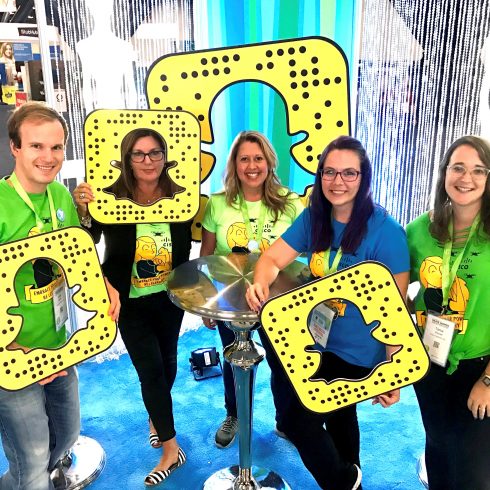
Client: Cisco
Campaign: WeAreCisco Snapchat
Best Use of Social/Viral Marketing in a Campaign – Bronze Winner

Client: Cisco
Campaign: WeAreCisco Snapchat
Looking to connect with and entice future talent to work at Cisco, the company turned to Snapchat to deliver the most raw, authentic view of what it was like to work for a company that was often considered a “big tech dinosaur” in a way that showed off its cool startup mentality.
For consistency, Cisco’s Talent Brand #WeAreCisco mission is the same across all social media channels: To tell stories about current employees.
The Talent Brand team asked 20 “Love Where You Work” social media ambassadors if they would help kick off a #WeAreCisco Snapchat pilot where the company would hand them the keys.
Every day was an employee takeover. With logistics and security in place, the program became a key channel for Cisco’s Talent Brand and the company went from 20 Snapchatters to over 70—from the U.S., Canada, Ireland, the U.K., Israel, Dubai, Saudi Arabia, Mexico City, Bangalore and Russia.
Then, NASDAQ asked the #WeAreCisco Snapchatters to take over its Times Square account for National Techies Day in October 2016. Simultaneous stories (NASDAQ and WEARECISCO) cross-promoted each other—and it was the best day for views for both channel.
A full 10 months after launch, the campaign had 6.3M+ minutes of Snapchat stories viewed, 1M+ total Snap views and 700 average views per day.
In addition to extending two job offers as a result of the #WeAreCisco Snapchat campaign, employee posts raved about what a positive experience it was working for Cisco.
As a result, Cisco broadened its reach and changed the perceptions of the company from a stodgy dinosaur to a place where employees are trusted and showcased—becoming influencers in their own right.
Gold Winner
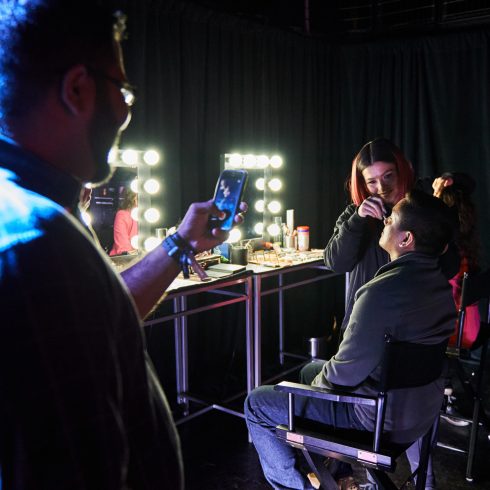
Client: Jaguar Land Rover
Campaign: The Art of Performance
Agencies: Automotive Events, Mindshare, Spark 44
Best Use of Video – Gold Winner

Client: Jaguar Land Rover
Campaign: The Art of Performance
Agencies: Automotive Events, Mindshare, Spark 44
To launch the XE, a compact premium sport sedan, Jaguar wanted to reach a new millennial audience who had luxury tastes, but not necessarily a luxury budget just yet.
The brand had less than half the budget of its last product launch and more than double the sales goals in the first year and needed to develop a campaign that would be efficient but still breakthrough in a cluttered marketplace.
Jaguar looked to reinvent the test drive with the Art of Performance Tour, an immersive brand experience that combined physical and virtual test drives and took the showroom to millennials rather than expecting them to come to a dealership. The experience offered the exclusive opportunity to drive the new XE sedan on the street and on a high performance closed course, months before it became available to buy.
Attendees experienced the art of movie making and high performance driving through a personalized action-adventure 2-minute movie created using custom developed, patent pending video stitching technology. Each personalized film was delivered within minutes and instantly shareable. A partnership with Facebook and Instagram gave attendees the chance to create a 7-second profile video featuring their stunt driving scene.
Sign-ups were done online, and events were scheduled in the morning before work, at lunchtime, through the evening and on weekends. The tour took guests through six interactive environments, including a check-in where they were fit with RFID wristbands they wore throughout the event, the showroom, the movie, the actual test drive, a lounge featuring refreshments and comfy seating, and an exit survey.
Eighty-five percent of participants in the Art of Performance Tour were new to the brand, and the target millennial audience shared content at a rate of 50%. The campaign generated more than 242MM social impressions, 86.4MM PR impressions and 49MM video views. Conversations on Twitter reached a potential 5.5MM followers, and Jaguar received over 3,000 pre-orders for the new XE.
Silver Winner

Client: Frito-Lay
Campaign: Cheetos Store
Agency: The Marketing Arm
Best Use of Video – Silver Winner

Client: Frito-Lay
Campaign: Cheetos Store
Agency: The Marketing Arm
During the Christmas season, consumers’ thoughts turn to gifts, ornaments, mistletoe and eggnog. What they don’t turn to are Cheetos. The snack food’s parent company, Frito-Lay, changed that by launching a line of Cheetos-branded gifts. Purportedly designed by Cheetos mascot Chester Cheetah, the offerings ranged from Couleur de Cheetos Bronzer (a bold orange hue, of course) and Cheeteau Perfume to the Purrfect Onesie pajamas and the $20,000 Eye of the Cheetah ring-and-earring set.
Available on a dedicated website, CheetosStore.com, the products were the first nonfood items Frito-Lay ever sold. The website debuted on Black Friday. To promote it, Frito-Lay and The Marketing Arm created a video of a Cheetos fashion show, complete with models parading down the runway garbed in leggings adorned with Cheetos logos and orange scarves and cummerbunds emblazoned with black paw prints. The video played in a shoppable Facebook Collection ad, which generated more than 1.5 million visits to the Cheetos Store site. A print mail piece reminiscent of the glamorous holiday catalogs by the likes of Neiman Marcus and Tiffany also promoted the line.
The novelty of the range captured the attention of consumer and trade press, which combined with social media, resulted in more than 1.3 billion impressions in the six weeks between Thanksgiving and Christmas. The millennials who were the target market for the campaign ate up the cheesy yet weirdly chic products. Most items—including the $20,000 jewelry set—sold out in the first week, and the ultimate sell-through rate exceeded 93%. What’s more, the gift collection made shoppers hungry for Cheetos as well, with holiday season sales of the snacks up 10.5% from the previous year.
Bronze Winner
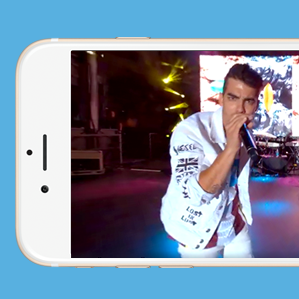
Client: Marriott Rewards
Campaign: Demi Lovato and DNCE Live in 360
Agency: Marriott International
Best Use of Video – Bronze Winner

Client: Marriott Rewards
Campaign: Demi Lovato and DNCE Live in 360
Agency: Marriott International
Marriott Rewards’ vision was simple: Create raving brand fans through amazing experiences, innovative content and memorable creative.
Marriott’s first-ever 360 video experience transported Rewards members beyond the front row bringing deeply engaging, in-concert experiences to life.
By leveraging Marriott Rewards’ partnership with Universal Music Group and unprecedented access to artists Demi Lovato and DNCE, each 360 video was designed to provide unparalleled access and control to viewers at home and on-the-go. A live event intended for thousands was instantly transformed to reach millions.
Three professional virtual reality cameras were strategically placed around the stage and throughout the audience allowing for maximum exposure and unprecedented access to each artist’s performance. Filmed live and with only one take, there was no room for error.
Scenes from each of the three cameras were then seamlessly stitched together, color corrected and optimized for sound. The addition of visual effects made for an even more immersive and visually stunning viewing experience.
DNCE’s “Cake by the Ocean” feels like one big party, putting the viewer in the driver’s seat to explore the band’s electrifying performance. Demi Lovato slows it down with her performance of “Body Say,” where viewers are treated to an intimate, one-on-one experience amplified by visual effects.
In addition to traditional metrics, the campaign achieved “best in class” brand lift results including 26.9% ad recall, 31.4% lift in brand awareness and 147.5% lift in brand interest search.
The campaign also created raving brand fans who consumed more than nine years of 360 video content in less than two weeks.
Gold Winner
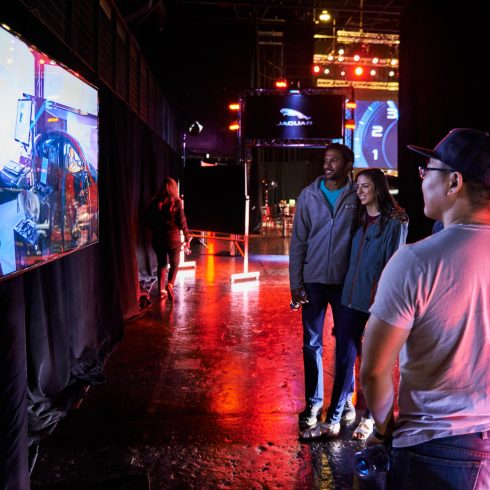
Client: Jaguar Land Rover
Campaign: The Art of Performance
Agencies: Automotive Events, Mindshare, Spark 44
Best Vehicle-Based Campaign – Gold Winner

Client: Jaguar Land Rover
Campaign: The Art of Performance
Agencies: Automotive Events, Mindshare, Spark 44
To launch the XE, a compact premium sport sedan, Jaguar wanted to reach a new millennial audience who had luxury tastes, but not necessarily a luxury budget just yet.
The brand had less than half the budget of its last product launch and more than double the sales goals in the first year, and needed to develop a campaign that would be efficient but still breakthrough in a cluttered marketplace.
Jaguar looked to reinvent the test drive with the Art of Performance Tour, an immersive brand experience that combined physical and virtual test drives and took the showroom to millennials rather than expecting them to come to a dealership. The experience offered the exclusive opportunity to drive the new XE sedan on the street and on a high performance closed course, months before it became available to buy.
Attendees experienced the art of movie making and high performance driving through a personalized action-adventure 2-minute movie created using custom developed, patent-pending video stitching technology. Each personalized film was delivered within minutes and was instantly shareable. A partnership with Facebook and Instagram gave attendees the chance to create a 7-second profile video featuring their stunt driving scene.
Sign-ups were done online, and events were scheduled in the morning before work, at lunchtime, through the evening and on weekends. The tour took guests through six interactive environments, including a check-in where they were fit with RFID wristbands they wore throughout the event, the showroom, the movie, the actual test drive, a lounge featuring refreshments and comfy seating, and an exit survey.
Eighty-five percent of participants in the Art of Performance Tour were new to the brand, and the target millennial audience shared content at a rate of 50%. The campaign generated more than 242MM social impressions, 86.4MM PR impressions and 49MM video views. Conversations on Twitter reached a potential 5.5MM followers, and Jaguar received over 3,000 pre-orders for the new XE.
Silver Winner
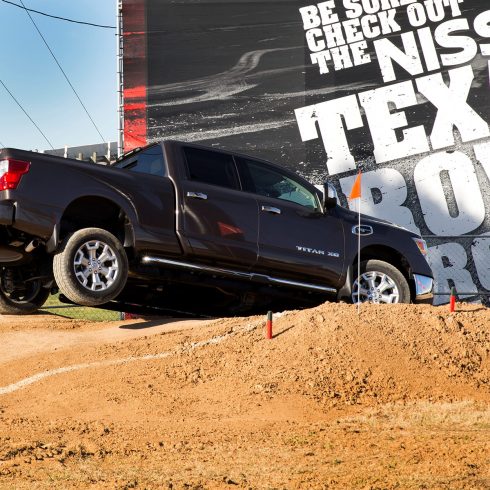
Client: Nissan Trucks
Campaign: State Fair of Texas
Agency: The Marketing Arm
Best Vehicle-Based Campaign – Silver Winner

Client: Nissan Trucks
Campaign: State Fair of Texas
Agency: The Marketing Arm
The Texas State Fair is a “must-be” place to showcase pickup trucks and Nissan was there, firing on all cylinders, to showcase its entire truck line up.
First, the team intercepted drivers of pickups with an offer of free parking in a Nissan-owned parking lot called The Free Trucking Experience, which featured large parking spaces and bold terrain. Plus, new for 2016, the team put truck drivers in the seat of the Nissan TITAN for an unforgettable, rugged driving experience. Then, drivers were challenged to take on the most rugged obstacles in Texas at the Nissan Proving Grounds.
In its second year, the TITAN of Texas Challenge at the Proving Grounds went even bigger to deliver a one-of-a-kind competition where athletes, local media and professional TV personalities proved they had what it takes to be a TITAN. On an “American Ninja Warrior” inspired course, 430 athletes matched their strengths with Nissan TITAN’s unique selling propositions of speed, strength, and agility and competed for over $60,000 in prizes.
Chart-topping country music artists and local Heisman trophy winners made special appearances during the annual Texas/Oklahoma Red River Showdown game.
Lead generation was up 387% over the prior year, Titan of Texas Challenge competitors were up 20%, and 1,980 test drives of the Titan were completed. Most importantly, Nisan ended up becoming the most decorated automotive brand by the Texas Auto Writers Association Annual Texas Truck Rodeo, capturing six honors, including SUV of Texas with the 2017 Armada.
This exposure and the event contributed to Nissan setting a new all-time U.S. company sales record of 1,564,423 cars sold in a calendar year, a 5.4% increase over the prior year.
Bronze Winner

Client: Southwest Airlines
Campaign: Southwest Porch
Agency: 206Agency
Best Vehicle-Based Campaign – Bronze Winner

Client: Southwest Airlines
Campaign: Southwest Porch
Agency: 206Agency
In every city where Southwest Airlines lands a plane, it’s a priority for the brand to develop a strong relationship with the surrounding community.
To strengthen these bonds, Southwest built a vehicle featuring its Southwest Porch to tour the country and hit festivals. Inspired by the atmosphere of a front porch being a place of social communion, relaxation and a community’s heart, Southwest brought a mobile Porch to each locale.
From afar, guests could see the bold white logo lettering atop the vehicle. Upon arrival, signage throughout the space welcomed guests, invited them to participate, and playfully underscored Southwest brand values.
Invited guests were told to “take a seat anywhere” and use any of the chairs available at the Porch. In markets where guests were familiar with the brand, it was a gentle nod to Southwest’s open seating policy. In newer markets, it stood as a conversation starter.
It was equally important to deliver upon the brand promise that Southwest is first and foremost about people. To treat people with premium hospitality, staff invited guests to sit back and relax in classic, wooden Adirondack chairs under the shade of an awning or umbrella.
To deepen the engagement, the Porch offered a variety of activities. Brand ambassadors were never too far away with peanuts and pretzels for guests to snack on. Visitors signed up for sweepstakes at iPad entry locations, in which one random winner was drawn from every location the Porch visited.
The Southwest Porch was personalized for every event and market. Inside, props catered to the theme of the event, from chef hats and fruit baskets to Longhorn foam fingers and pom-poms. To elevate the experience, custom activities included traditional Mexican Folklorico dancers in Oakland, a blues legends acoustic sessions in Chicago, and screen-printed, commemorative concert tote bags at the Grand Ole Opry.

